50 parting thoughts from the 2016 U.S. Open

NEW YORK – Fifty parting thoughts from the 2016 U.S. Open, where Angelique Kerber took home her second major title of the season and Stan Wawrinka won his third career Grand Slam title.
• Angelique Kerber is both your women's champion and your new No. 1 ranked player. She is also the women's 2016 MVP and, after Saturday's title, a likely Hall of Famer. In this event she won with poise and fitness and defense and lefty craft. But not power. For the entire tournament she hit seven aces in seven matches. As we wrote the other day, young players, understandably, dream of becoming Roger Federer or Serena Williams or Rafael Nadal. But a more practical player to emulate might be Kerber, who simply wrings all she can from her game. Good for her.
• As he has in his career (and this year, and this tournament) Stan Wawrinka went from good to great on Sunday. After dropping the first set in the final against Novak Djokovic, Wawrinka elevated his game, used the crowd to his advantage and—for the third straight year—won a major, this time the 2016 U.S. Open. Wawrinka may be 5-19 in his head-to-head against Djokovic. But three of those five wins came at Grand Slams.
As it happened: Stan Wawrinka beats Novak Djokovic in U.S. Open final
• Karolina Pliskova, the runner-up, had one of those tournaments when everything went from black-and-white went to Technicolor. She beat both Williams sisters, showed off flat power off the ground to match her booming serve and played a strong first-time major final. She's now No. 6 and who wants to bet she won't be ranked higher this time next year?
• When he retires, Novak Djokovic will likely recall this as his strangest major. He was injured; so were many of his opponents. And while this enabled him to advance, he was never able to find a real rhythm. That bit him in the final, when he couldn't finish off Wawrinka. Djokovic will hang onto his top ranking. And you can hardly call a two-major season a disappointment. But the aura has really diminished since Paris.
As it happened: Angelique Kerber beats Karolina Pliskova to win U.S. Open final
• What a year for the Murray clan. This time, we're talking Jamie who teamed with Bruno Soares to win the doubles, beating Spaniards Pablo Carreno Busta and Guillermo Garcia-Lopez in the final. In women’s doubles Lucie Safarova and Bethanie Mattek-Sands beat Caroline Garcia and Kristina Mladenovic in the final.In their first Slam since their split, Martina Hingis (with CoCo Vandewghe) and Sania Mirza (with Barbora Strycova) each lost to Garcia/Mladenovic, but the all-French team wasn't able to win their second Slam title of 2016. Instead, Mattek-Sands/Safarova notched their third major title together after winning the Aussie and French Opens in 2015.
• Playing together for the first time, Laura Siegemund and Mate Pavic won the mixed beating Rajeev Ram and CoCo Vandeweghe in the finals. G’Day Mate: Pavic and Siegemund split $150,000 for the title. Before this event, Pavic had won barely $500,000 for his career.
• I feel guilty even mentioning juniors without linking the peerless coverage of Colette Lewis. (Note the presence of 10 American girls in the round of 16.) On Sunday, Canada’s Felix Auger-Aliassime defeated Serbia’s Miomir Kecmanovic to win the junior boys’ singles title, while American Kayla Day beat Viktoria Kuzmova to take home the girls’ singles title.
Novak Djokovic rips shirt off during U.S. Open semifinal match
• Pity that Andy Murray’s smashingly successful summer ended with a whimper. Or a gong and then a whimper. In the quarterfinals, Murray was undone by some sound issues on the big court—nothing an audio engineer and 50 weeks can’t solve—and fell in five sets to Nishikori.
• For all intents, Serena Williams’s strange year ended Thursday with her semifinal loss to Karolina Pliskova. Coming off a three-Slam season in 2015, winning only one-third of that total this year is a letdown, especially when coupled with a disappointing Olympics. If you’re Serena—who, all together now, turns 35 soon—the consolation from 2016, apart from winning Wimbledon, is this: you played deep into all four majors. It’s not as though her game has gone into to steep decline. Just a few matches here and there—sometimes battling injury, sometimes not—and this year could have been much different.
• The good news for quarterfinalist Juan Martin del Potro: he is back in the conversation. And his ranking will soon get him into any draw. The less good news: It is still unclear whether a player with his backhand can win Slams. Beat anyone on a given day? Sure. Have the durability to make it through seven rounds with a mediocre backhand? Problematic.
U.S. Open 2016 women's final photos
Karolina Pliskova, Angelique Kerber
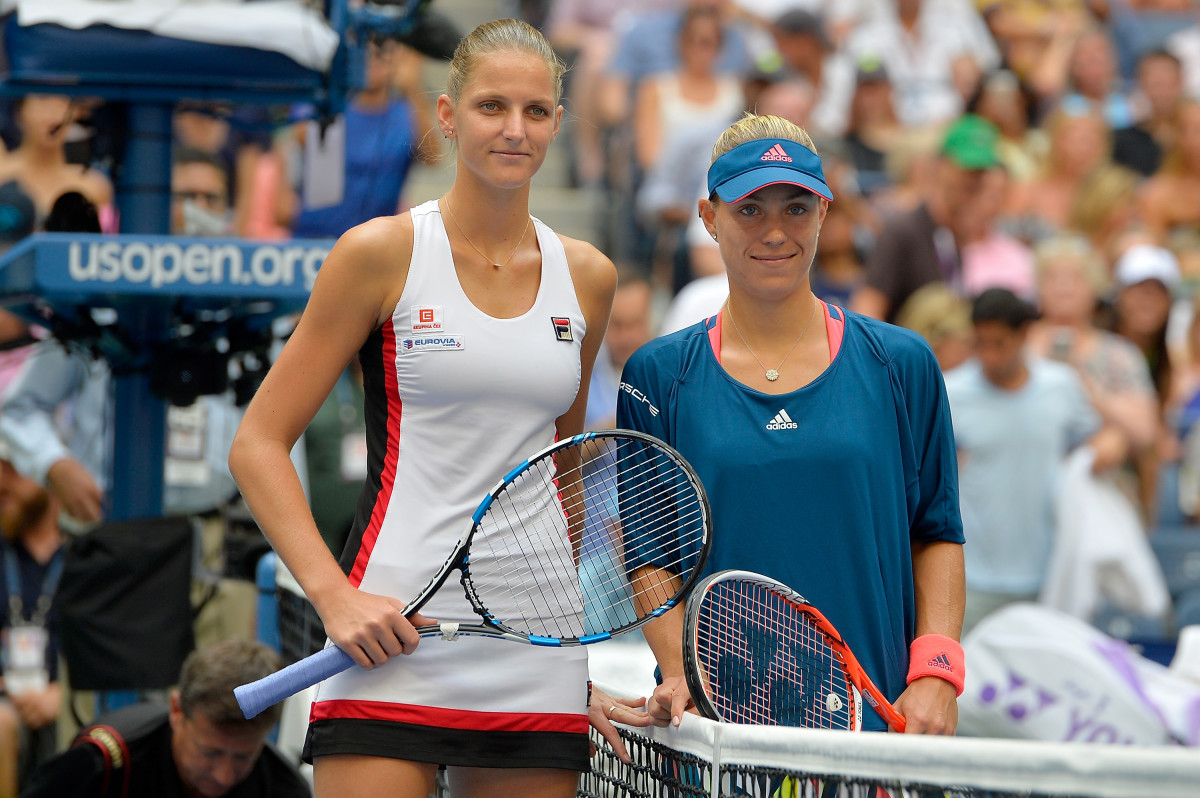
Angelique Kerber
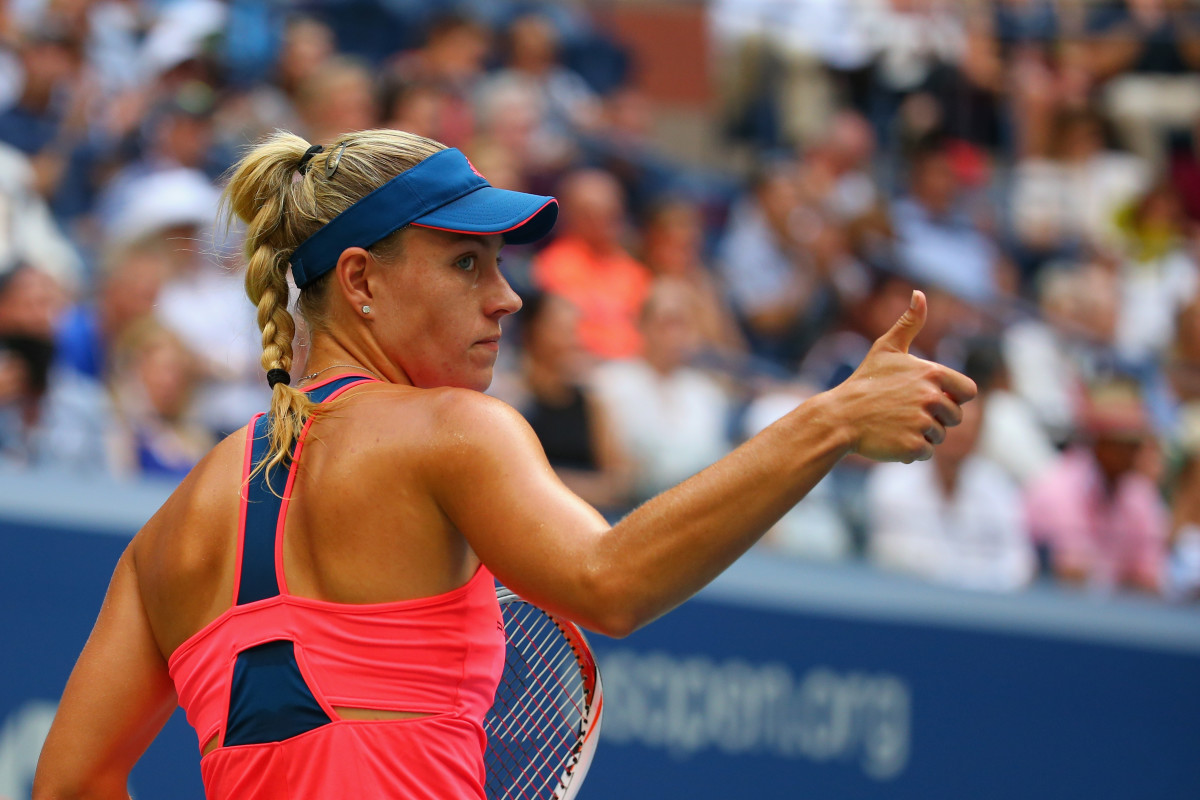
Angelique Kerber
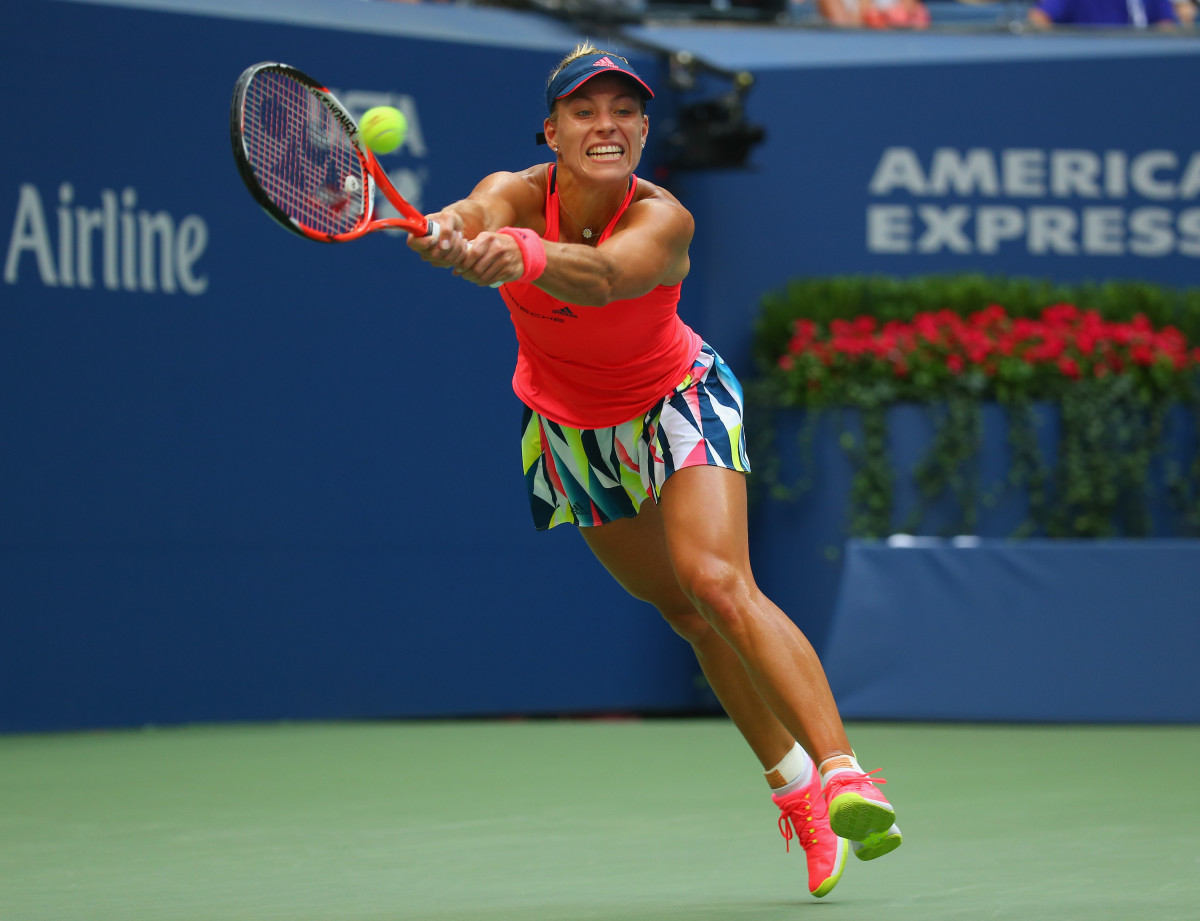
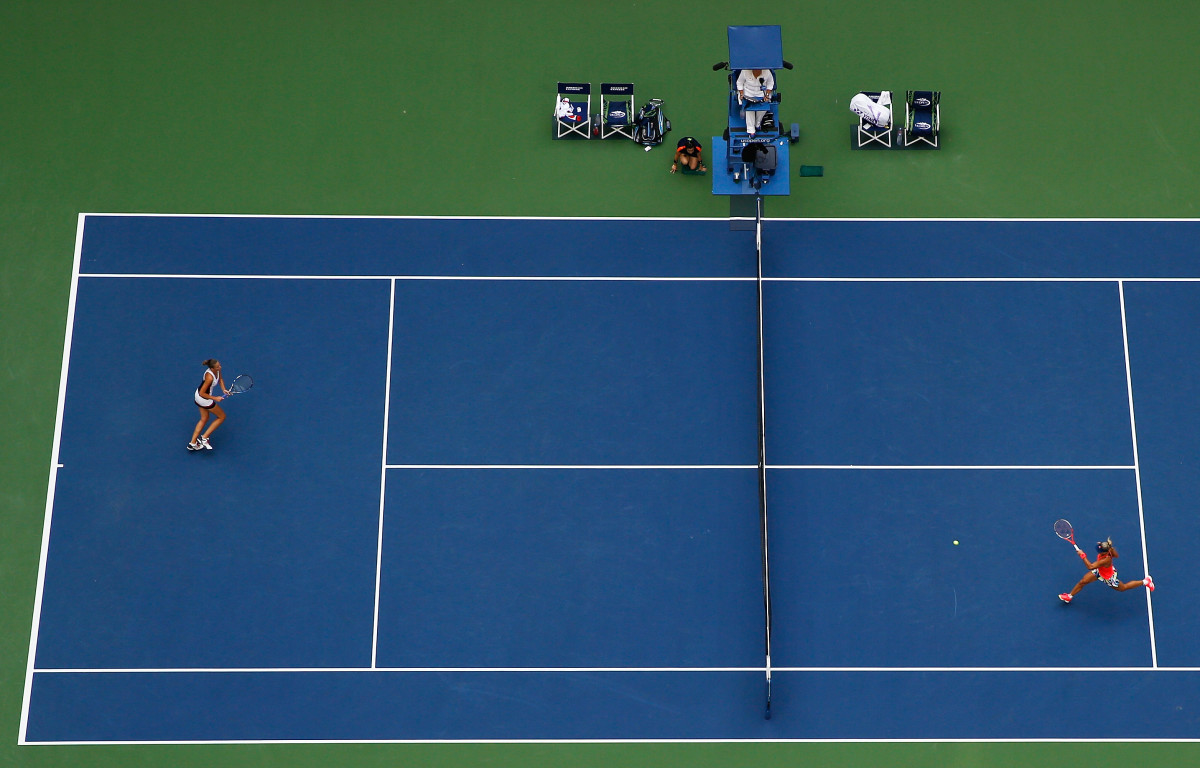
Angelique Kerber
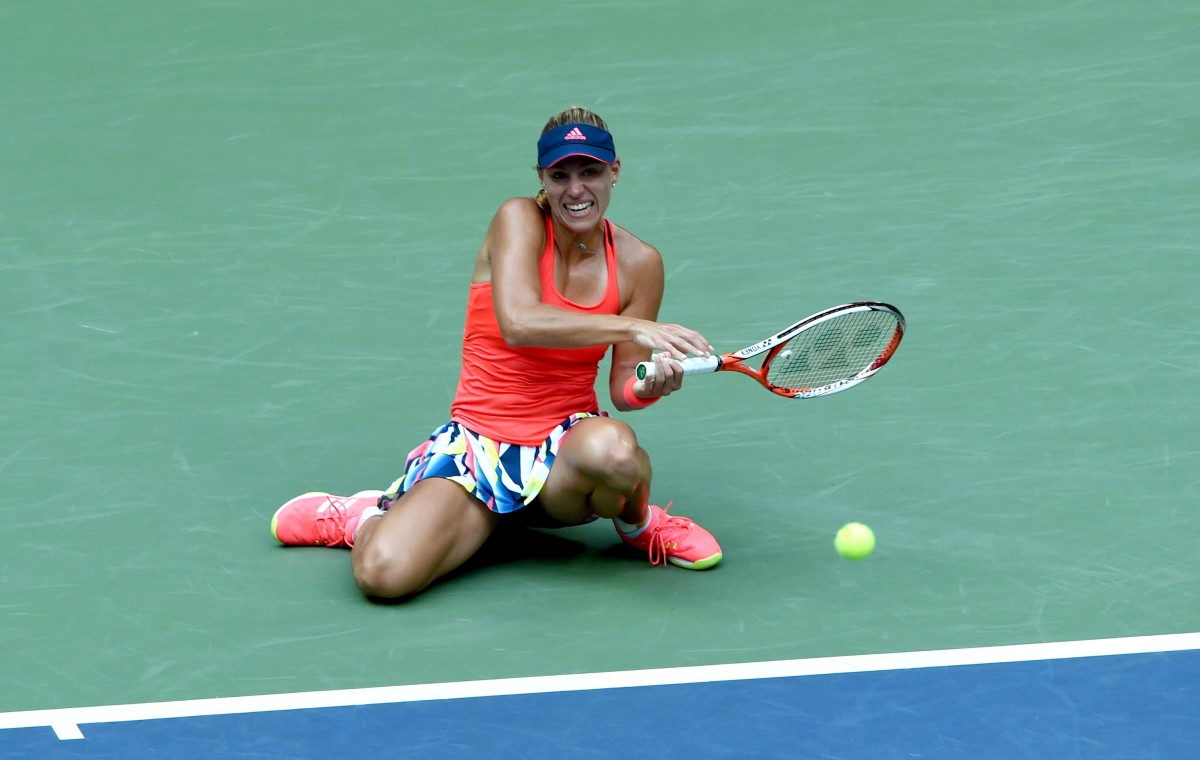
Angelique Kerber
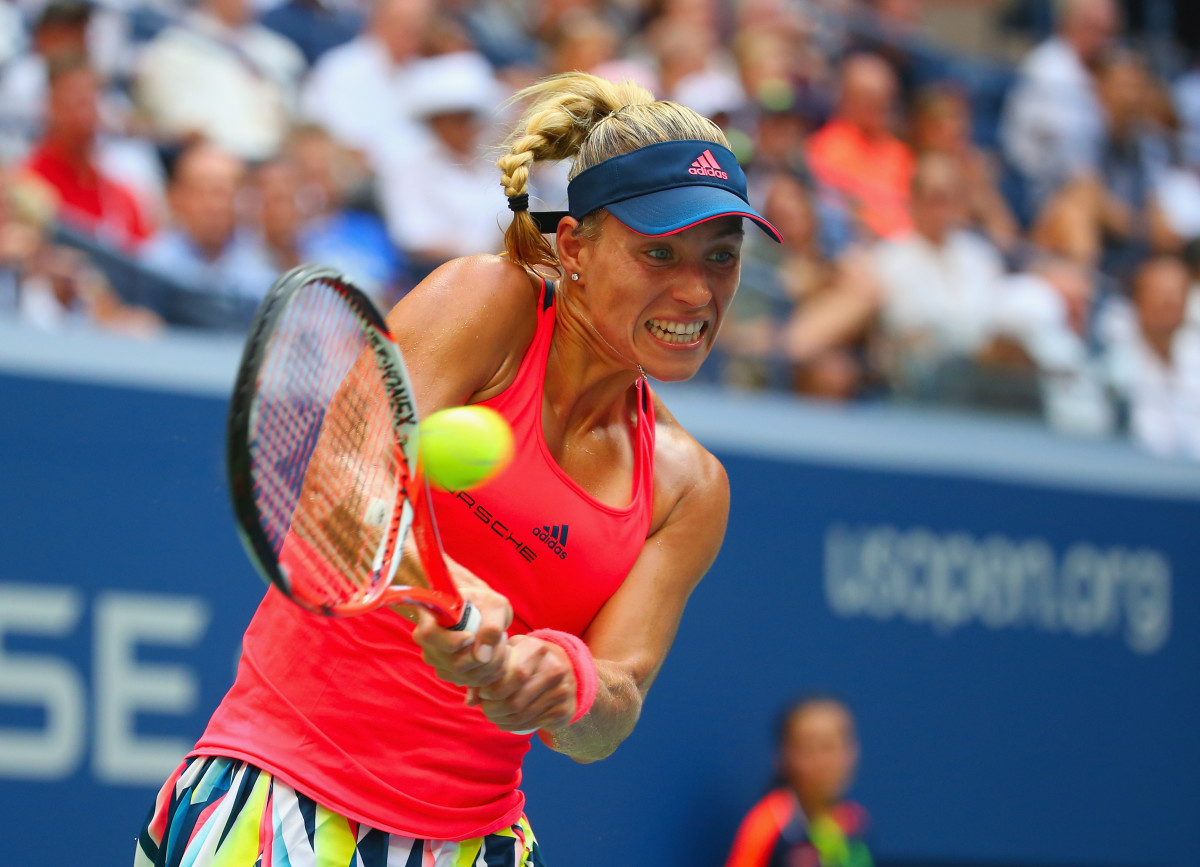
Karolina Pliskova
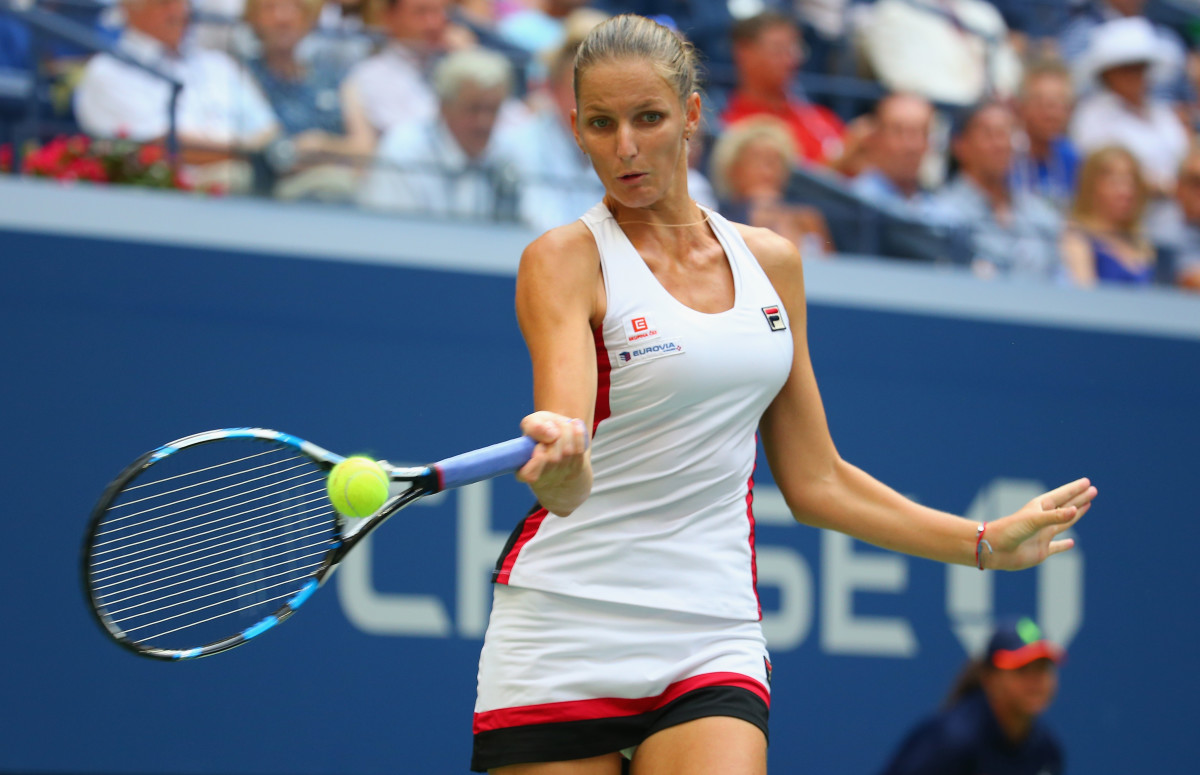
Angelique Kerber
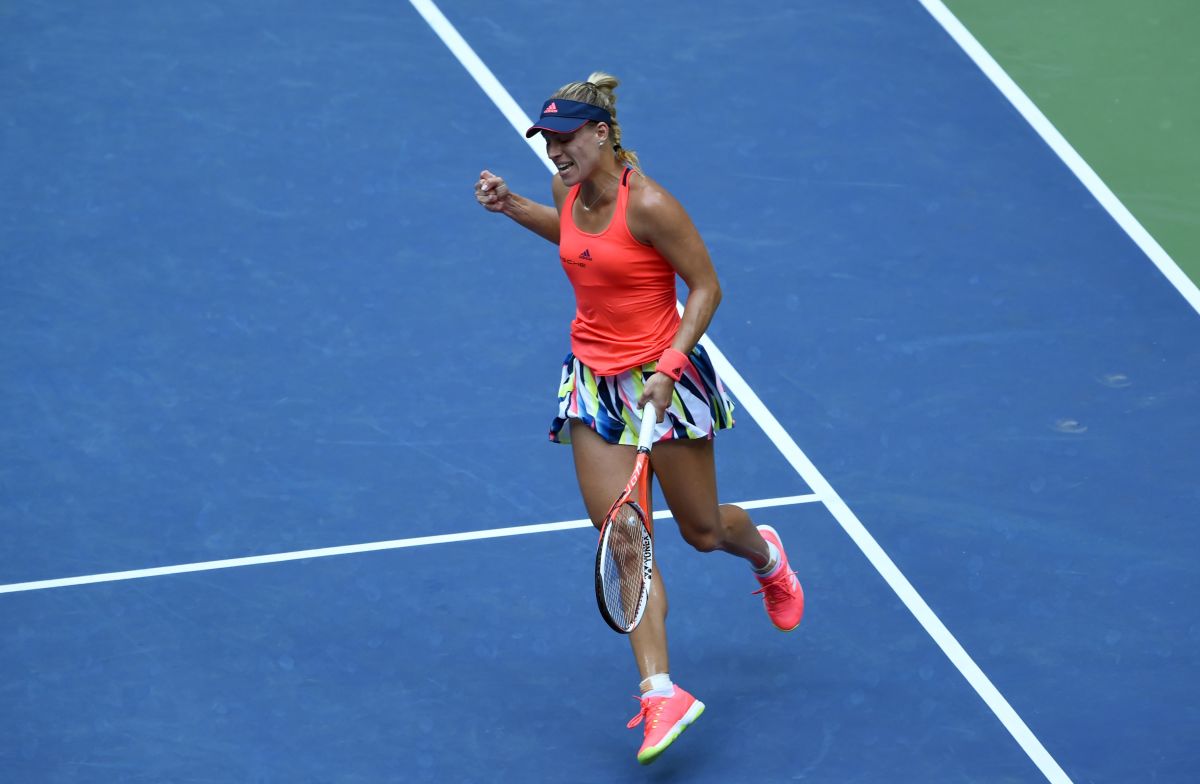
Karolina Pliskova
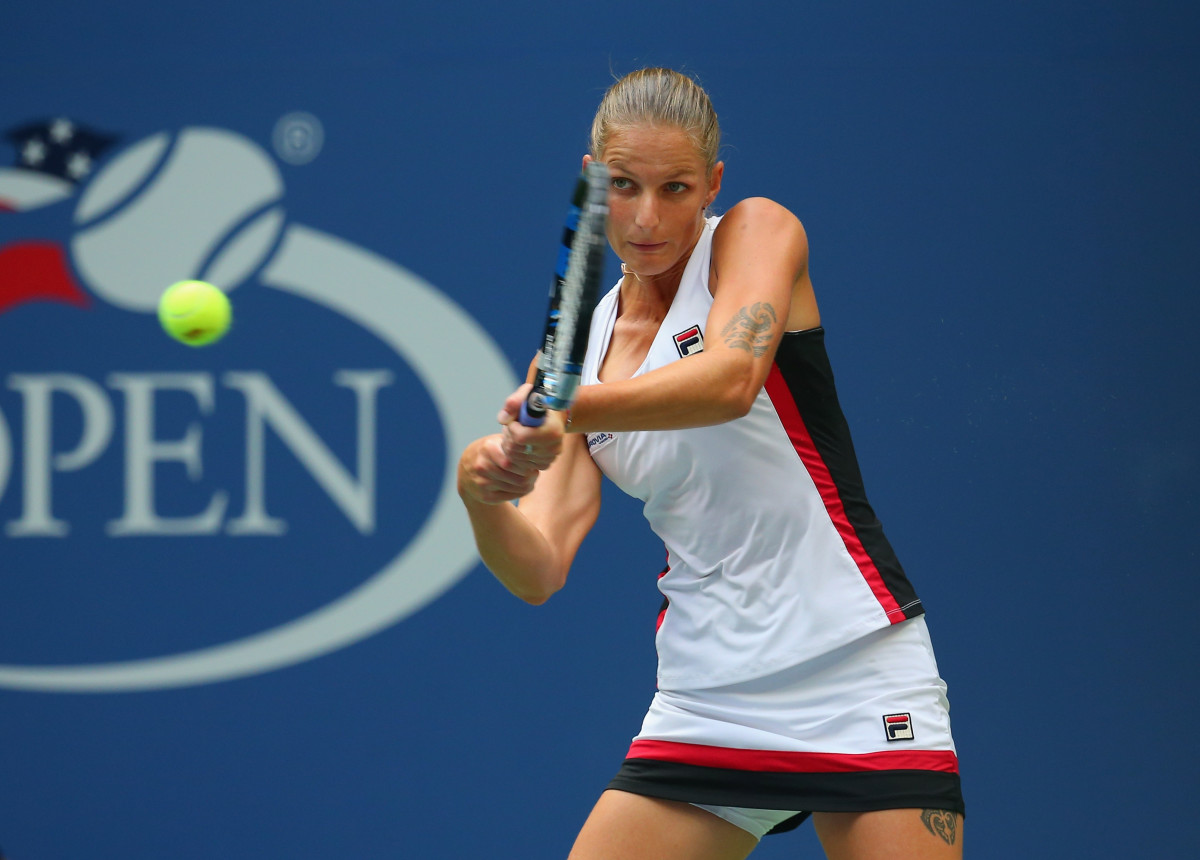
Angelique Kerber
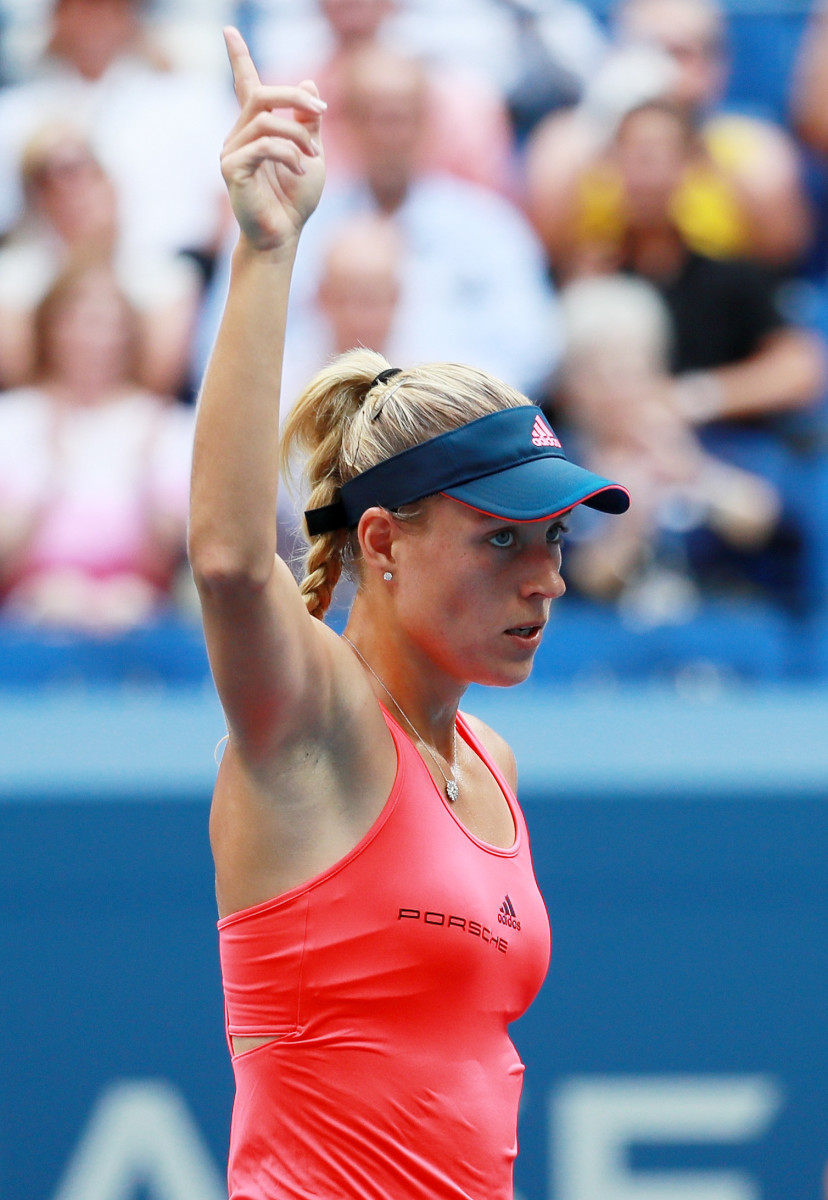
Angelique Kerber
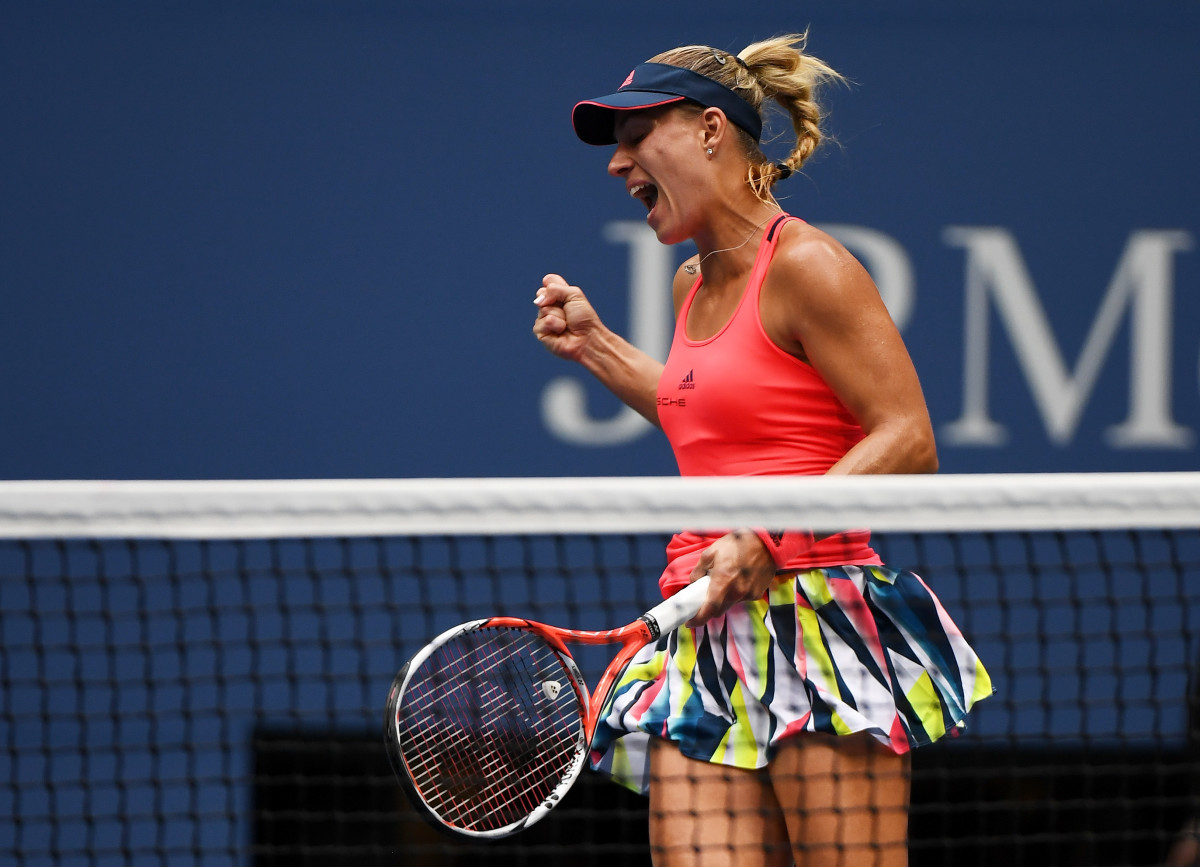
Angelique Kerber
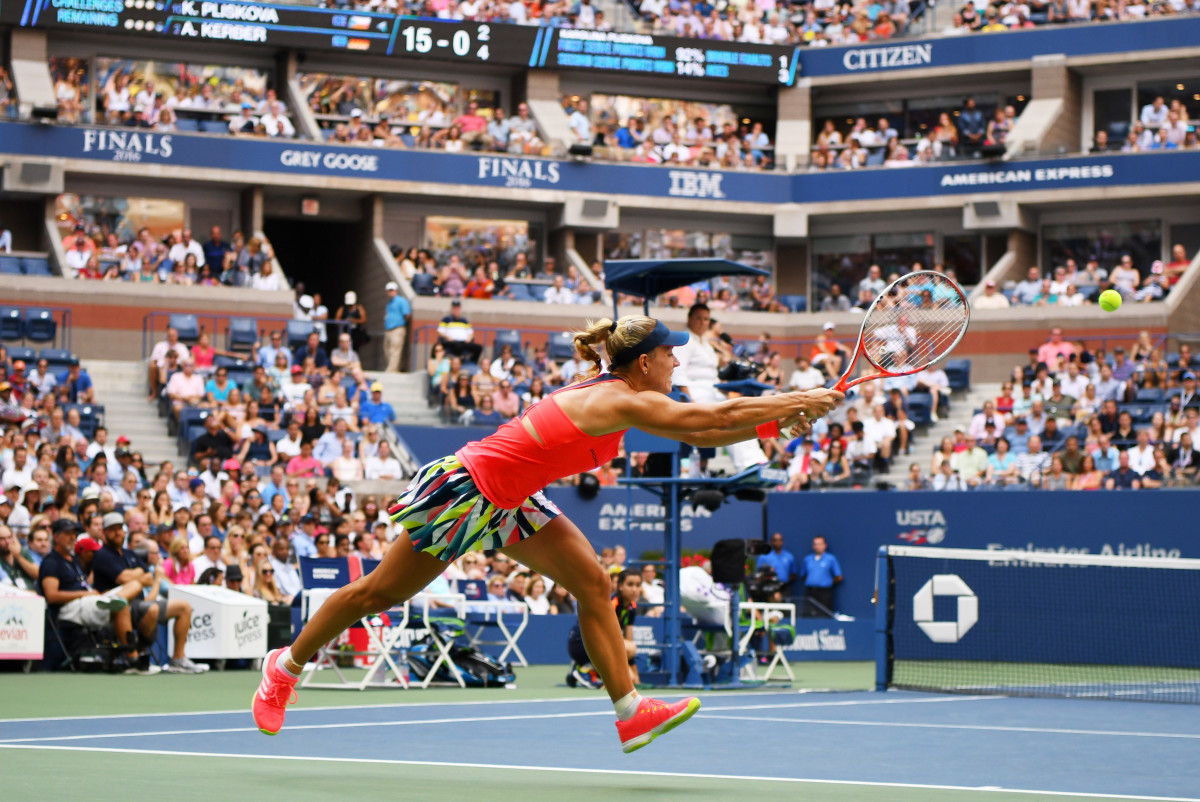
Angelique Kerber
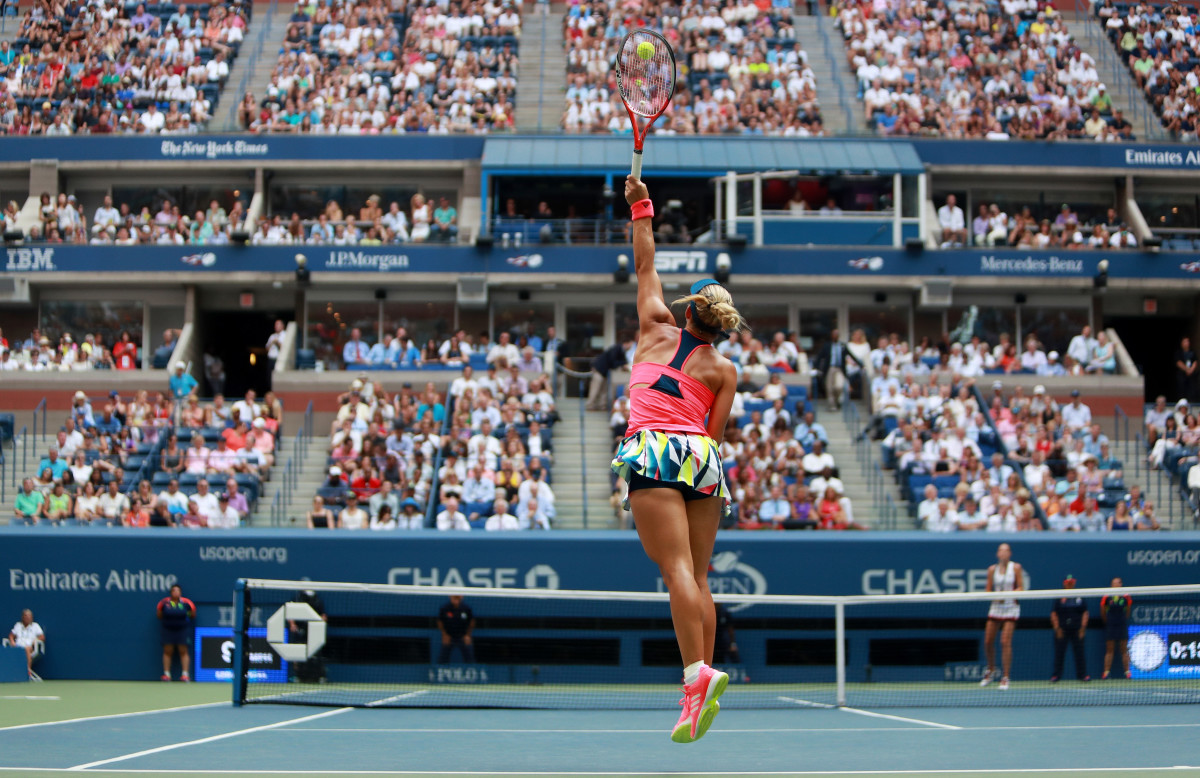
Karolina Pliskova
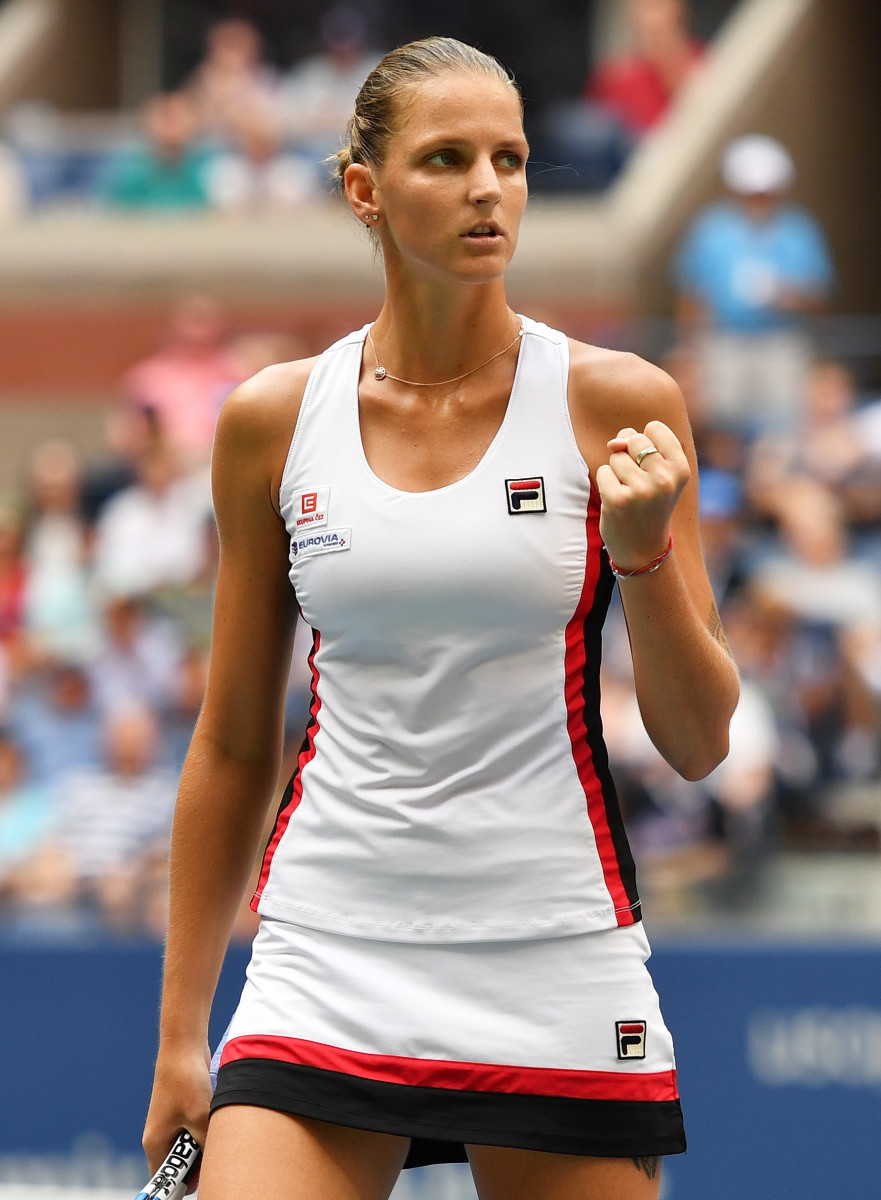
Karolina Pliskova
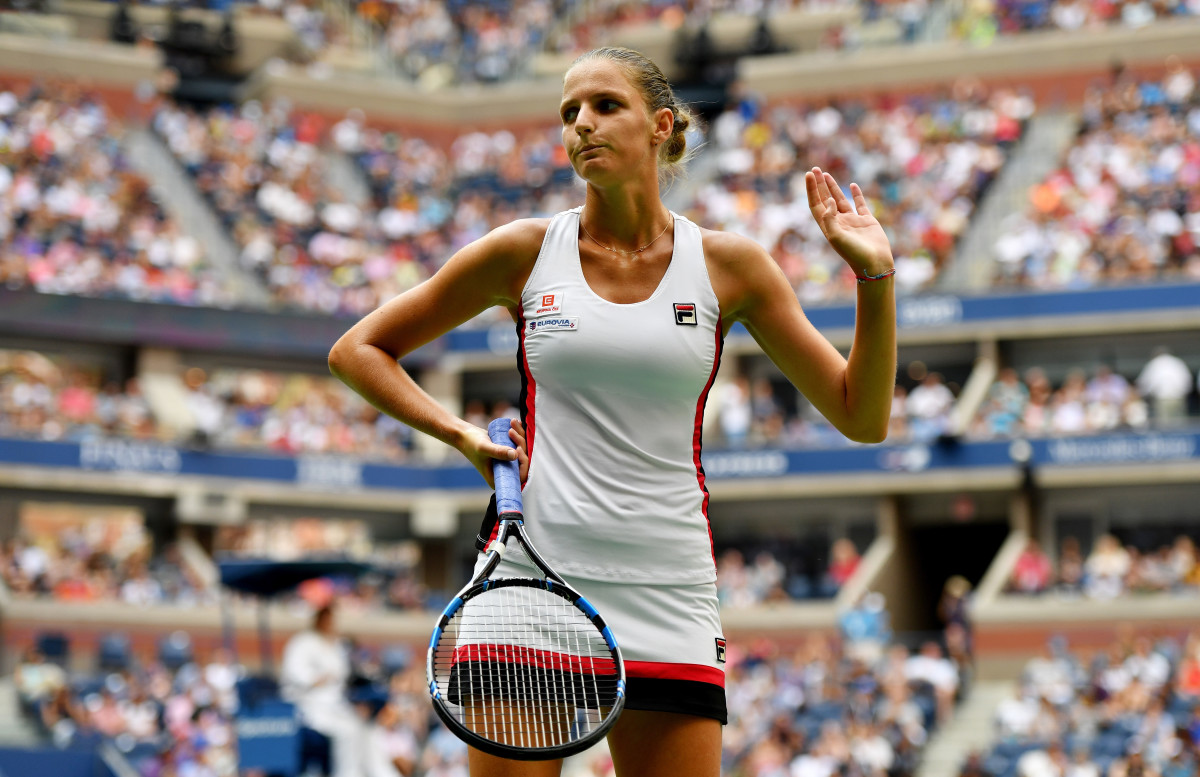
Angelique Kerber
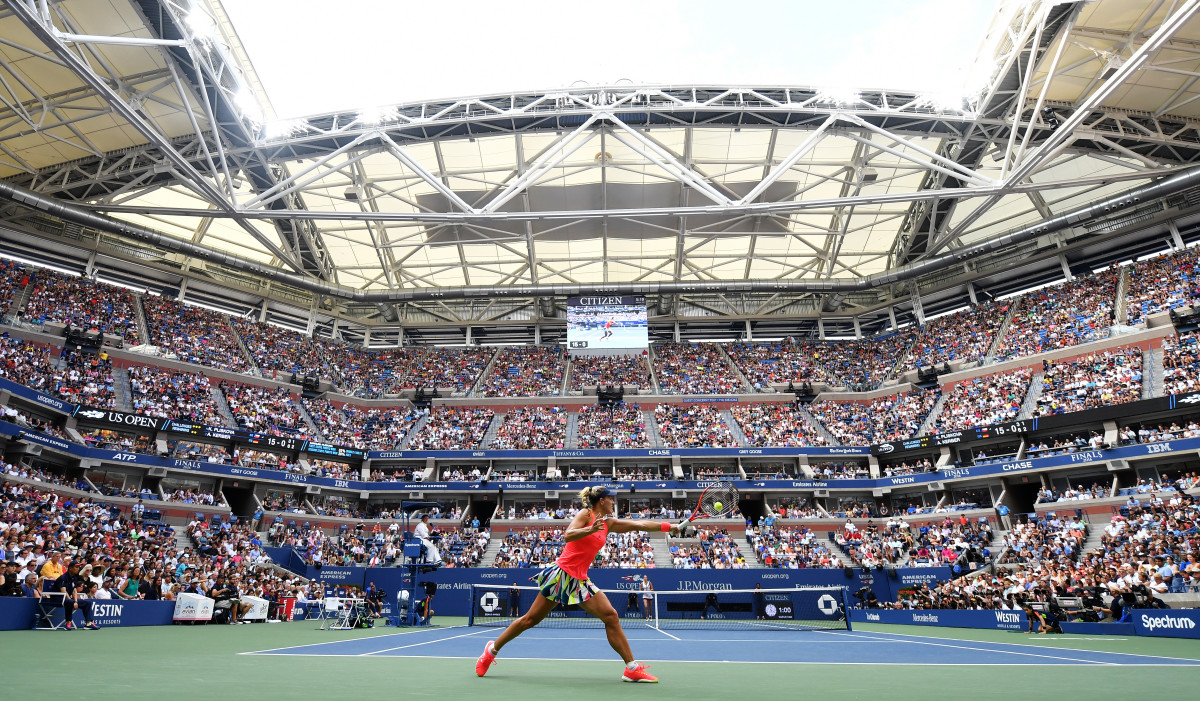
Karolina Pliskova
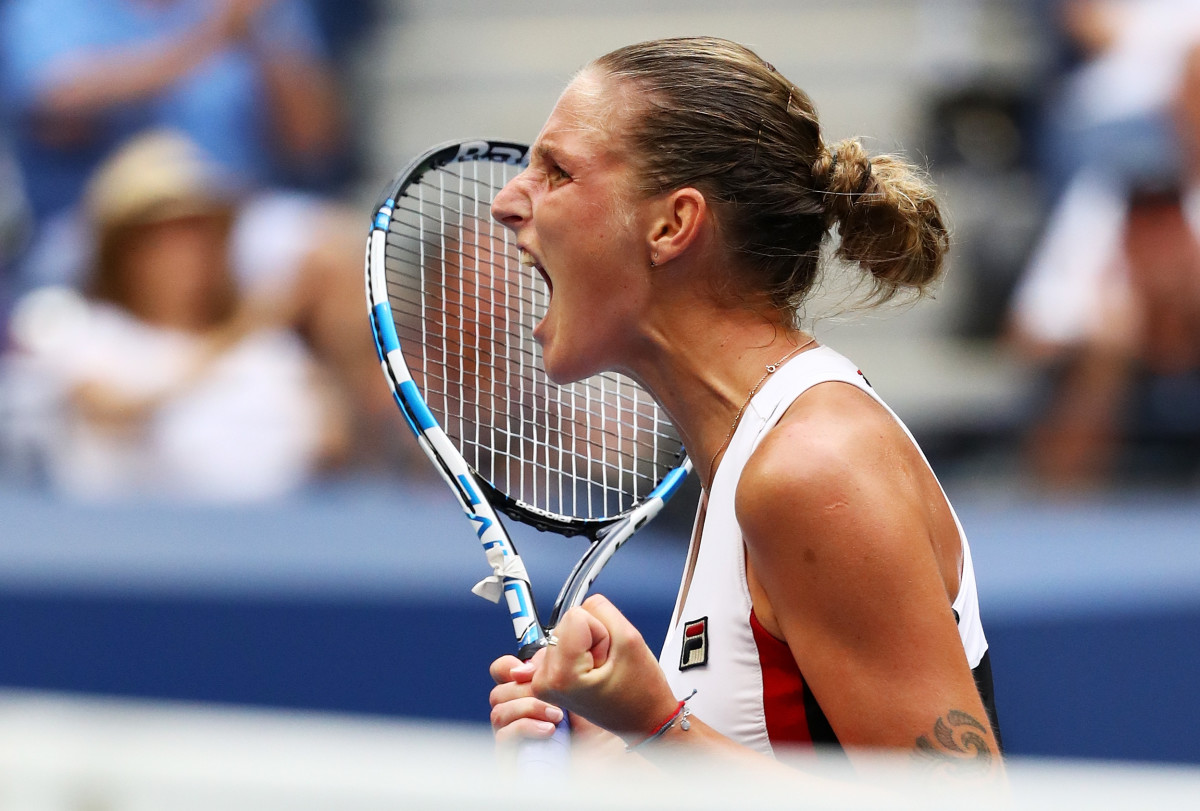
Karolina Pliskova
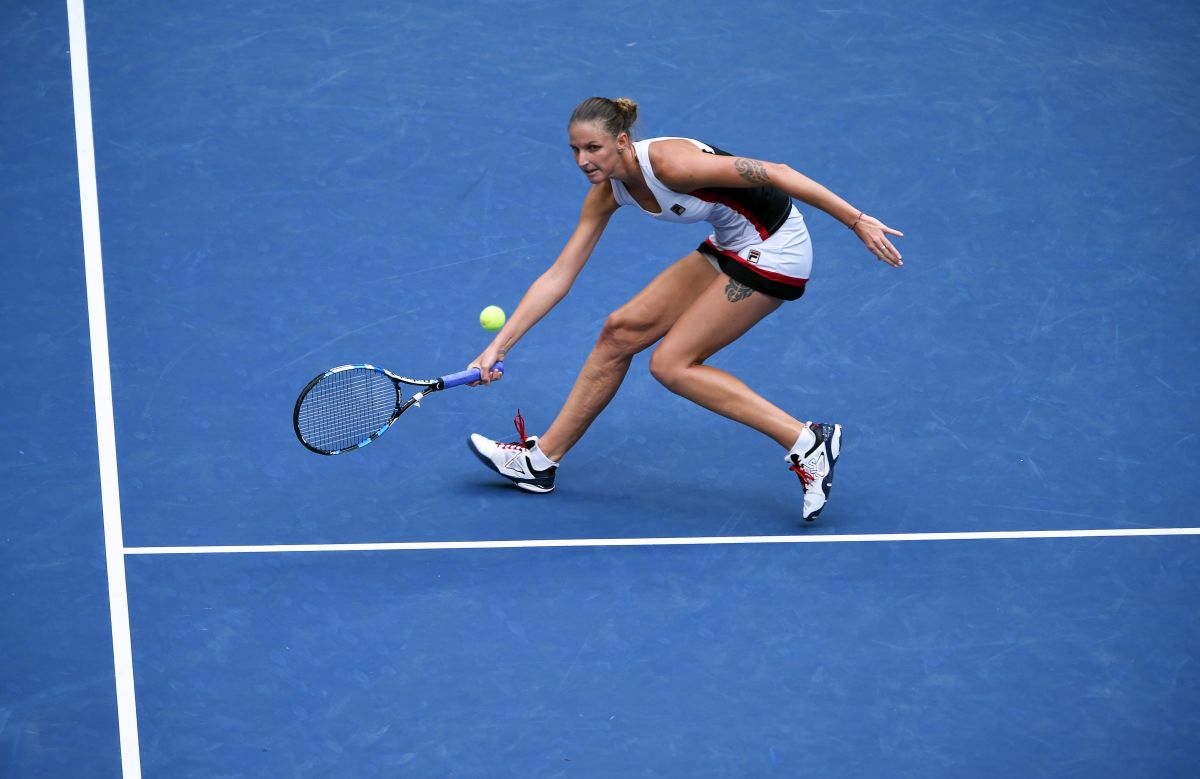
Karolina Pliskova
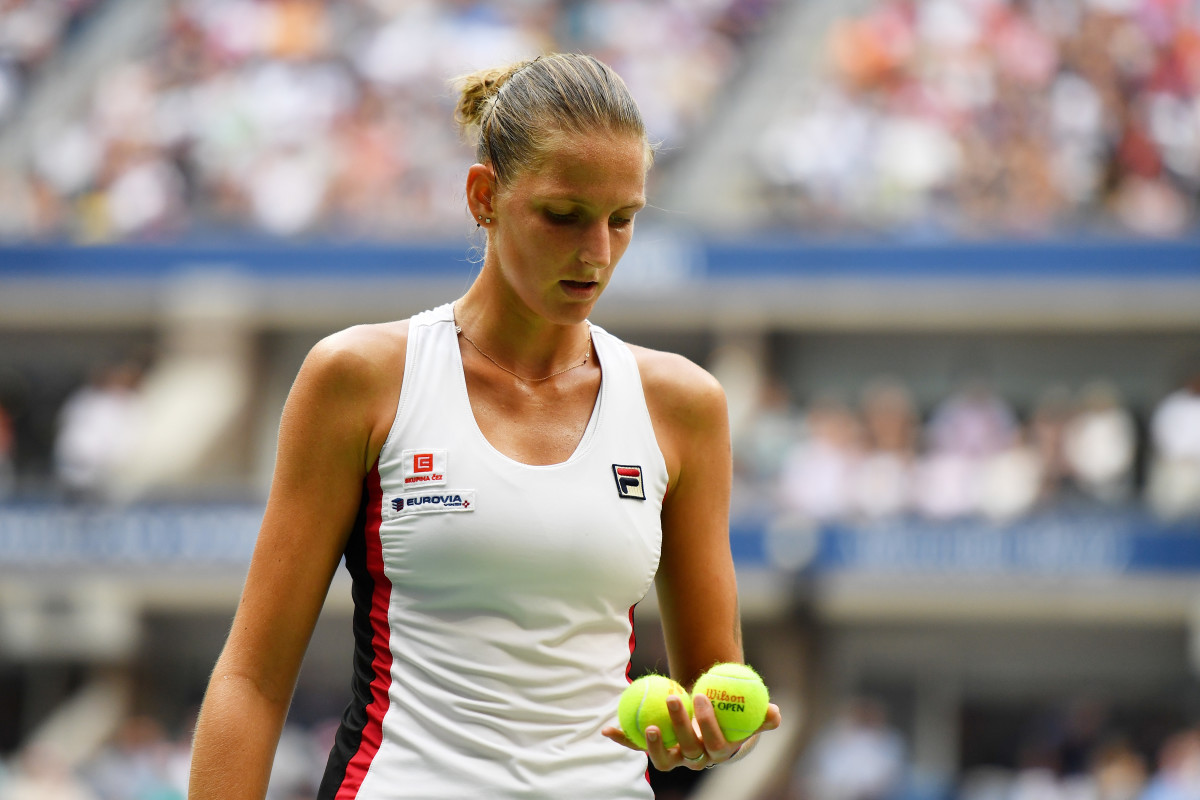
Angelique Kerber
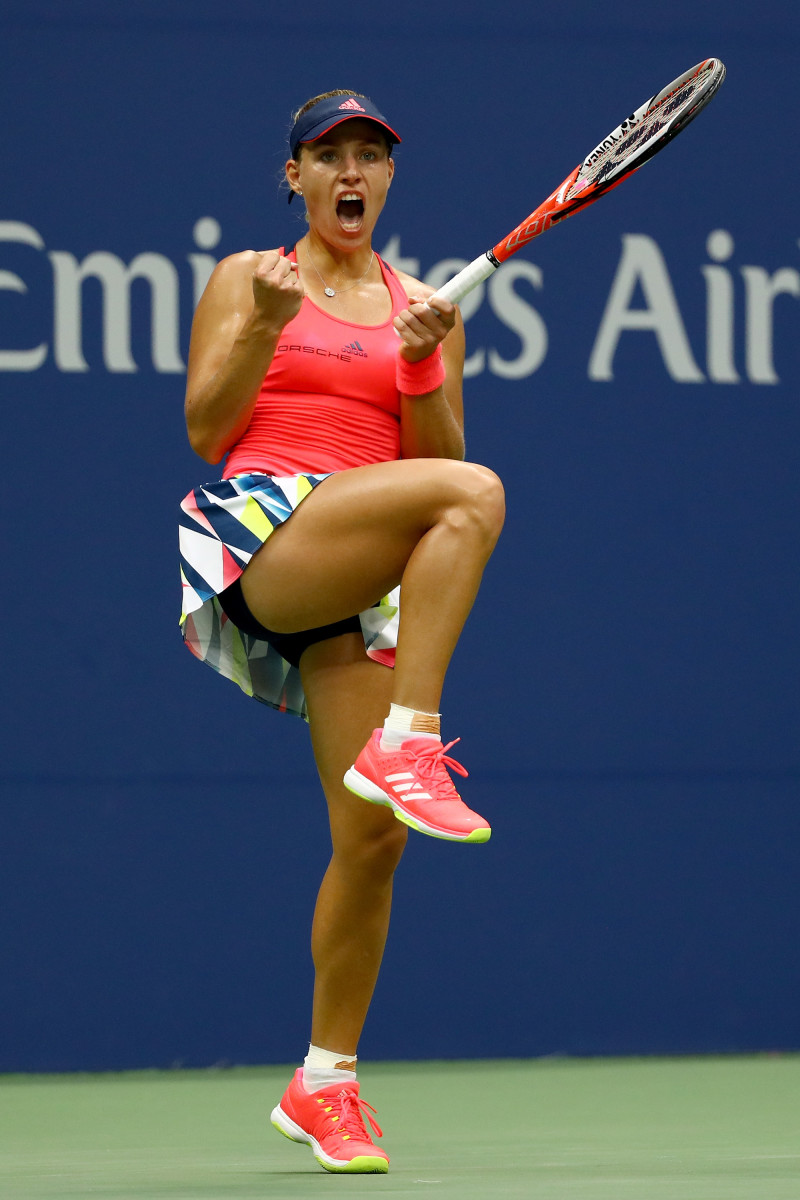
Angelique Kerber
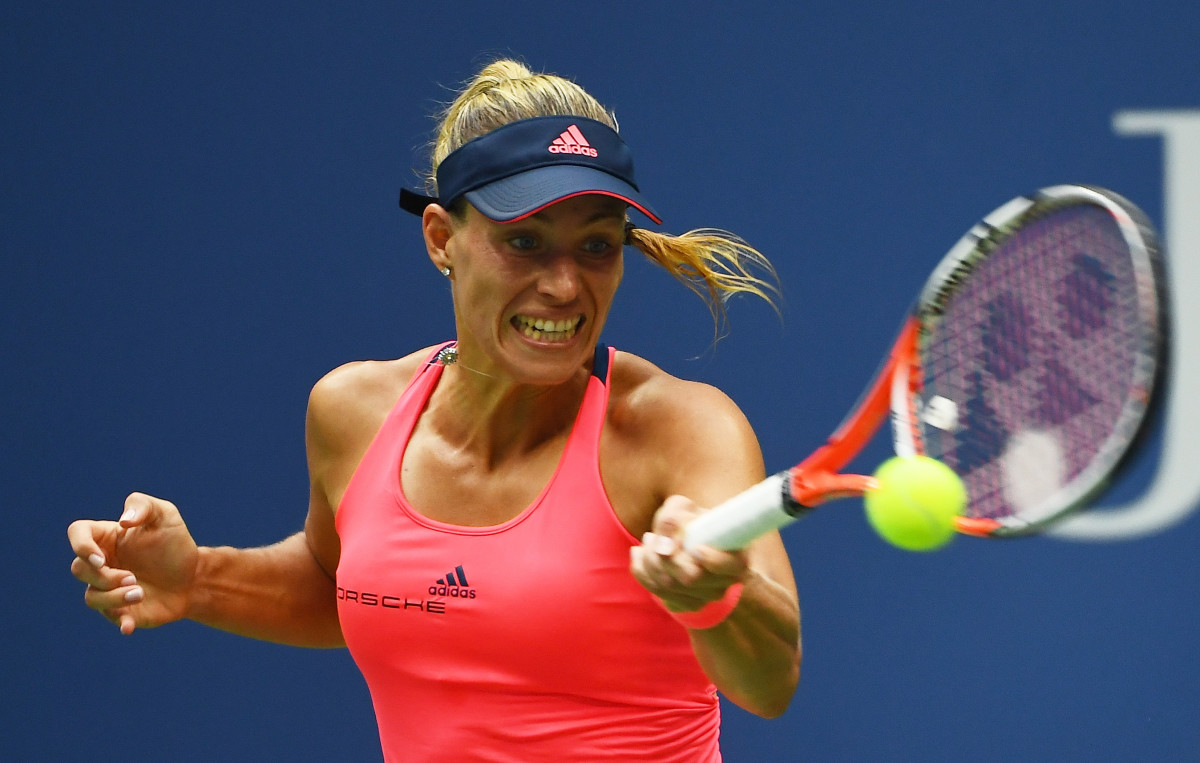
Karolina Pliskova
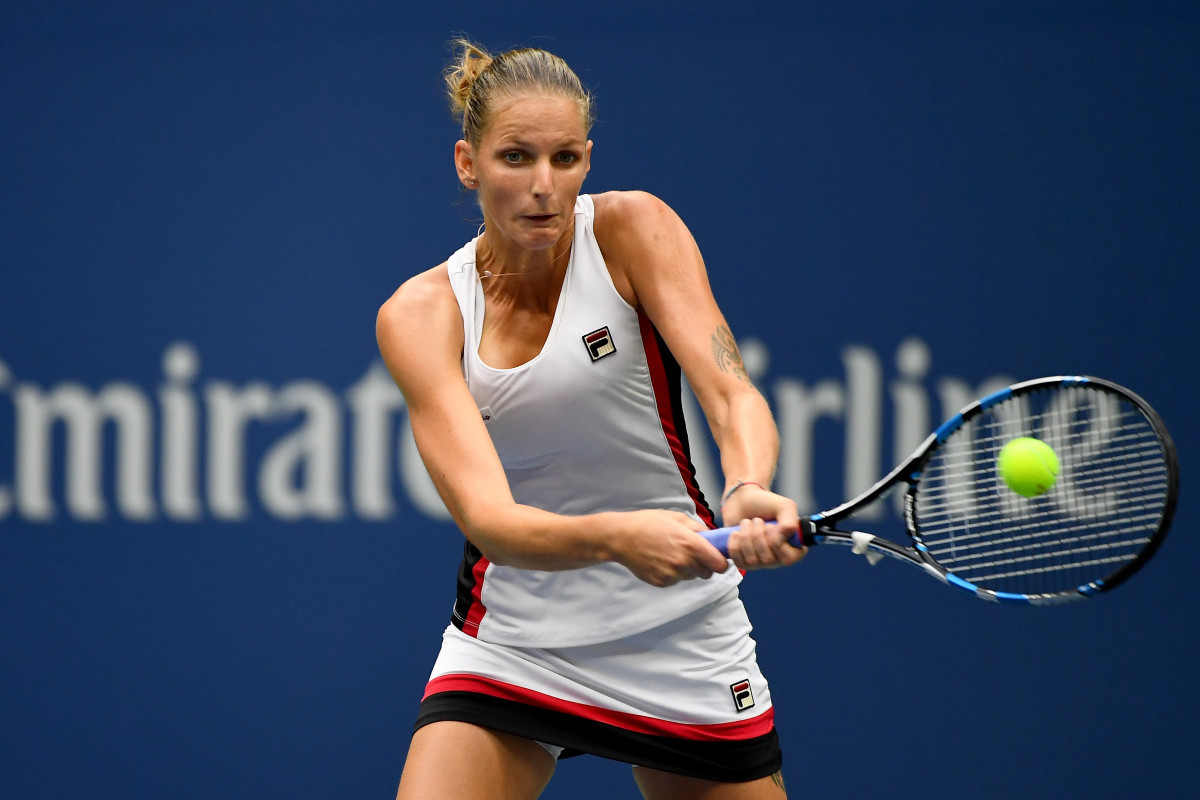
Angelique Kerber
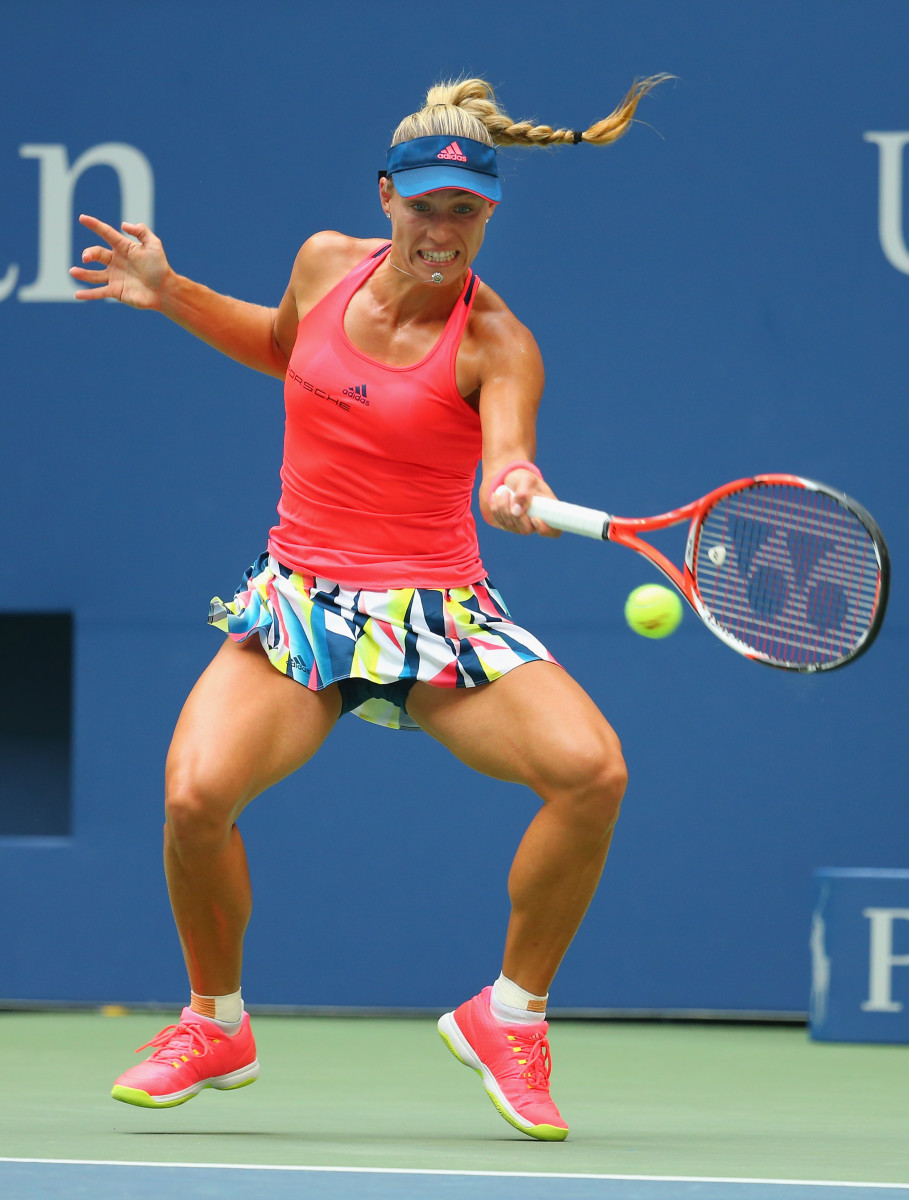
Karolina Pliskova
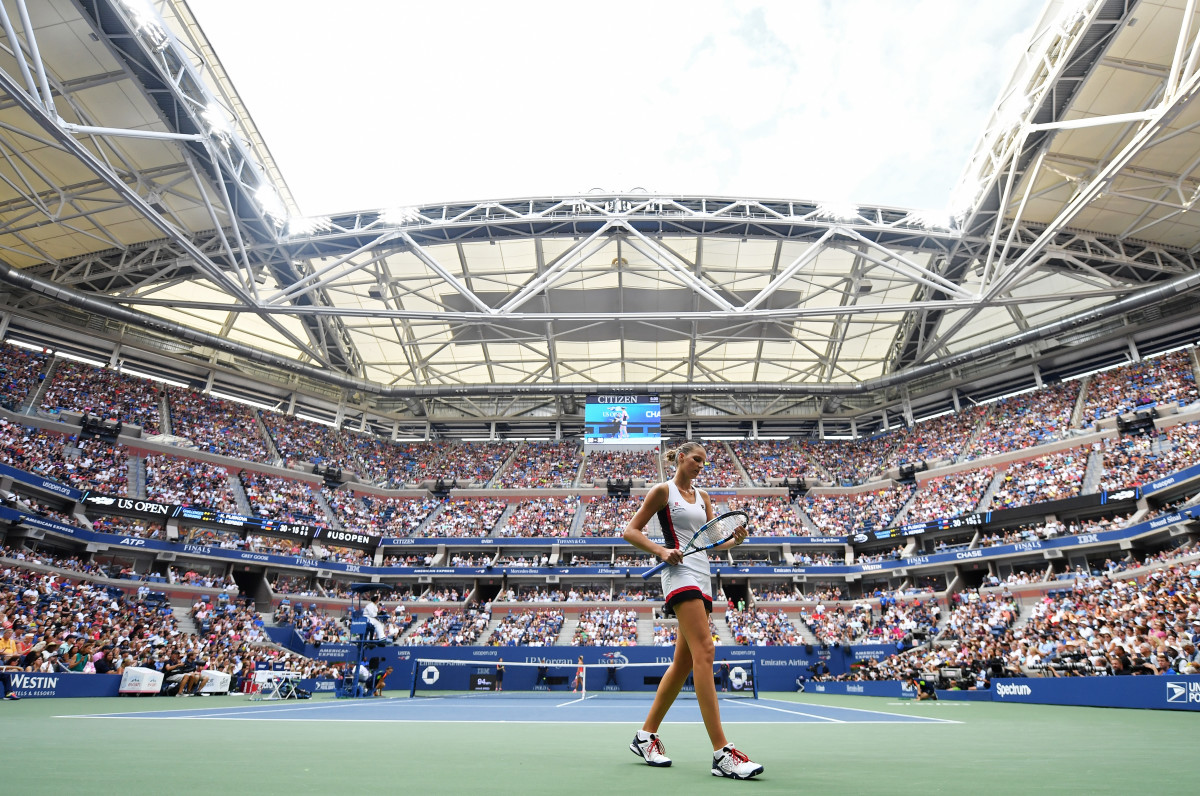
Karolina Pliskova
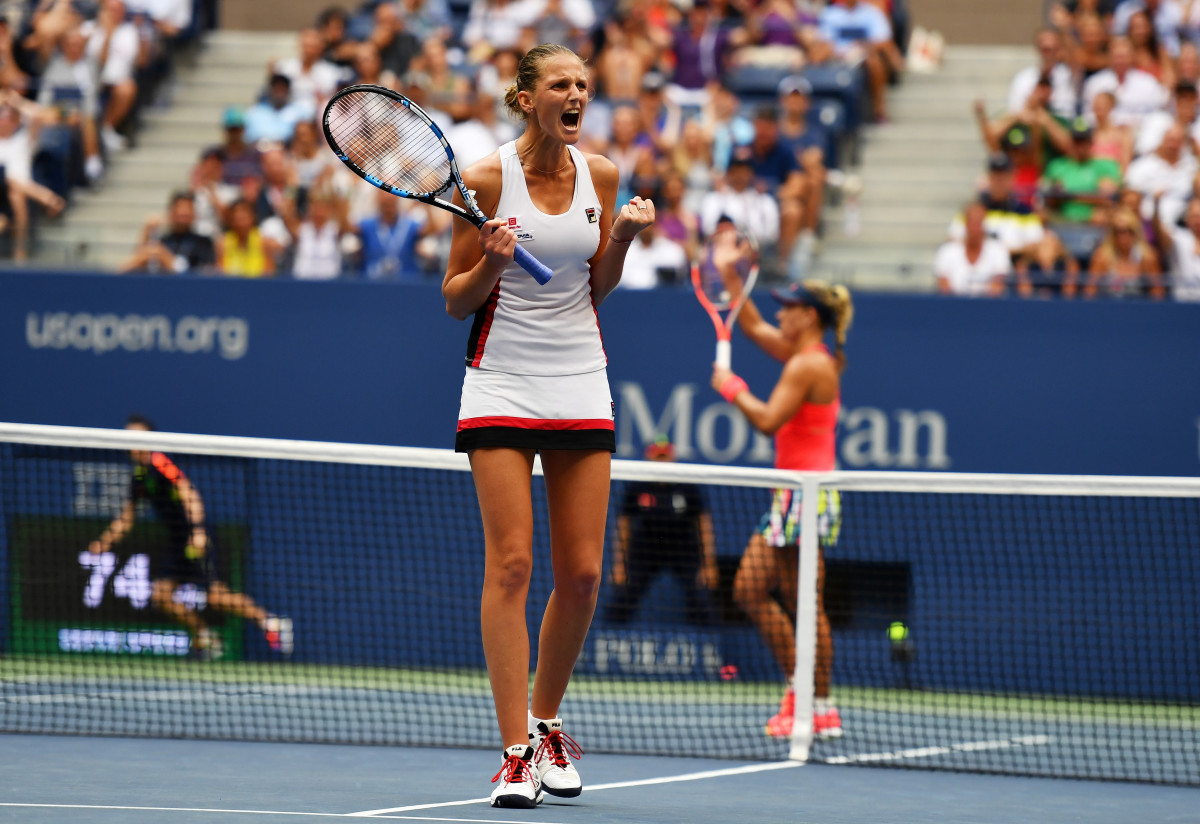
Angelique Kerber
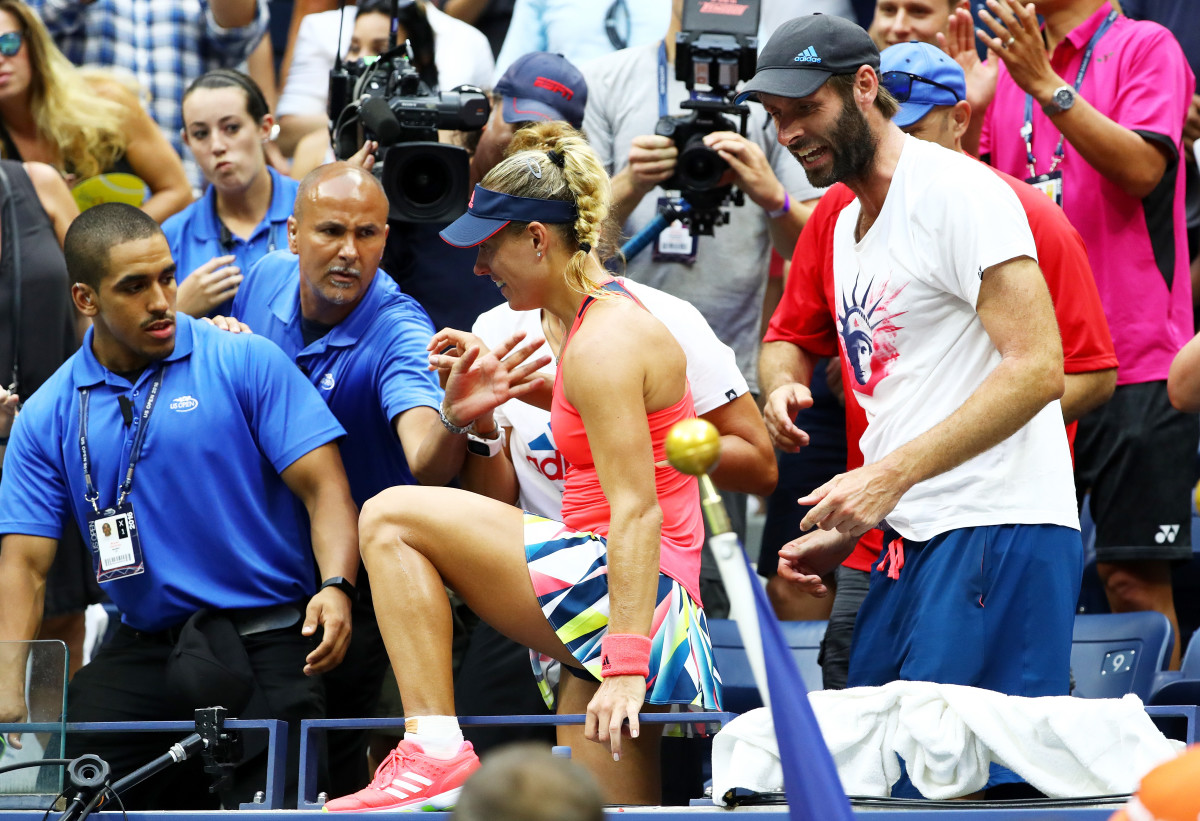
Angelique Kerber
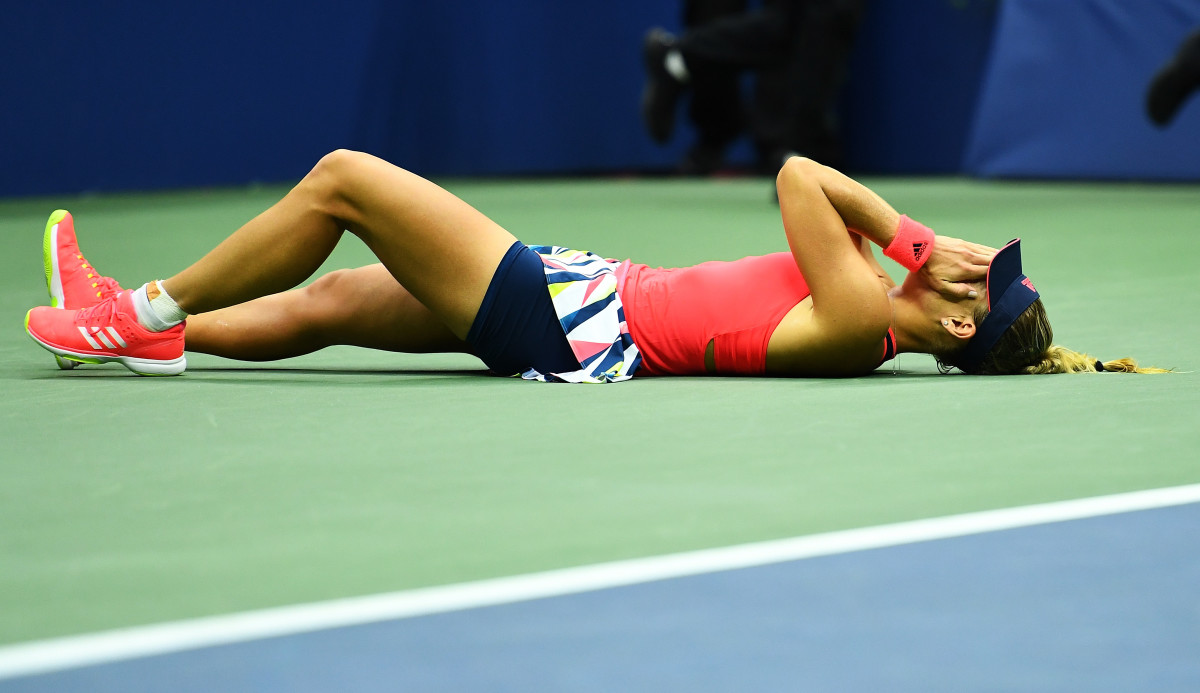
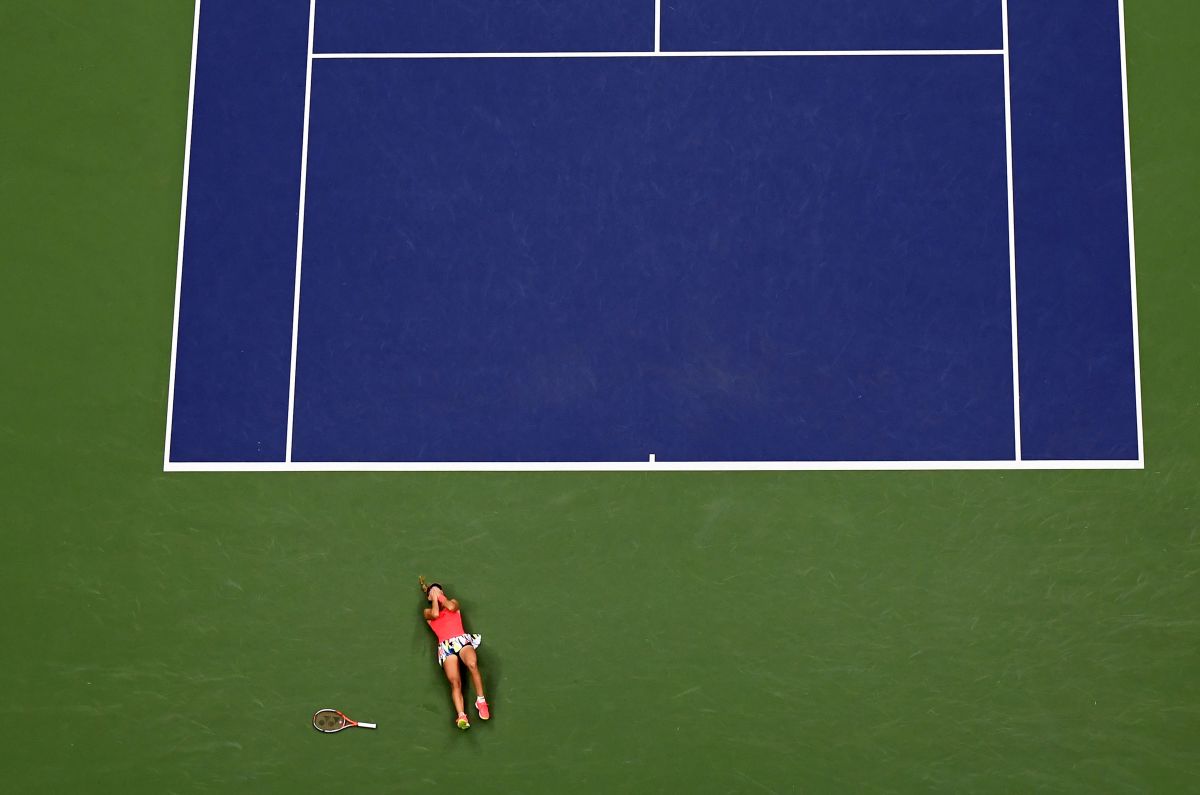
Angelique Kerber
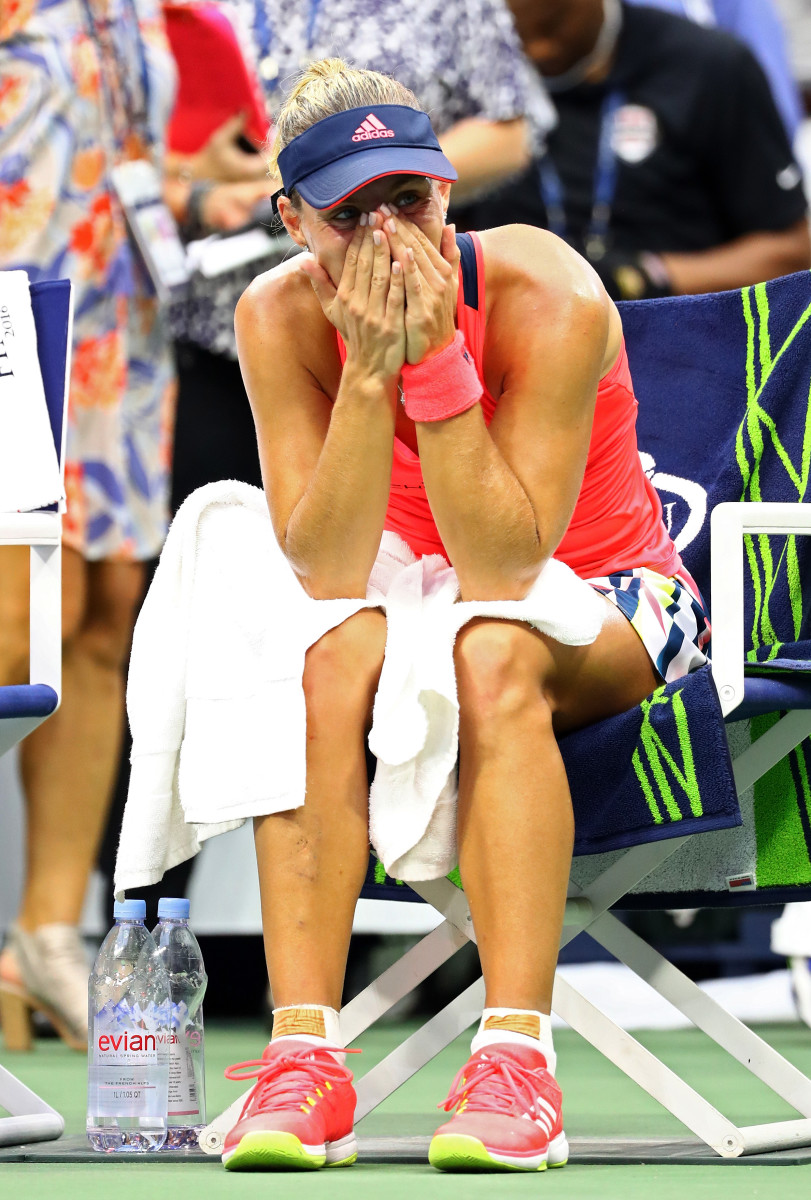
Angelique Kerber
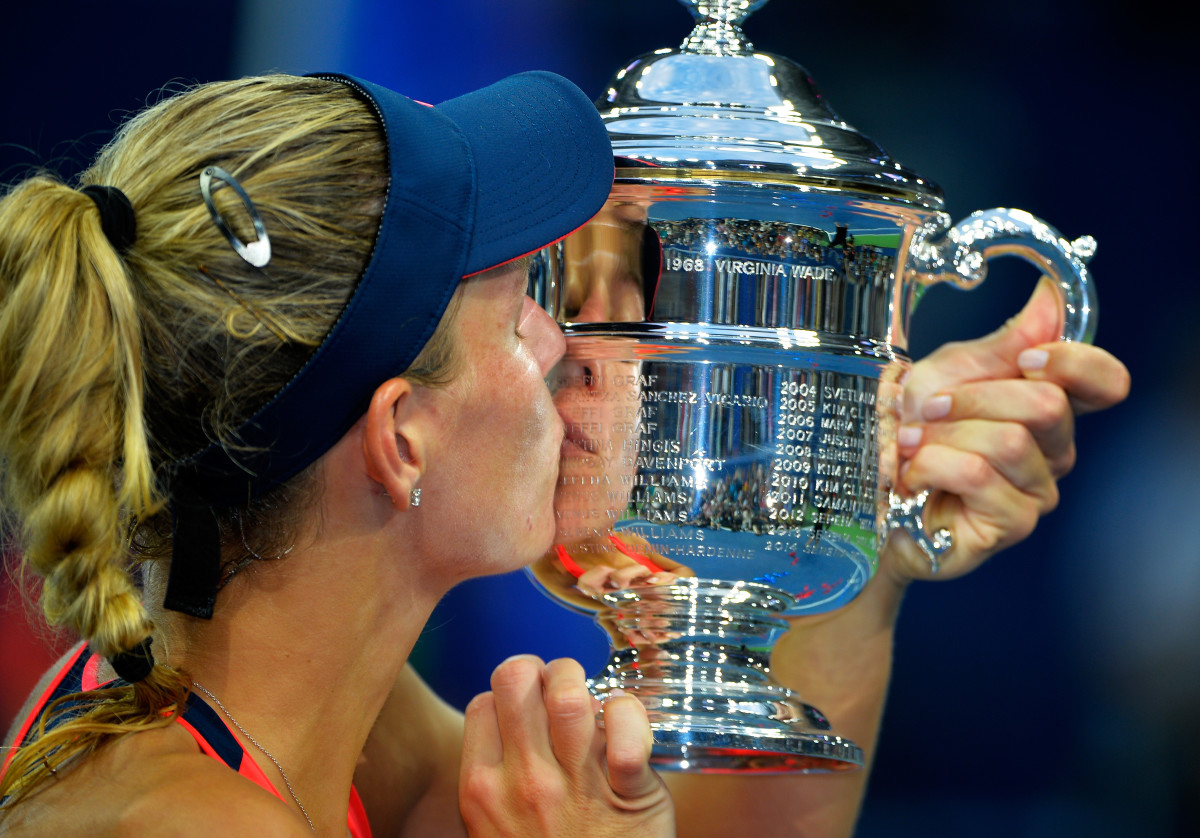
Karolina Pliskova, Angelique Kerber
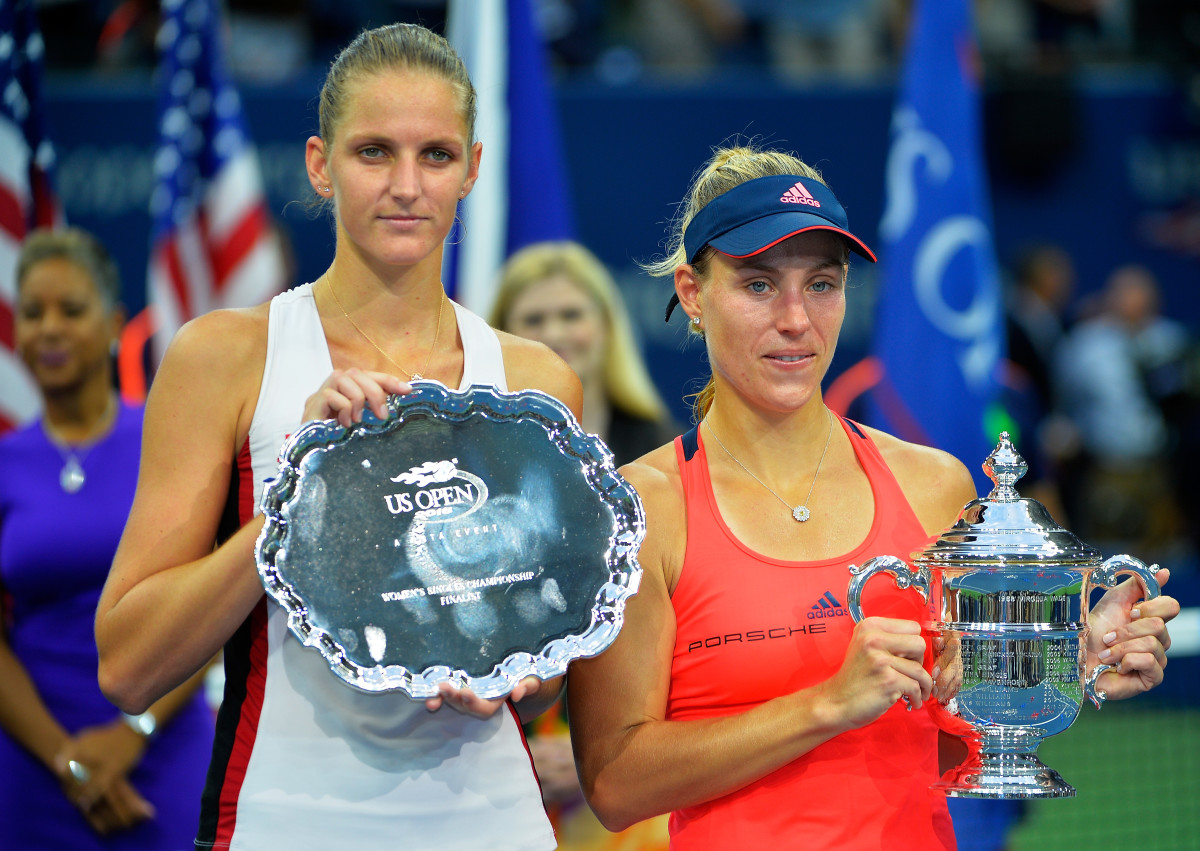
Angelique Kerber
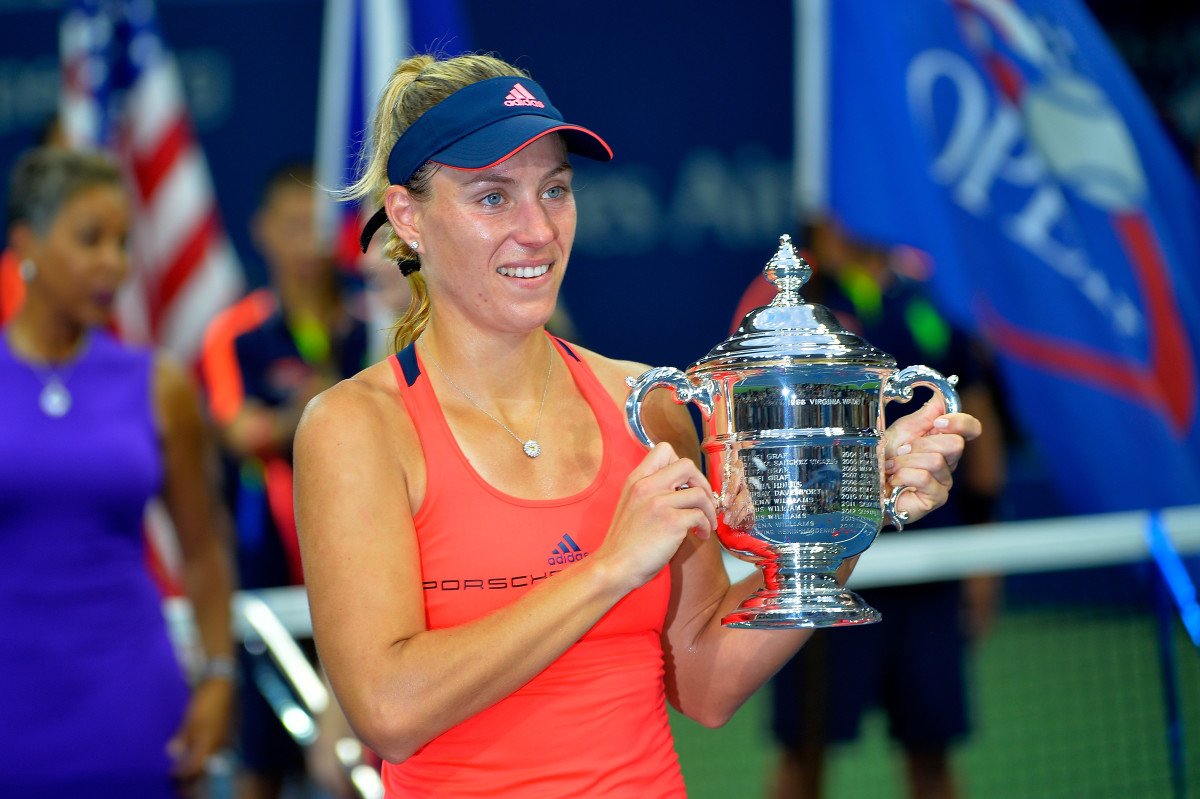
Angelique Kerber
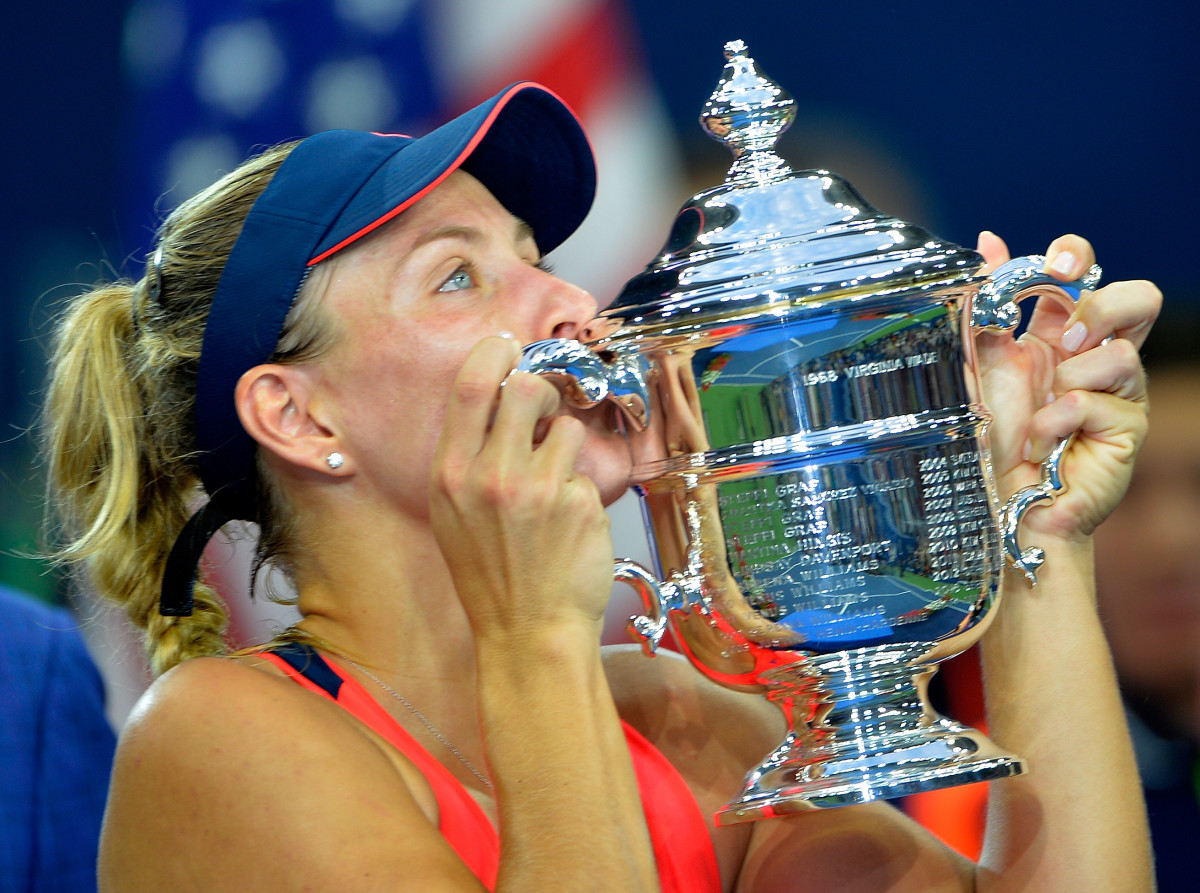
Angelique Kerber
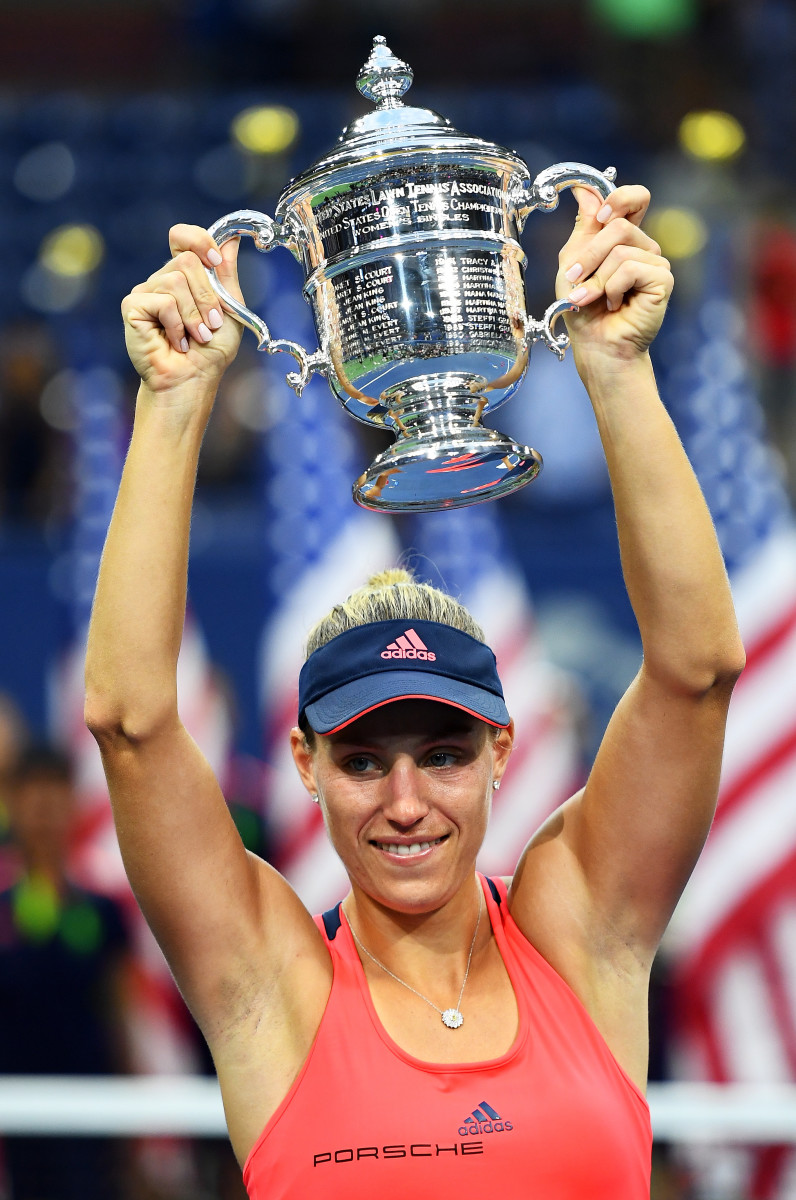
Angelique Kerber
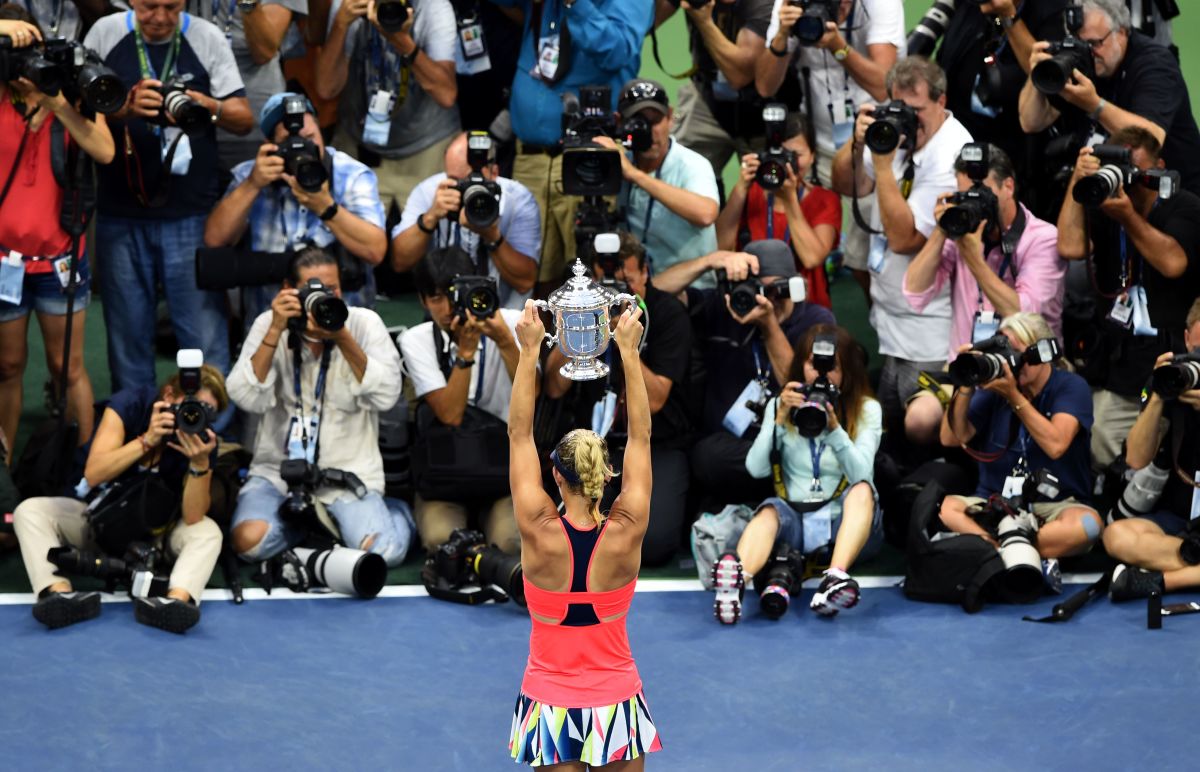
• In her first round match, Caroline Wozniacki was two points from losing to Taylor Townsend. This would have cemented a dismal year for Woz and pushed her ranking dangerously close to triple digits. Wozniacki rallied and didn’t lose again until the semifinals. A reminder that a few points here and there don’t simply determine the outcome of a match; in a Butterfly Effect kind of way, they can have a great impact on an entire tournament.
• It was hard not to feel Roger Federer’s absence, both abstractly and tangibly. But this event was hardly Christmas without Santa. New attendance records were set. Television ratings didn’t fall off a cliff. There were still plenty of players well worth watching. This augurs well for the future. When Federer finally departs, the tennis firmament will be depleted. No question. And there will be a transition period and perhaps even some economic downturn. But the sport will persist, new champions will emerge, the “decorum standard” set by the Big Four may even survive as well. Such is the life cycle of sports.
Kerber proves worthy of No. 1 ranking with second major title of 2016 at U.S. Open
• Martina Navratilova often makes the (excellent) point that we talk about players struggling to close matches and assume it befalls the young and callow. Recognizing their own career mortality, it’s the older players who really battle nerves. Venus Williams lost her match in Rio, 4-6, 6-3, 7-6(5). She lost at the U.S. Open (to Karolina Pliskova) 4-6, 6-4, 7-6(3). Silver lining: Venus Williams—like her sister but for different reasons—is an absolute crowd favorite. Ambivalence long a thing of the past, Venus now engenders universal affection. So often sports fans lament they didn’t know what they had till it was gone. In this case, there is a recognition and appreciation.
• Credit the USTA with completing the roof project, which was a savvy image enhancement even if it can't be justified on a P/L statement. As the USTA’s Danny Zausner, told Carillo and me: “There’s no financial model that shows the roof making any financial sense.” It came in handy during the first week. And one suspects that the noise is nothing a sound engineer can’t remediate before next year.
• More credit to the USTA:
a) The shot clock idea reminds us of the behavioral economics principle of “Nudge.” Even if it’s problematic in practice and doesn’t solve the problem of slow play, the clock has the effect of habituating players to speed up.
b) The U.S. Open free grounds admission for Community Day.
c) Chef Billy Strynkowski is taking his entire staff at the players’ restaurant to the courts so they can see the athletes they’re feeding.
d) The naming of the media room in honor of Bud Collins, who had presence in his absence
e) Above all….
Gael Monfils defends unusual U.S. Open semis strategy after John McEnroe criticism
• The “NG,” as it was short-handed, the New Grandstand, is a terrific court. Perfect size. Perfect sightlines. Some nice architectural touches. (Plus, an adjacent oyster bar.)
But—even if it comes at the expense of taking a few dollars off the table—the USTA needs to make it open seating. As it is now, the lower bowl seats require a ticket so, mimicking a larger issue in the sport, the real fans bunch together up top while the courtside seats (i.e. the seats that show on television) lie vacant.
• Larger point: I had a social, friendly no-holds-barred talk with the proverbial “high-ranking executive” who basically asked, “Why do you think we the USTA has this terminal PR problem?” My response went like this: there are so many good and decent people in the organization. No one is behaving with evil intent. But, not unlike a trust fund kid—who is ultimately benign but lived a sheltered existence—the sloshing money becomes a social distortion, and too many decisions get made that show a lack of common sense and/or perspective and/or compassion. This is a prime example. Die-hard tennis fans fly in from all over the country to come to this event. They are sitting in the rafters while seats below them go unused all day. And the takeaway message is this: their passion is less important than revenue. In tennis terms, money d. soul.
The good news for the USTA: this is an easy fix. Open the seating so the real fans on your third court can sit close to the action, which has the added benefit of conveying the intimacy on TV. Roofs aren't cheap. And debt service is debt service. But this is a common sense decision.
No. 1 Djokovic overcomes heat, oddities to beat Monfils and reach U.S. Open final
• Jared Donaldson was a revelation this event. A bit of a forgotten man among the young Yanks—he had to qualify for the main draw—he impressed with his serving as well as his returning. He’ll now be in the top 100 and receiving “automatic ins,” which means everything to a player trying to ascend.
• Whatever happened to….match fixing? On the first day of the first Slam, we had this “bombshell” report about the rampant corruption in tennis. It seemed like this would, at a minimum, be a story that would vex the sport this season. It’s barely surfaced since. You could blame this on a fawning media’s lack of vigilance. Or inept investigators. And administrators disinclined to turn over any rocks. But I think this is a better explanation: there was a realization that, while match-fixing and especially point-fixing undeniably exists and should be punished brutally, it’s predominantly (if not altogether) confined to lesser events. It’s like saying that professional baseball has a steroids problem. But it’s not the majors; it’s rampant in the Canadian independent league.
• We really like Naomi Osaka. And not simply because she uses phrases like “freaked out” and “yikes” in her post-match syntax. Age 18, Osaka won two matches at three majors in 2016 (and didn’t play Wimbledon) and had Madison Keys at 5-1 in the third set before retreating.
Fashion at the 2016 U.S. Open
Garbine Muguruza
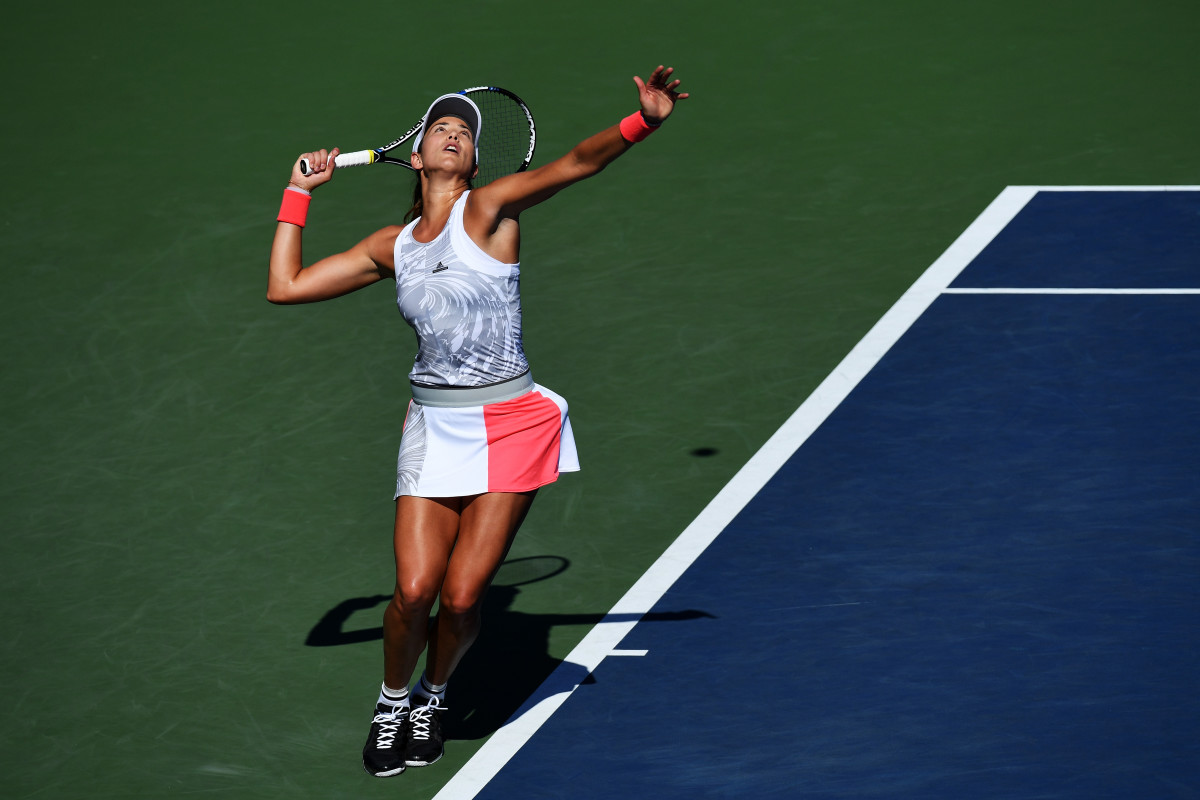
Novak Djokovic
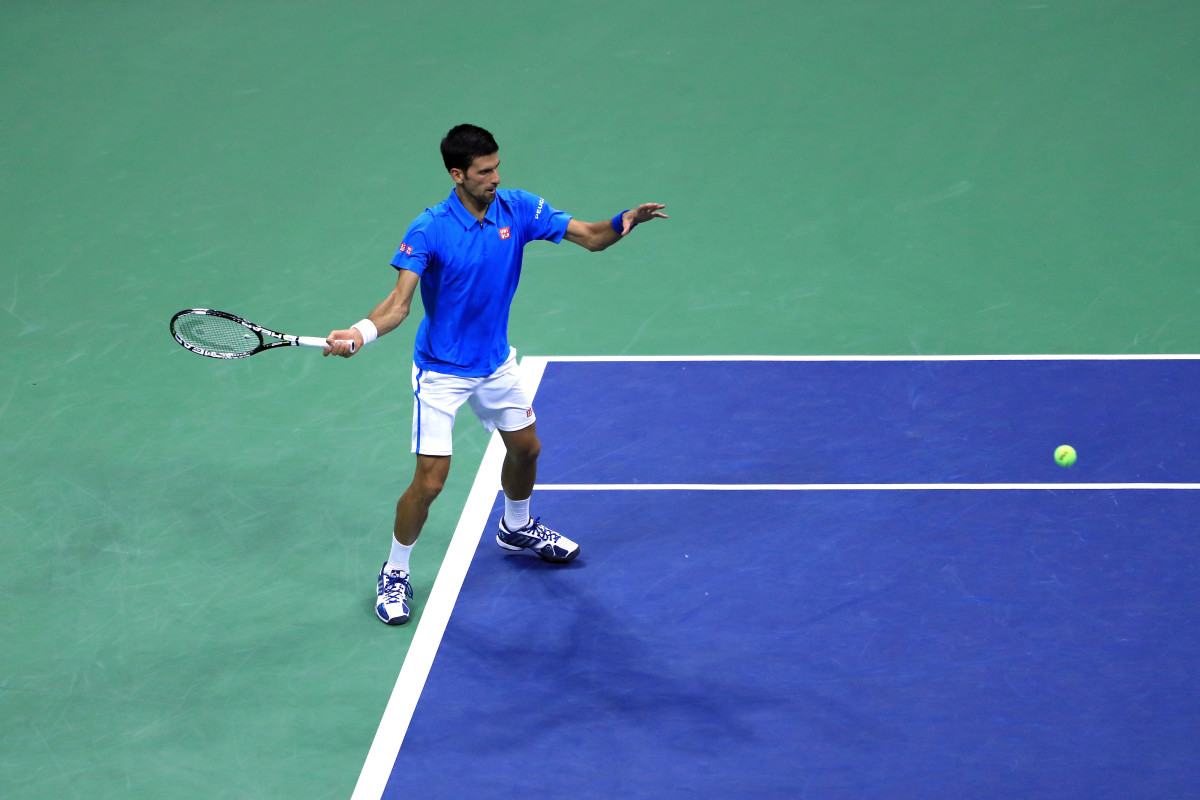
Andy Murray
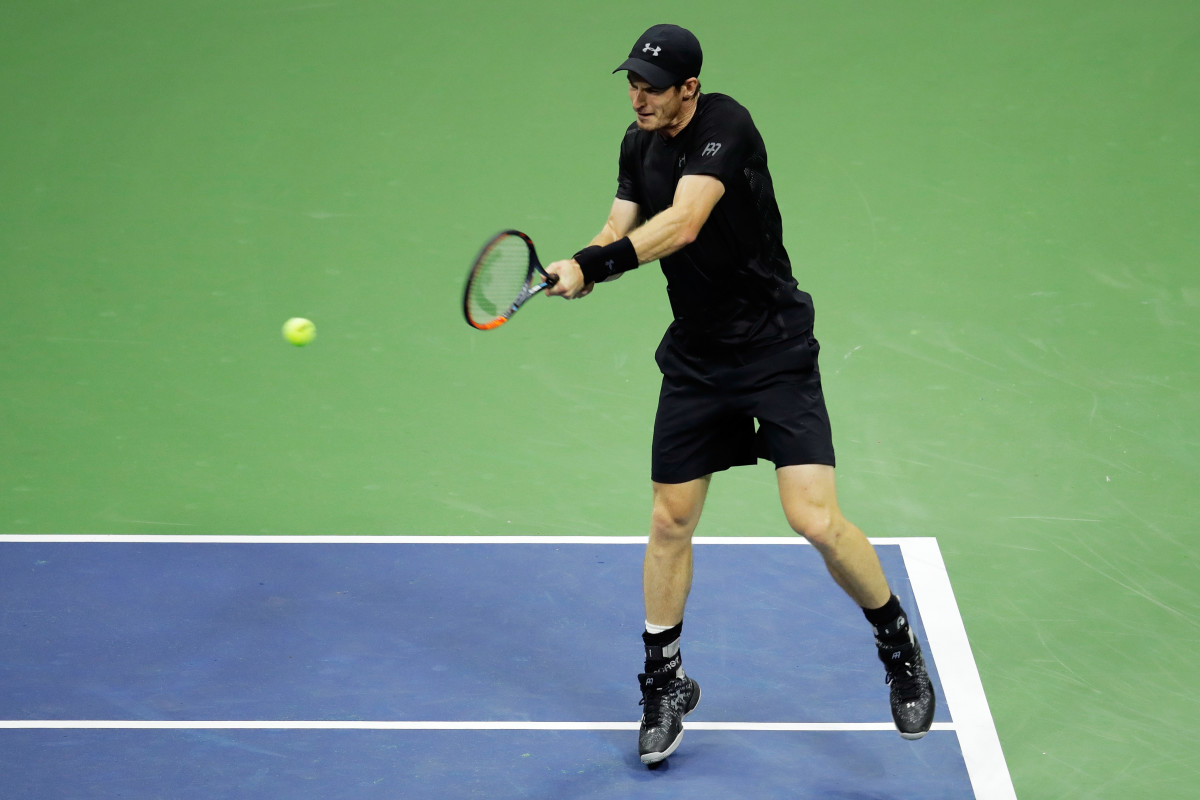
Belinda Bencic
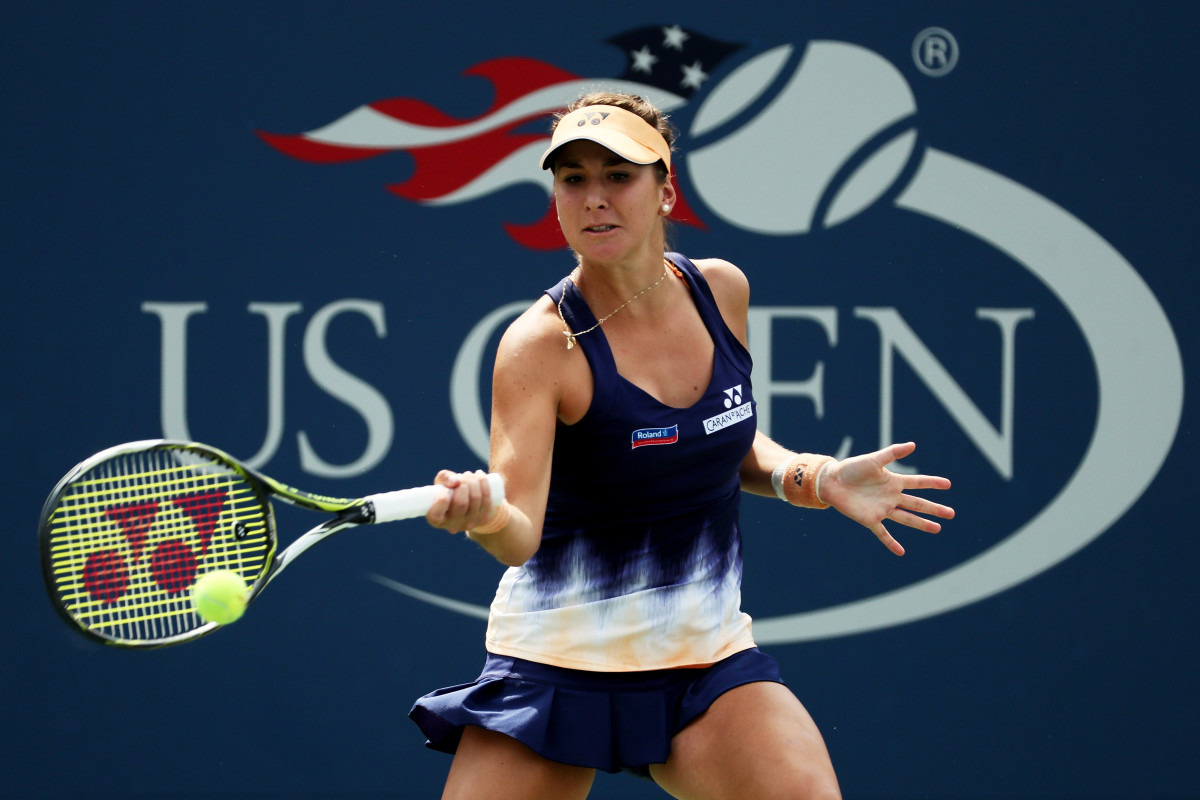
Andrea Petkovic
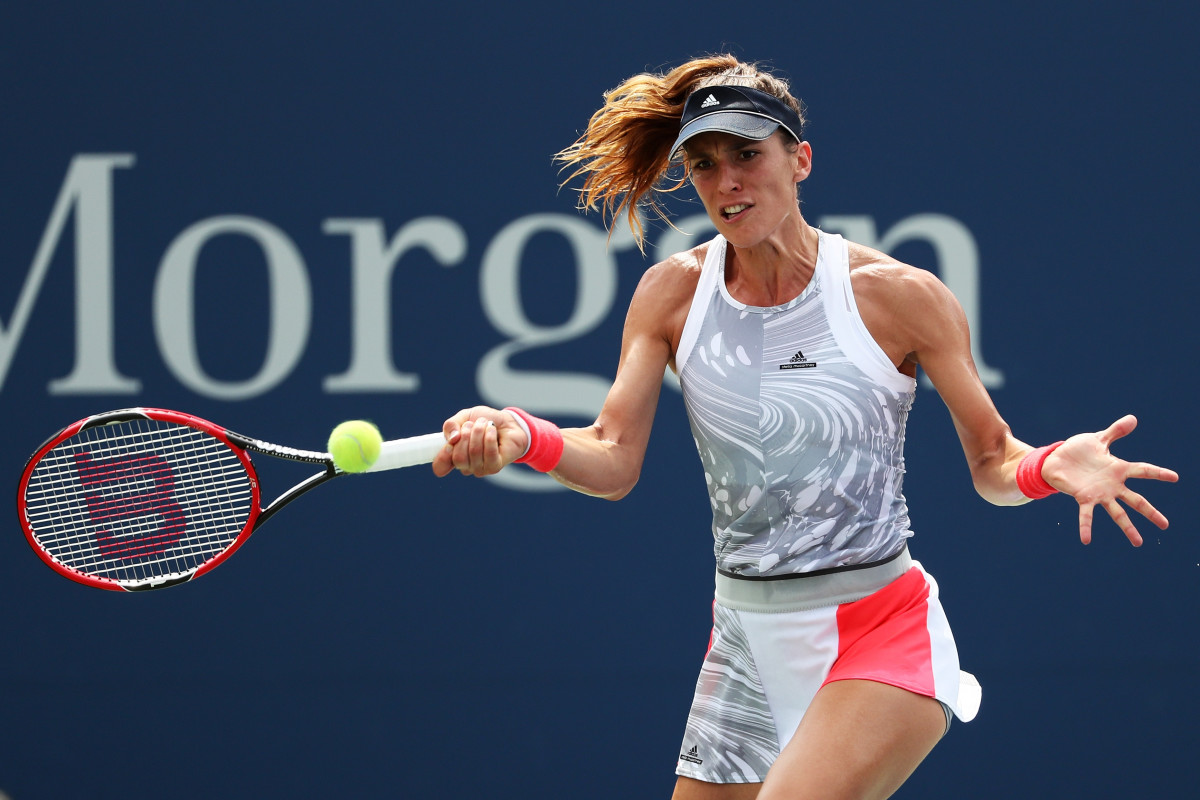
Svetlana Kuznetsova
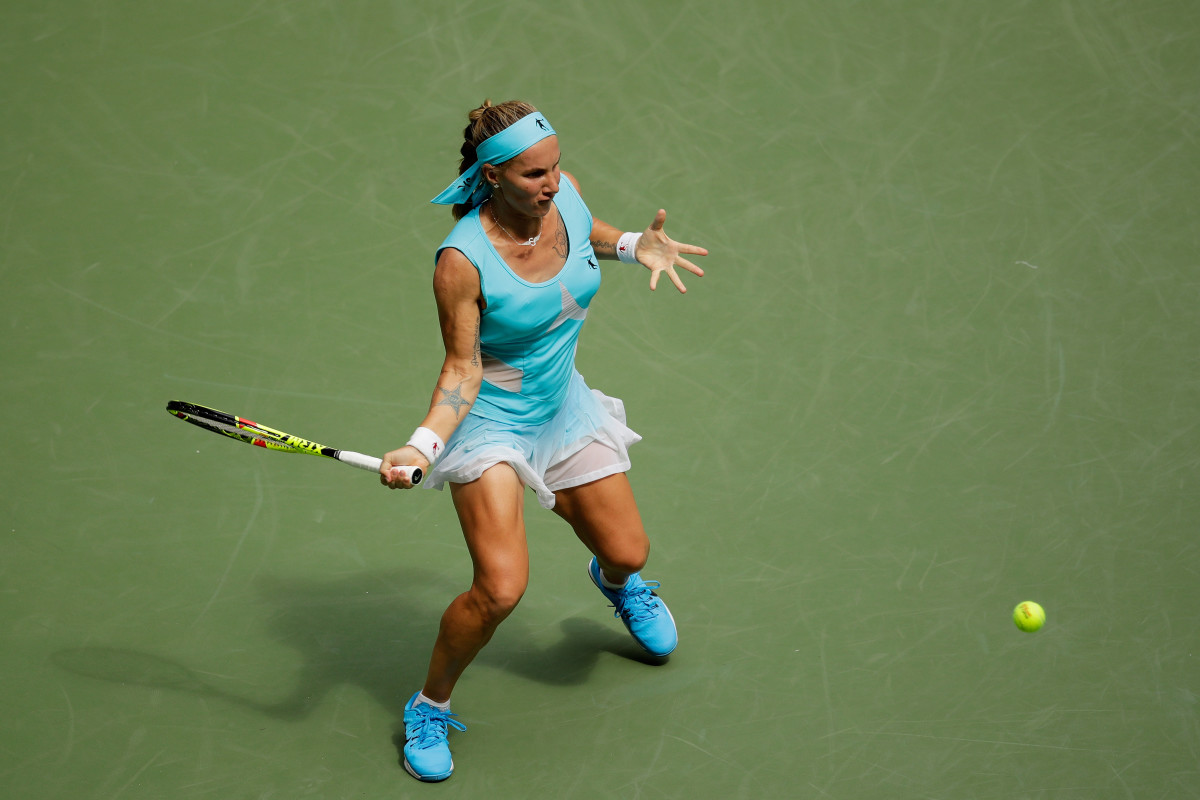
Vasek Pospisil
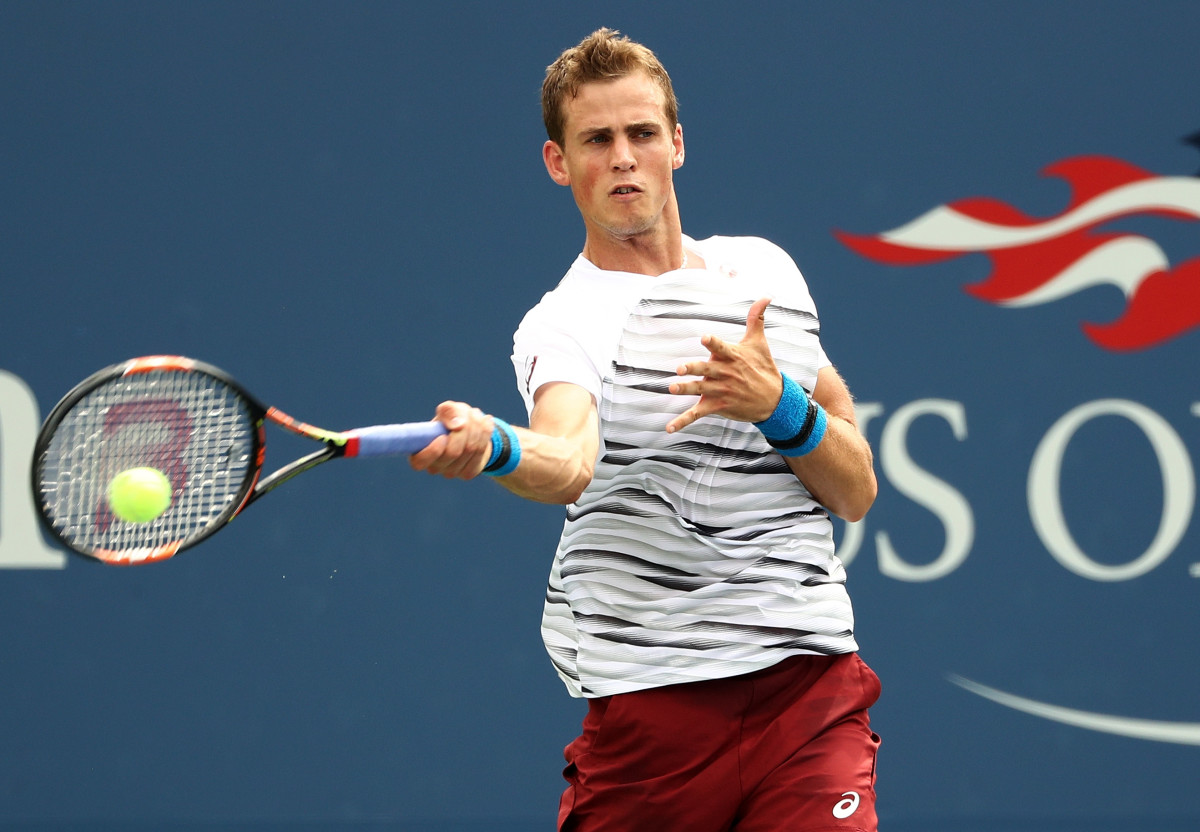
Milos Raonic
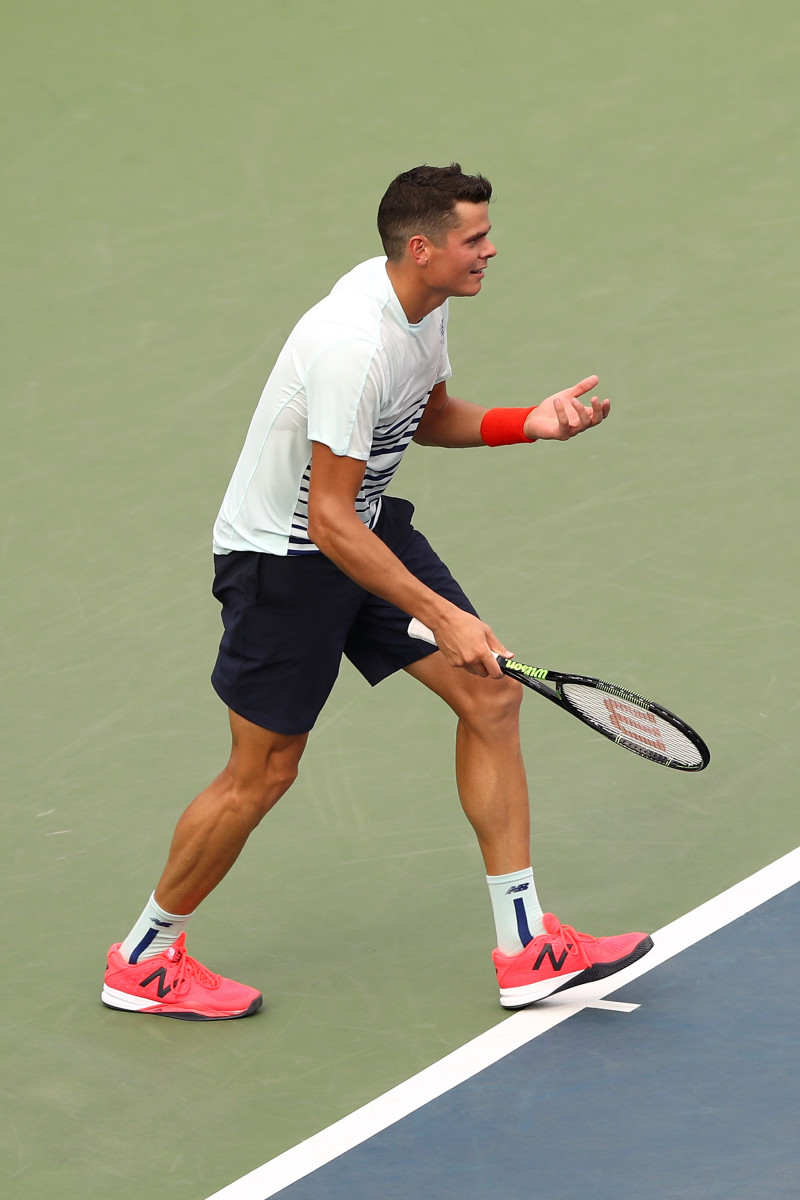
Mike and Bob Bryan
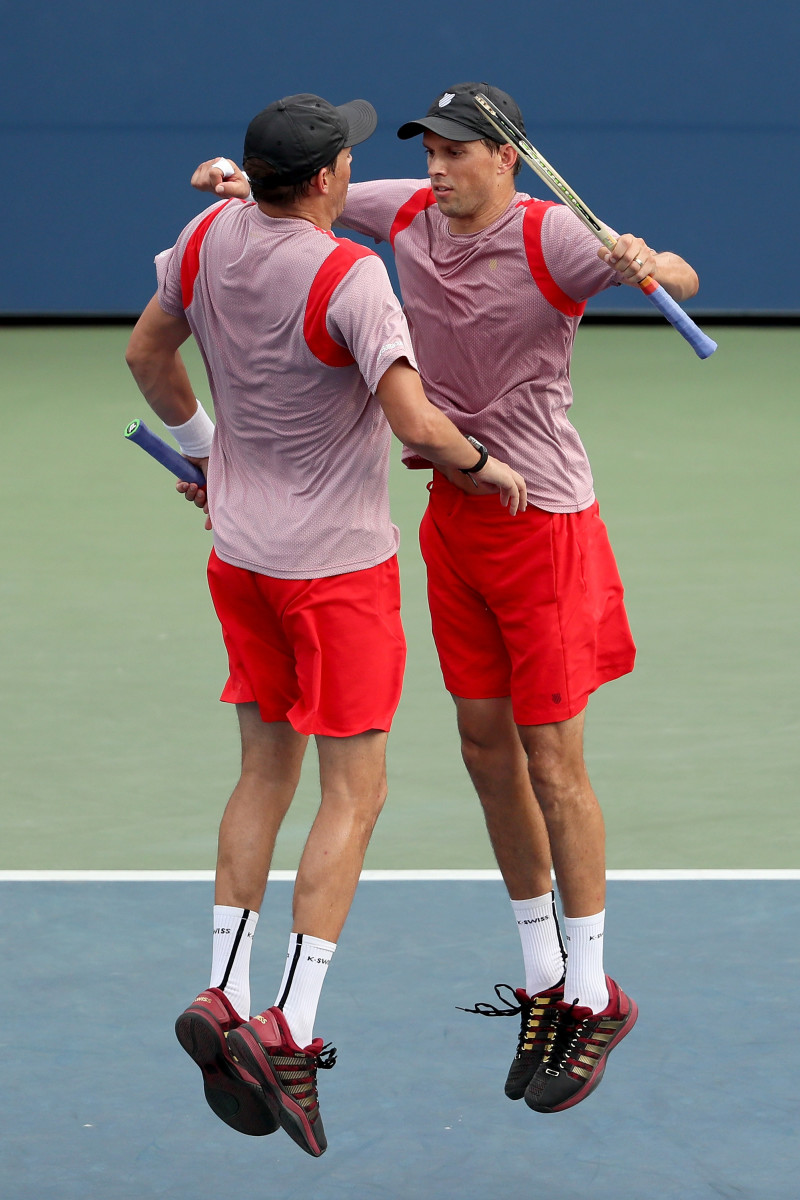
Mike and Bob Bryan
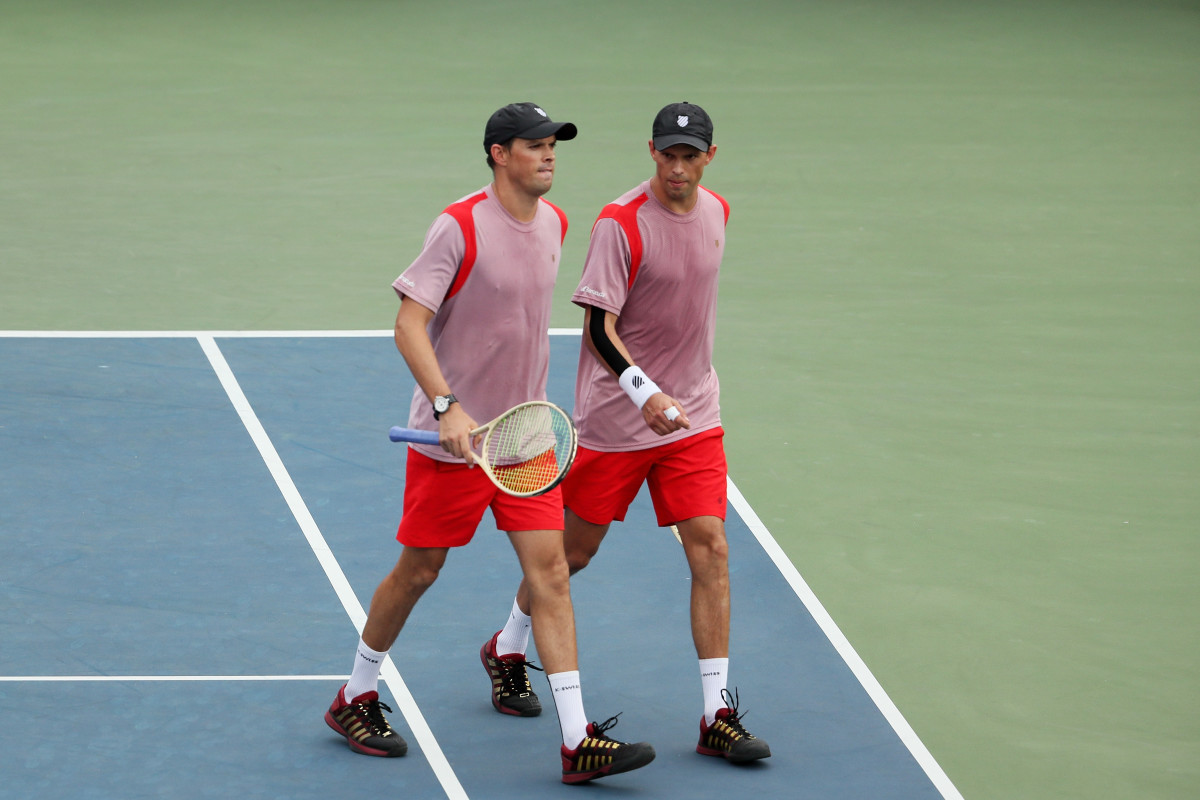
Shelby Rogers
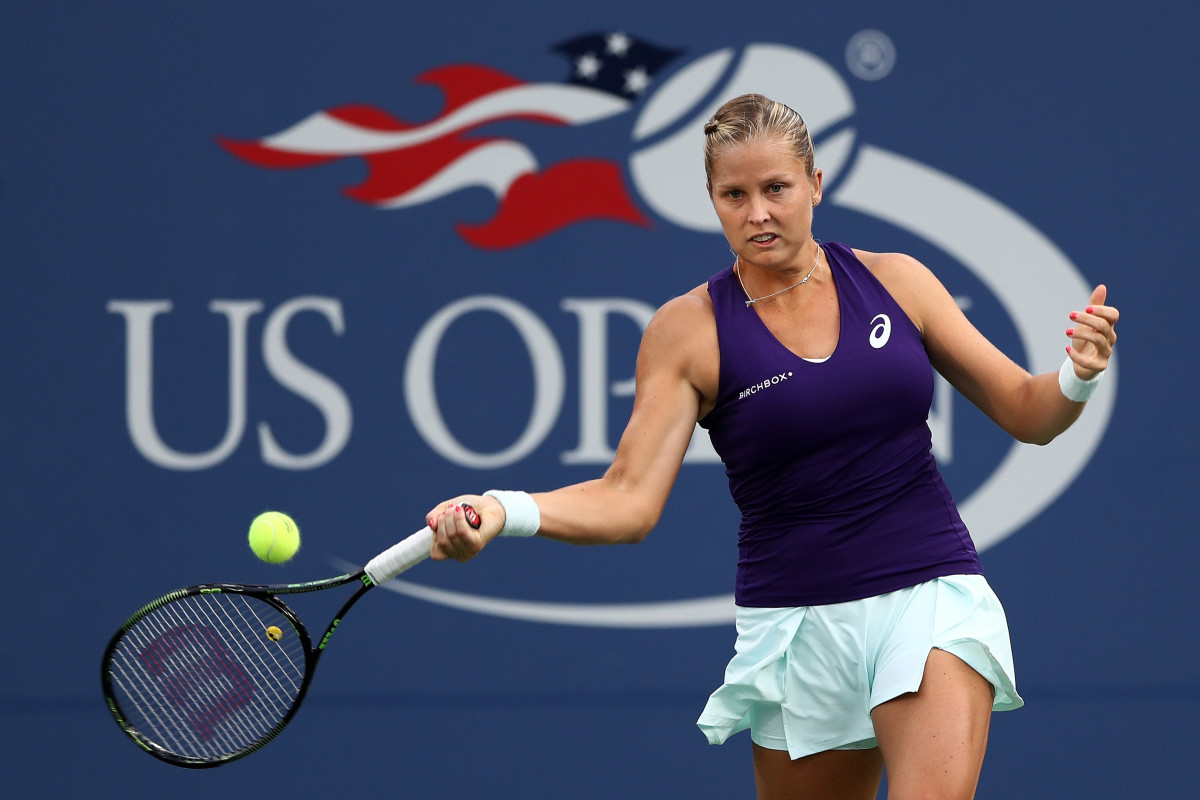
Roberto Bautista Agut
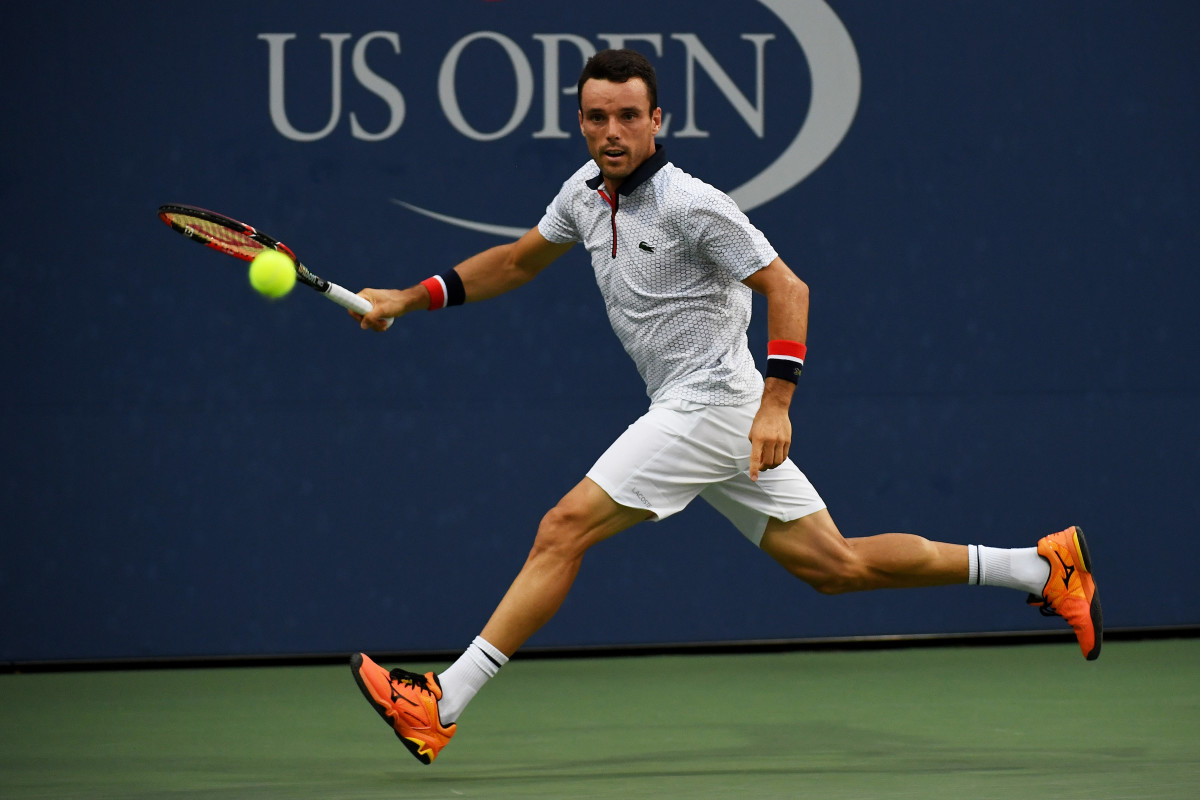
Garbine Muguruza
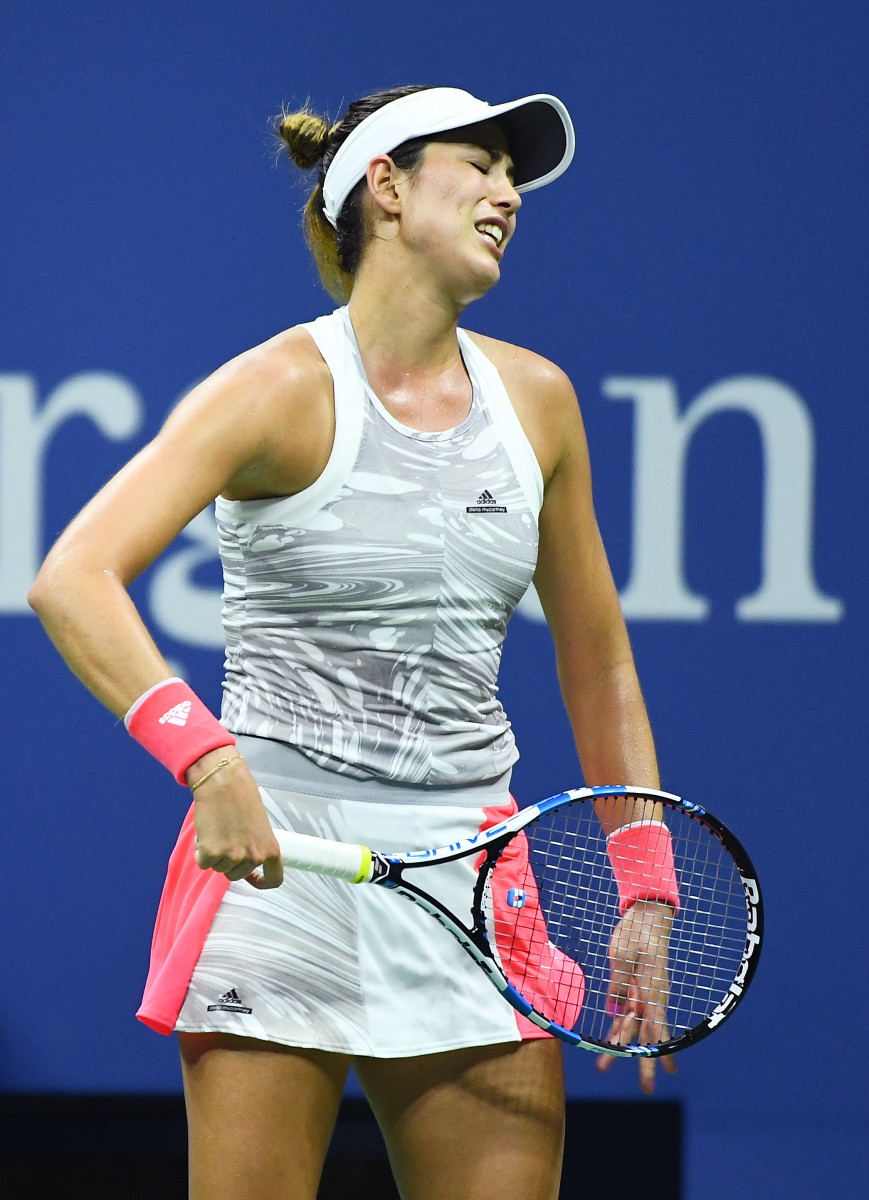
Andy Murray
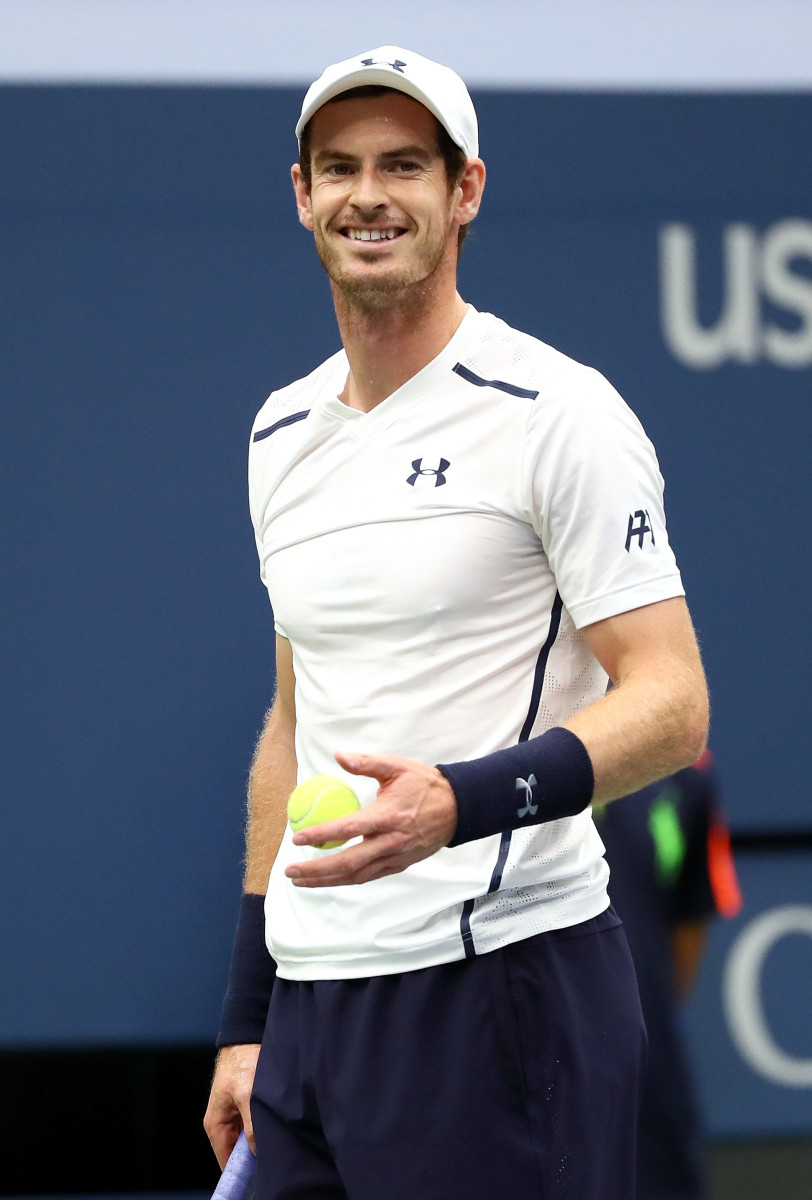
Paul Henri-Matthieu
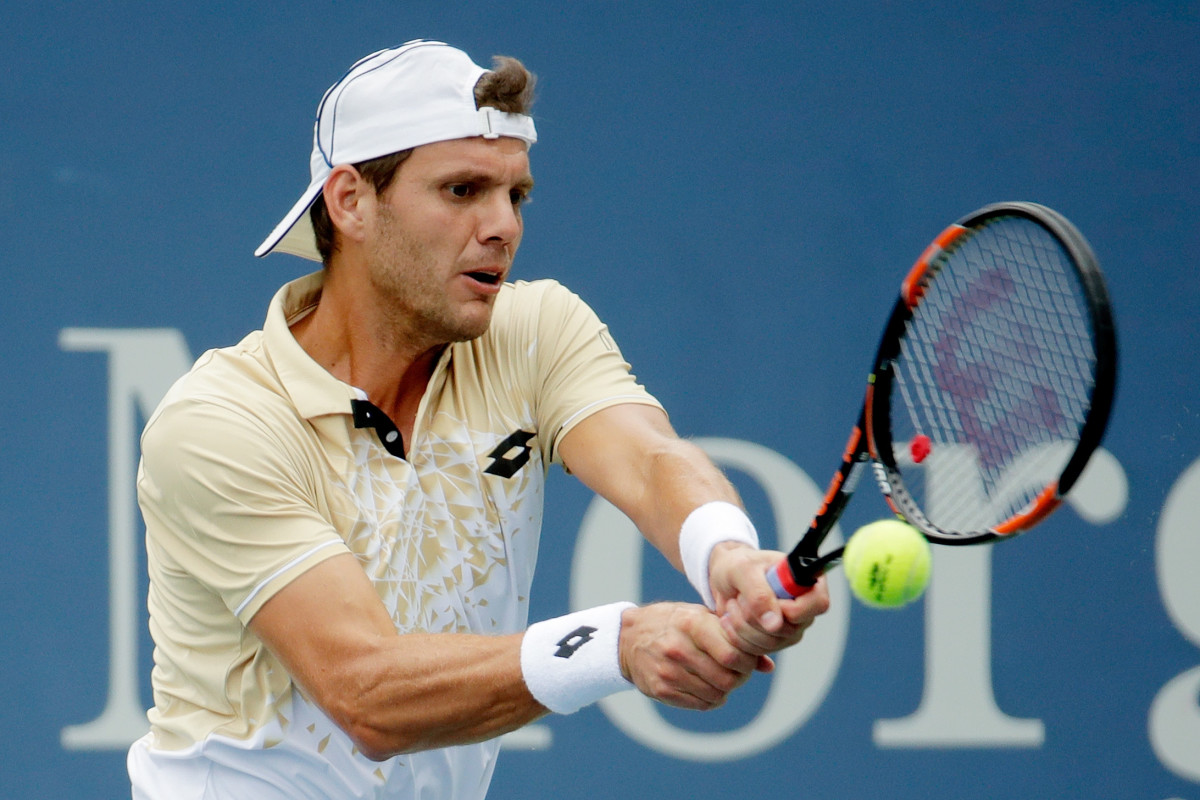
Nicolas Mahut
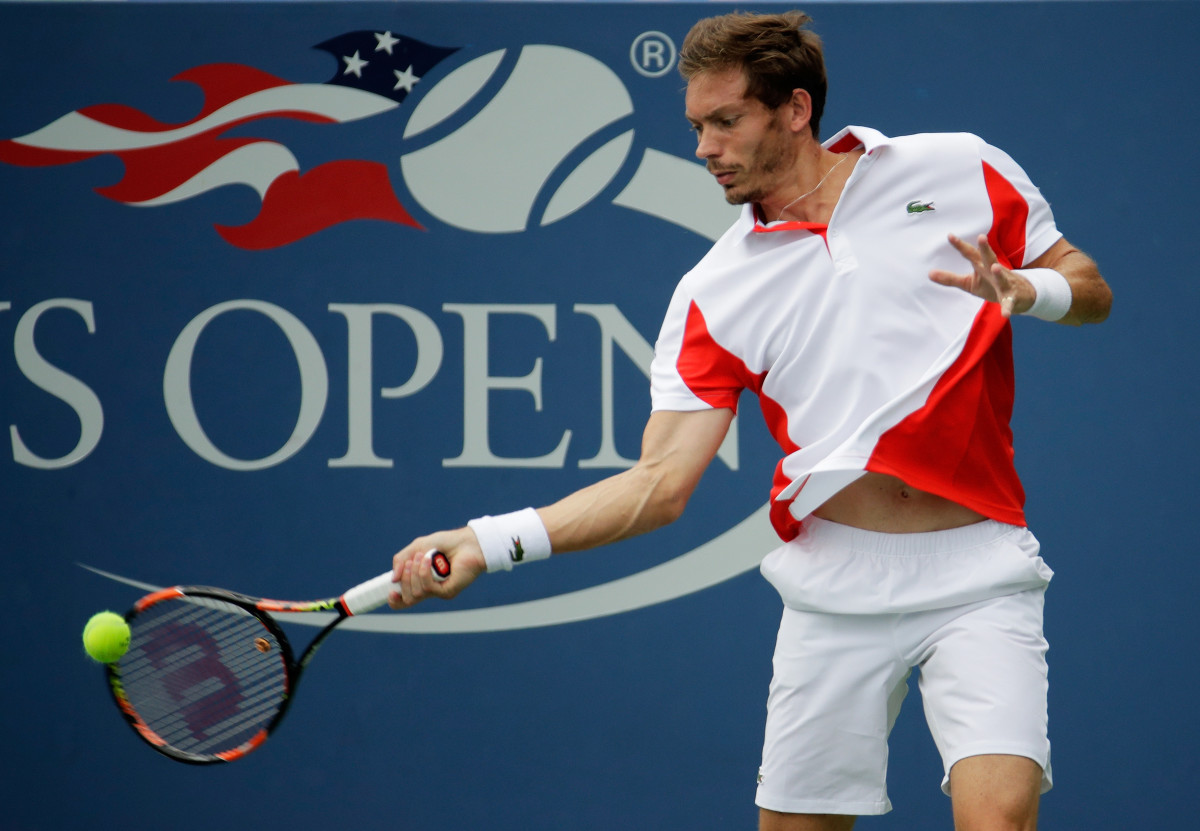
Kei Nishikori
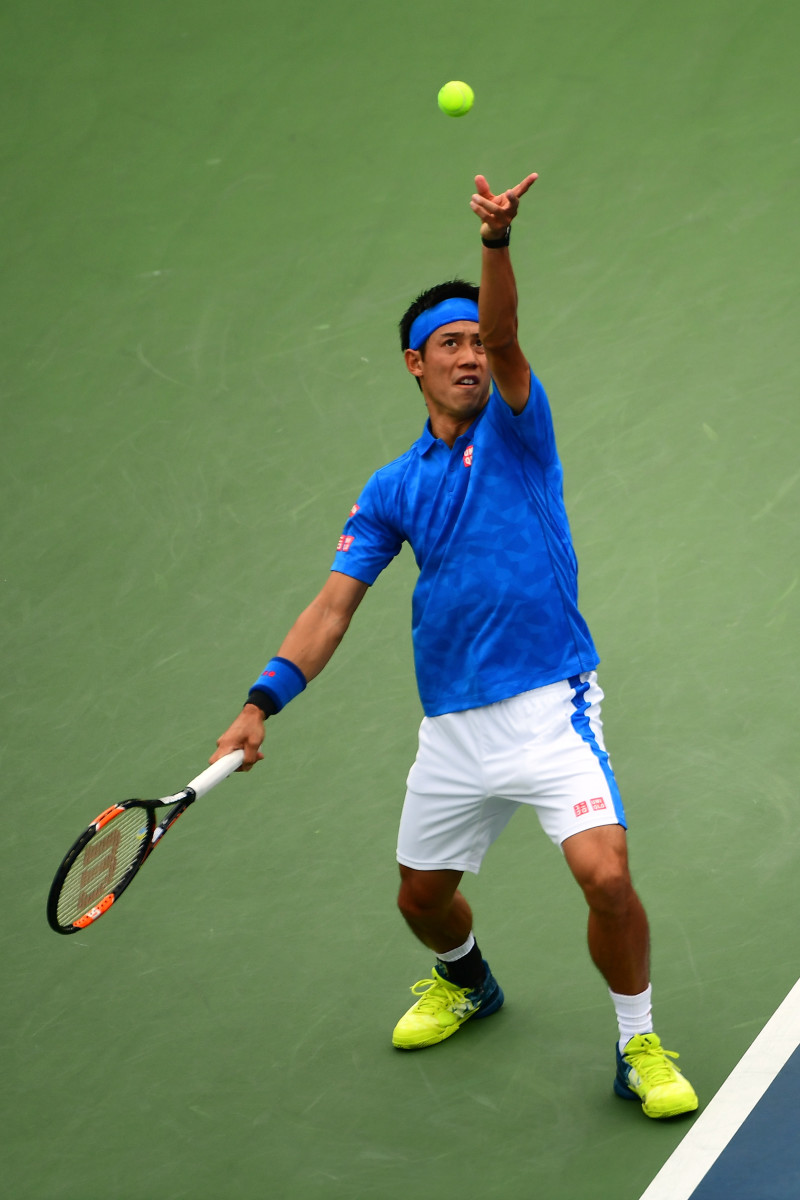
Karolina Pliskova
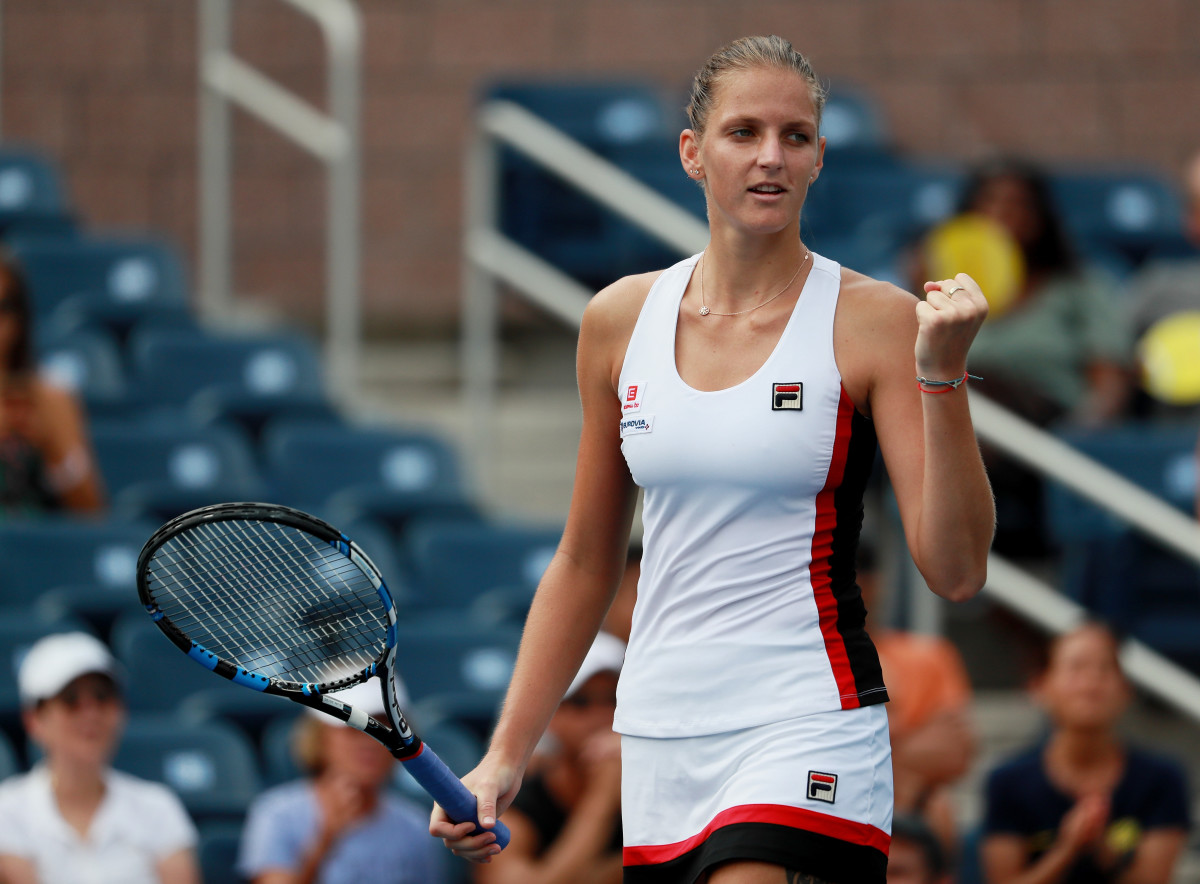
Kristina Mladenovic
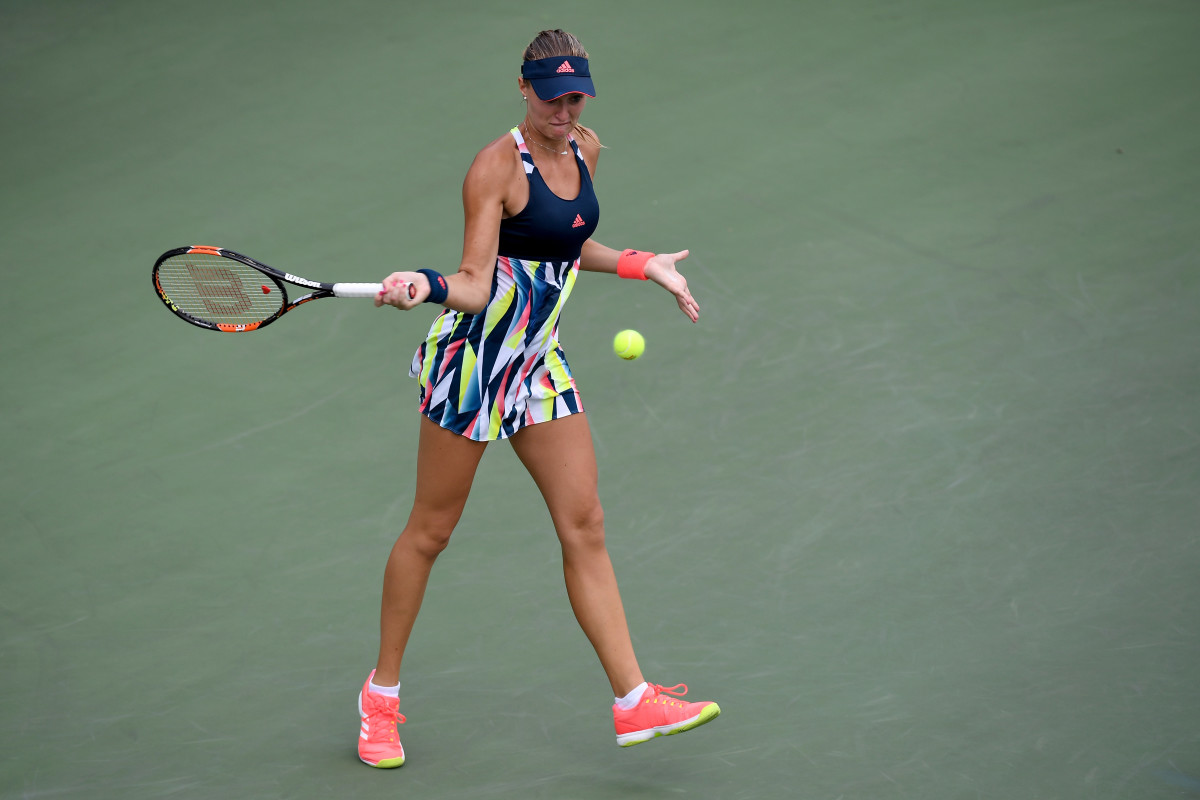
Kurumi Nara
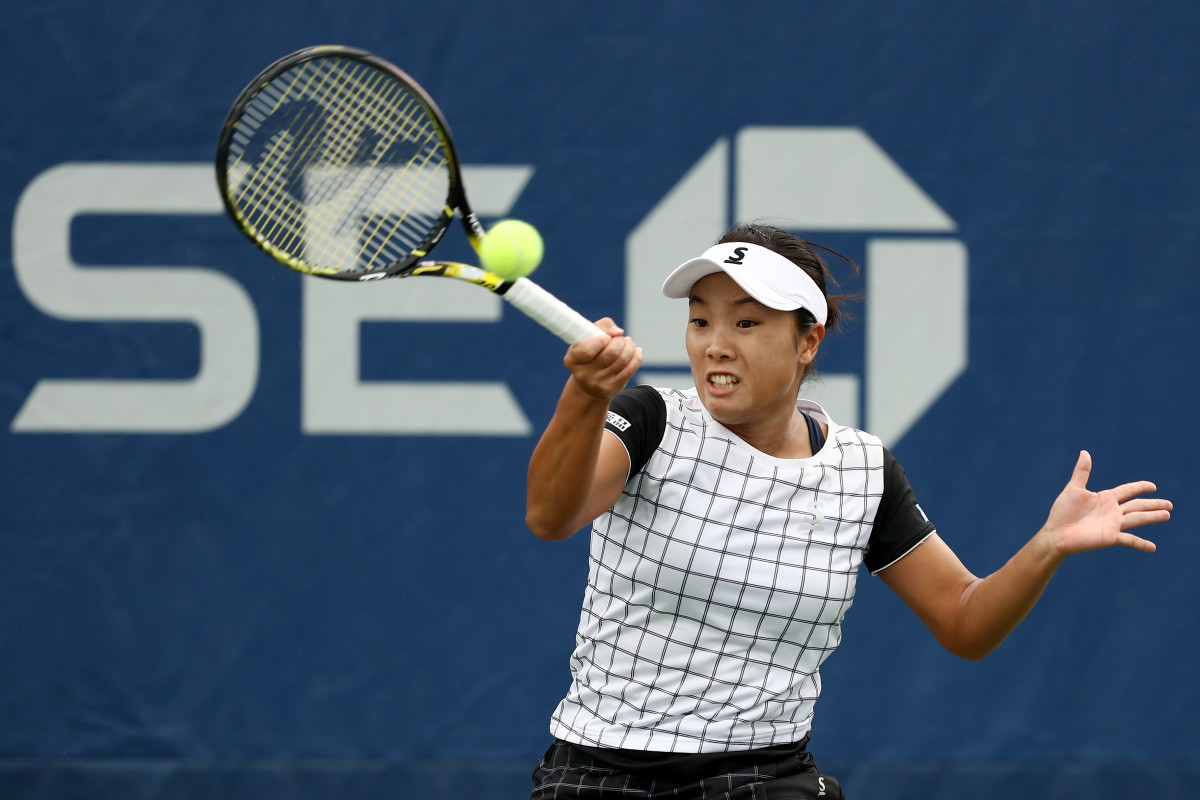
Julia Goerges, Venus Williams
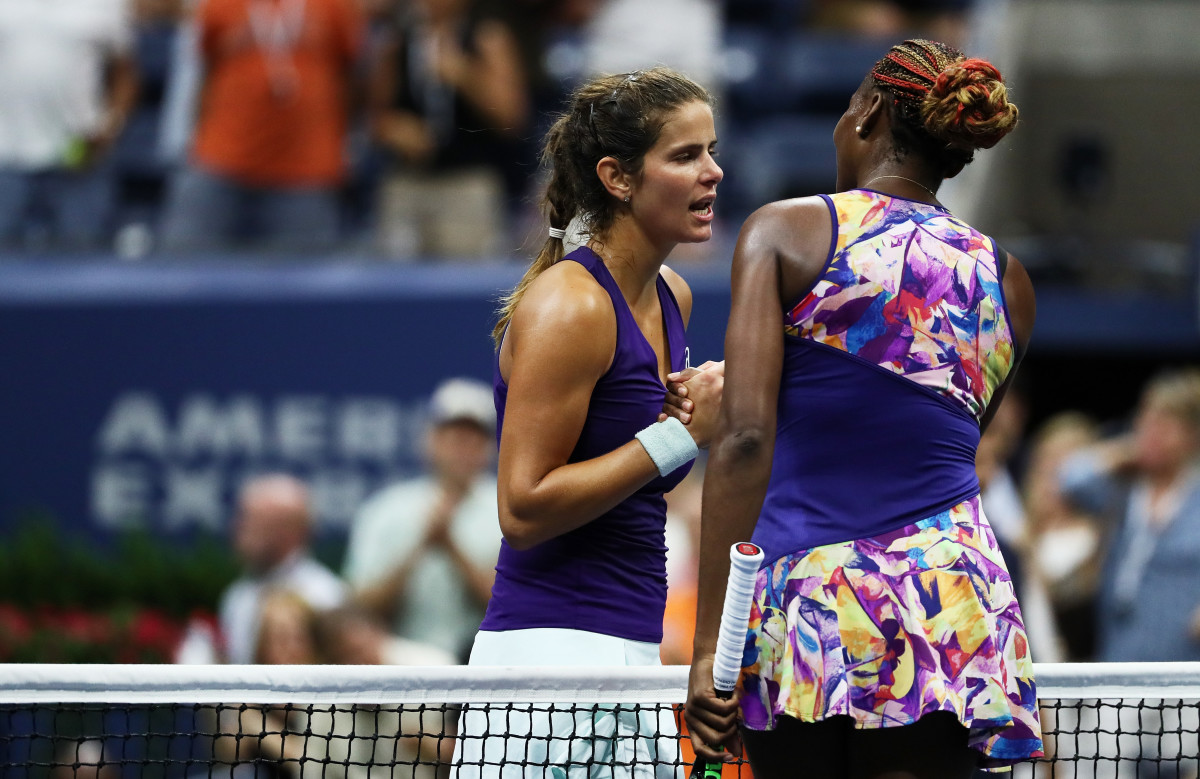
Venus Williams
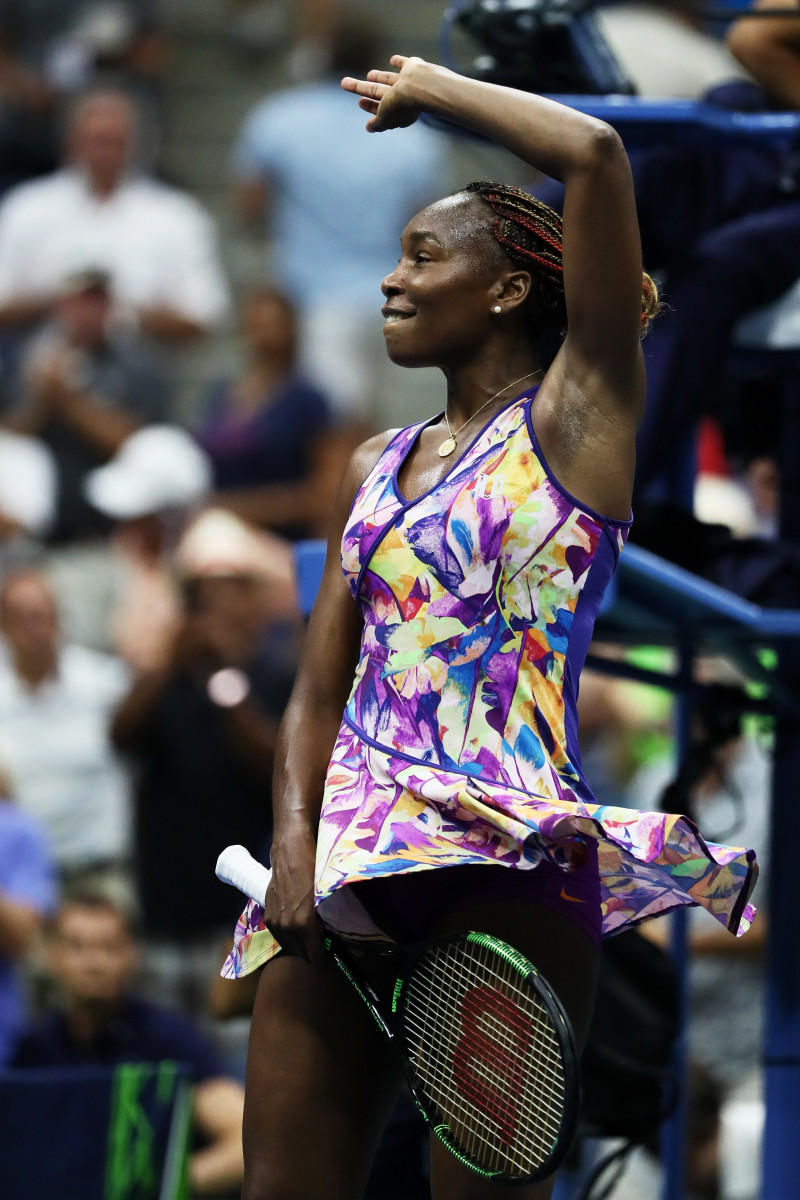
Nick Kyrgios
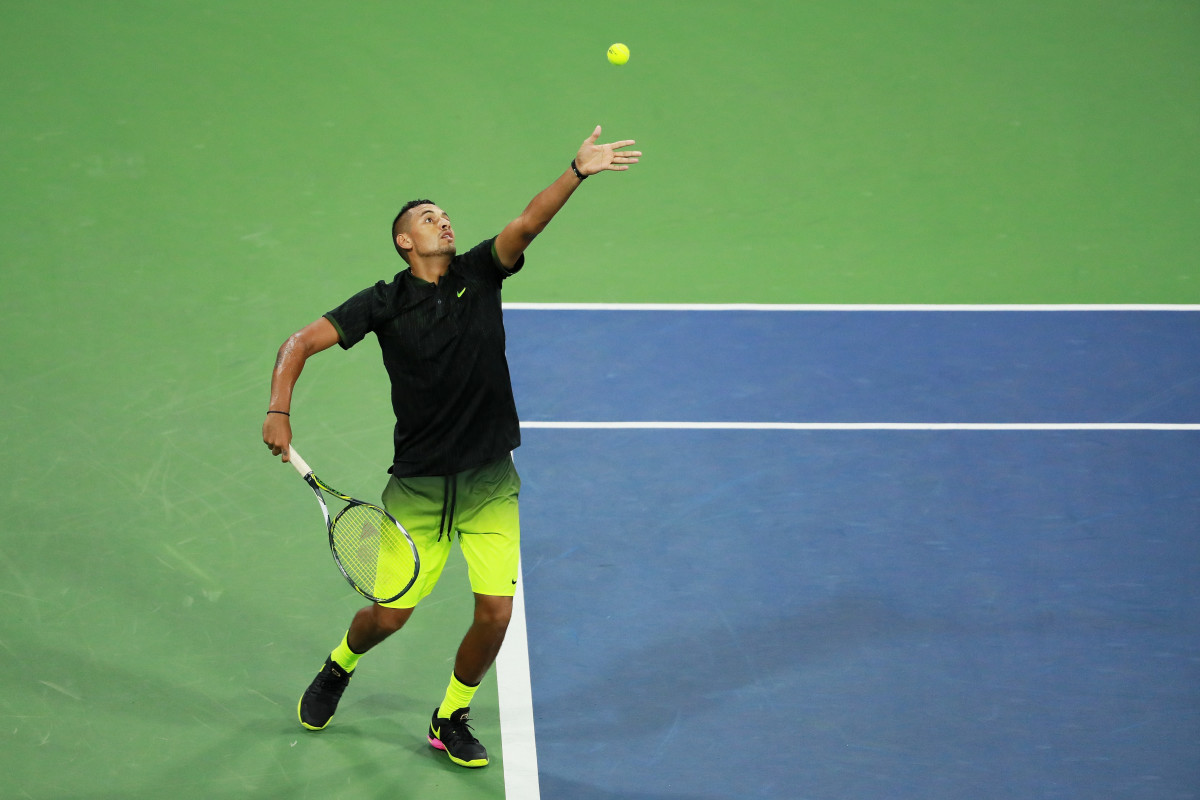
Jelena Jankovic
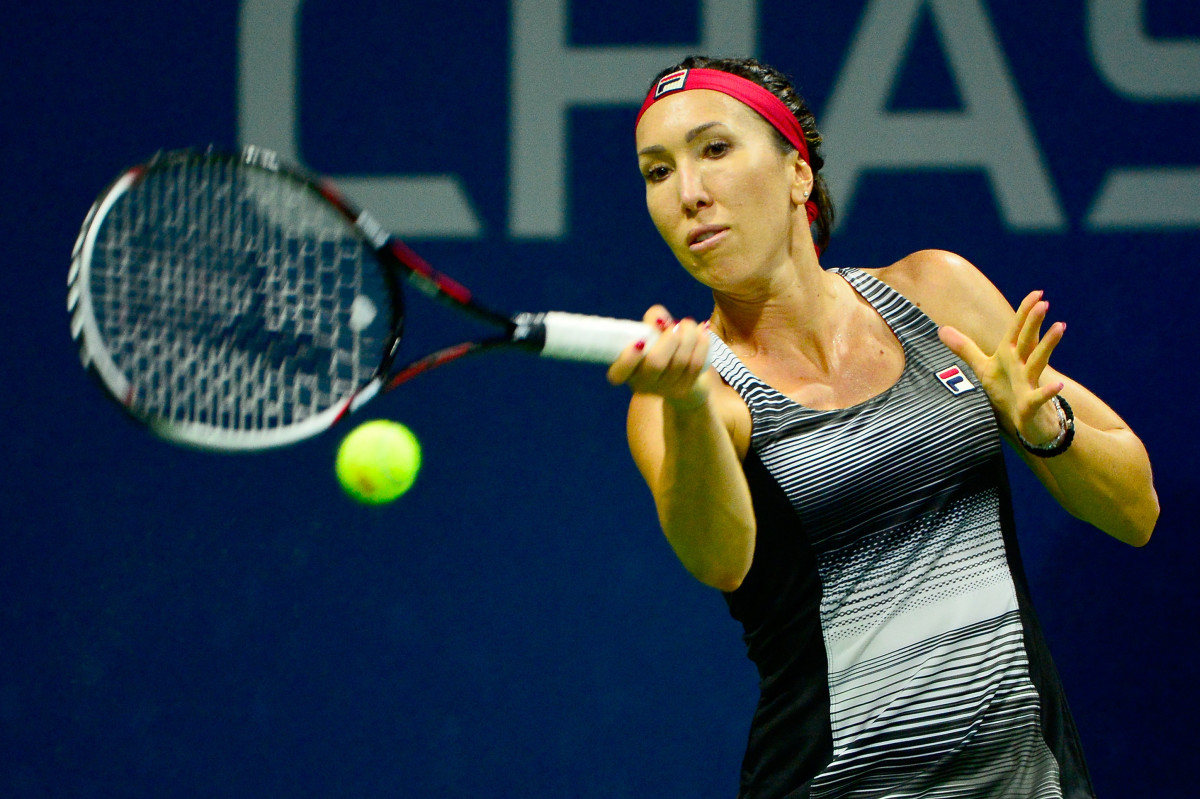
Serena Williams
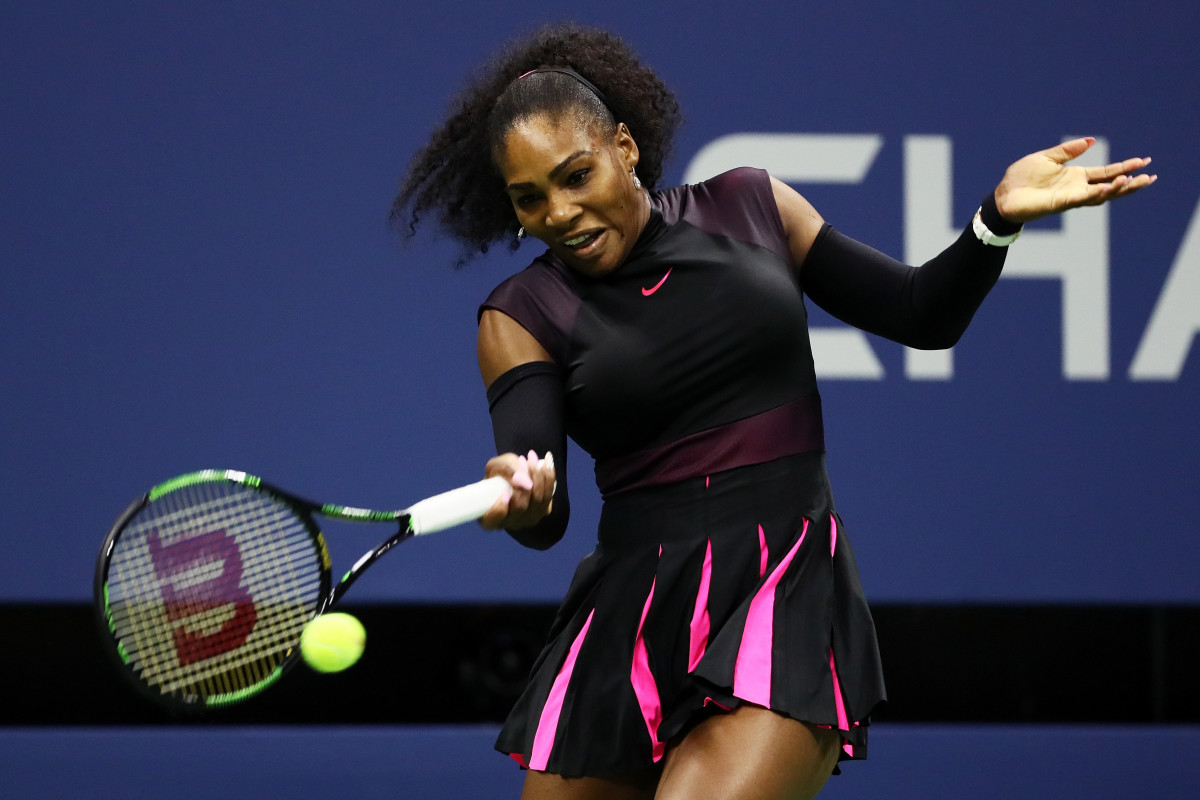
Timea Bacsinszky
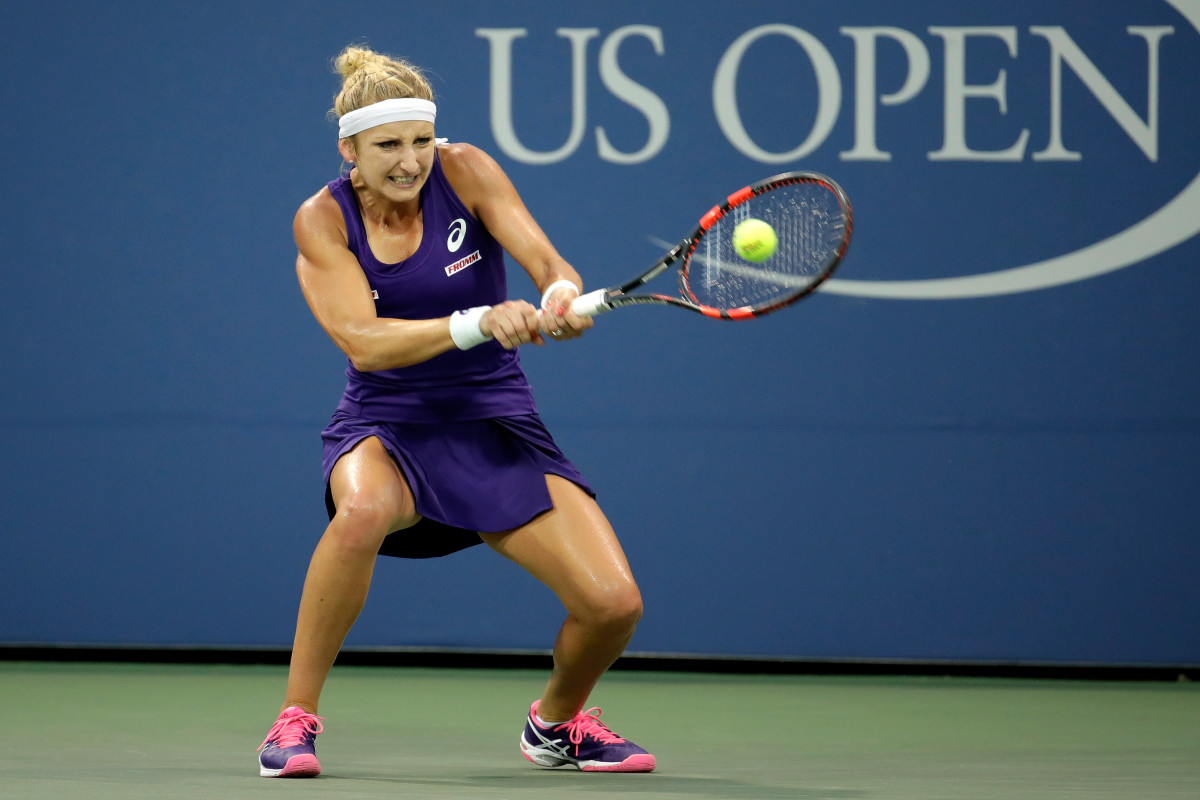
Serena Williams
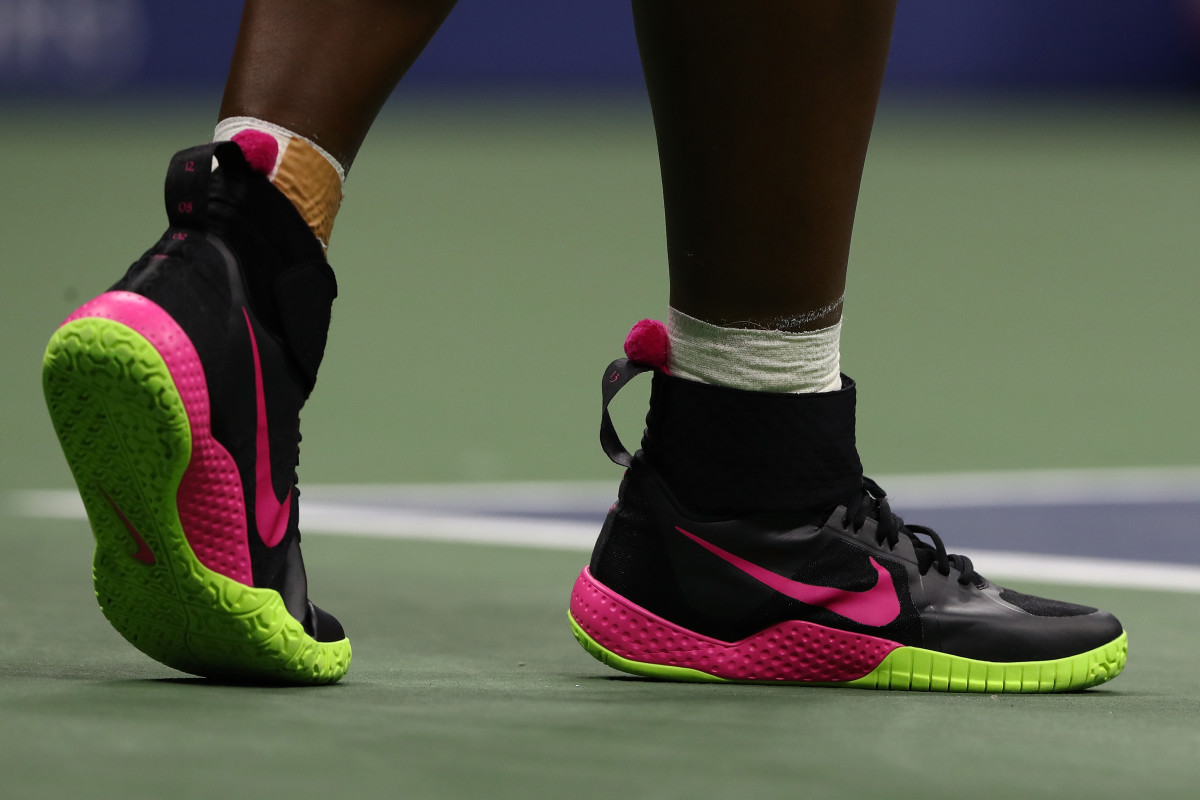
Feliciano Lopez
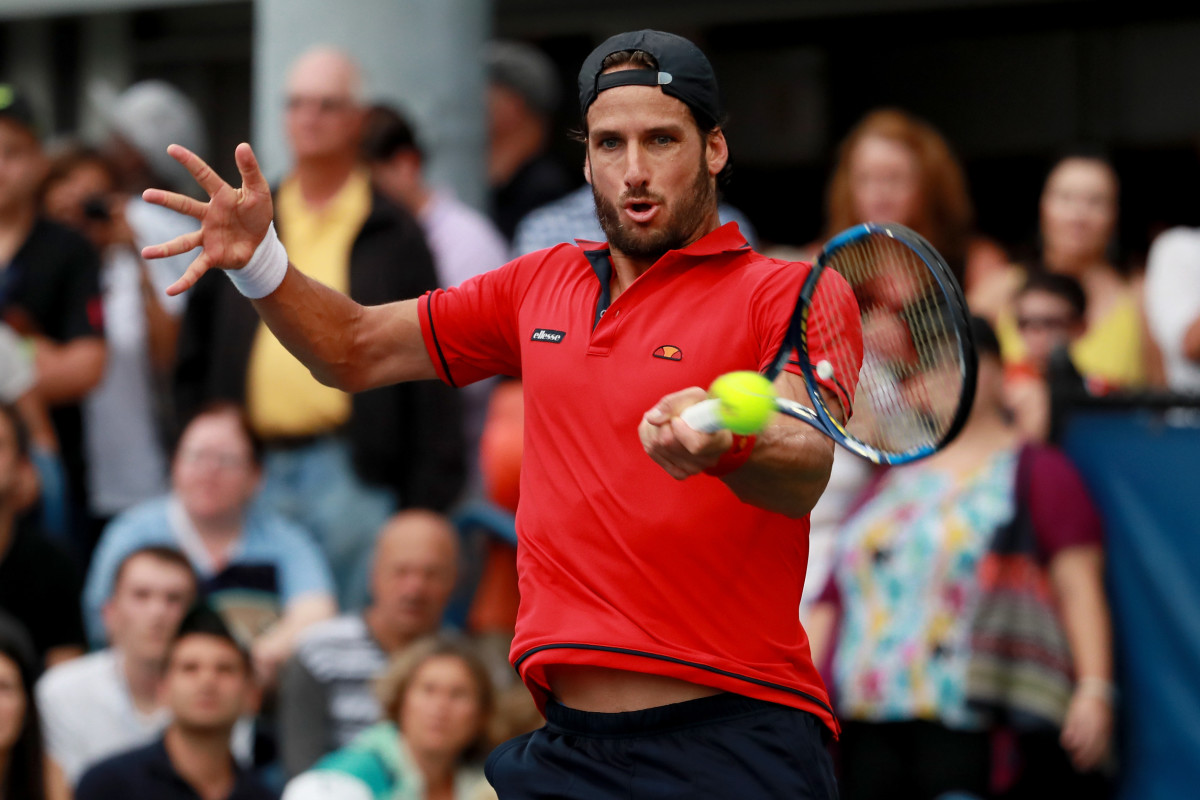
Juan Martin del Potro
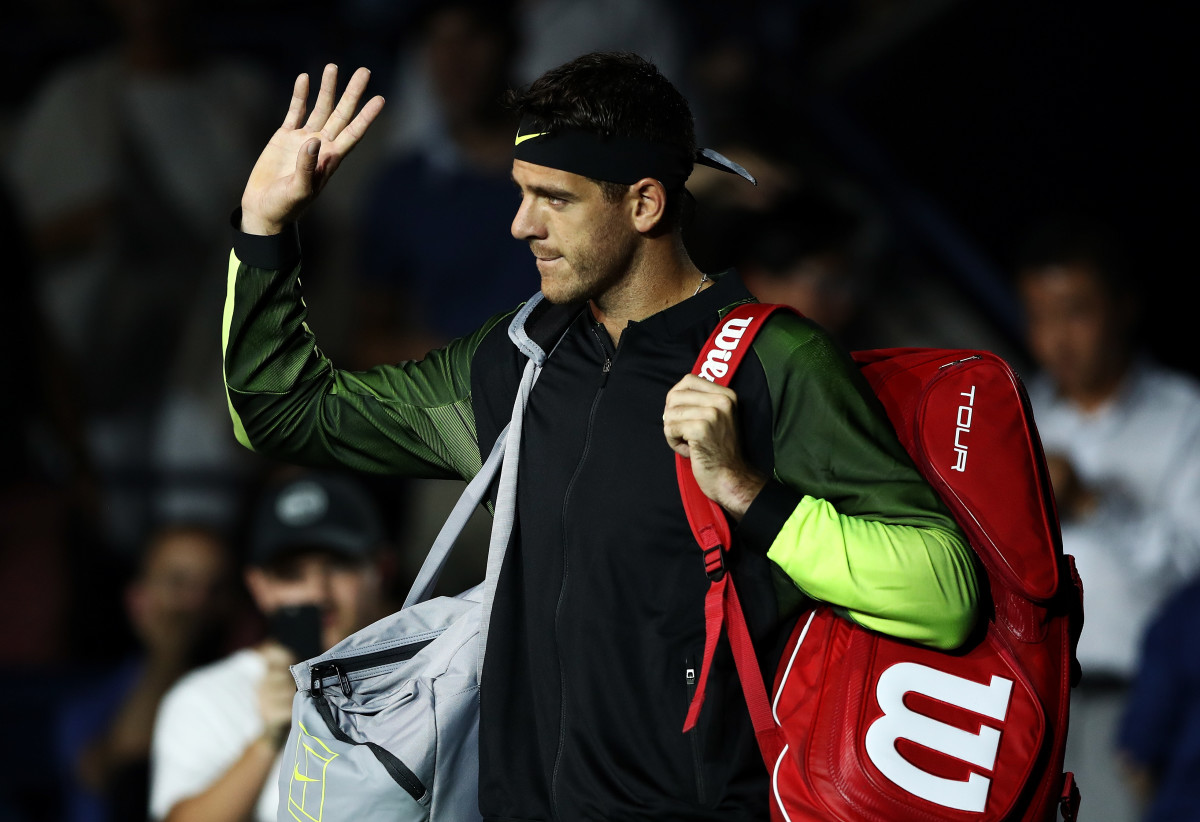
Sam Stosur
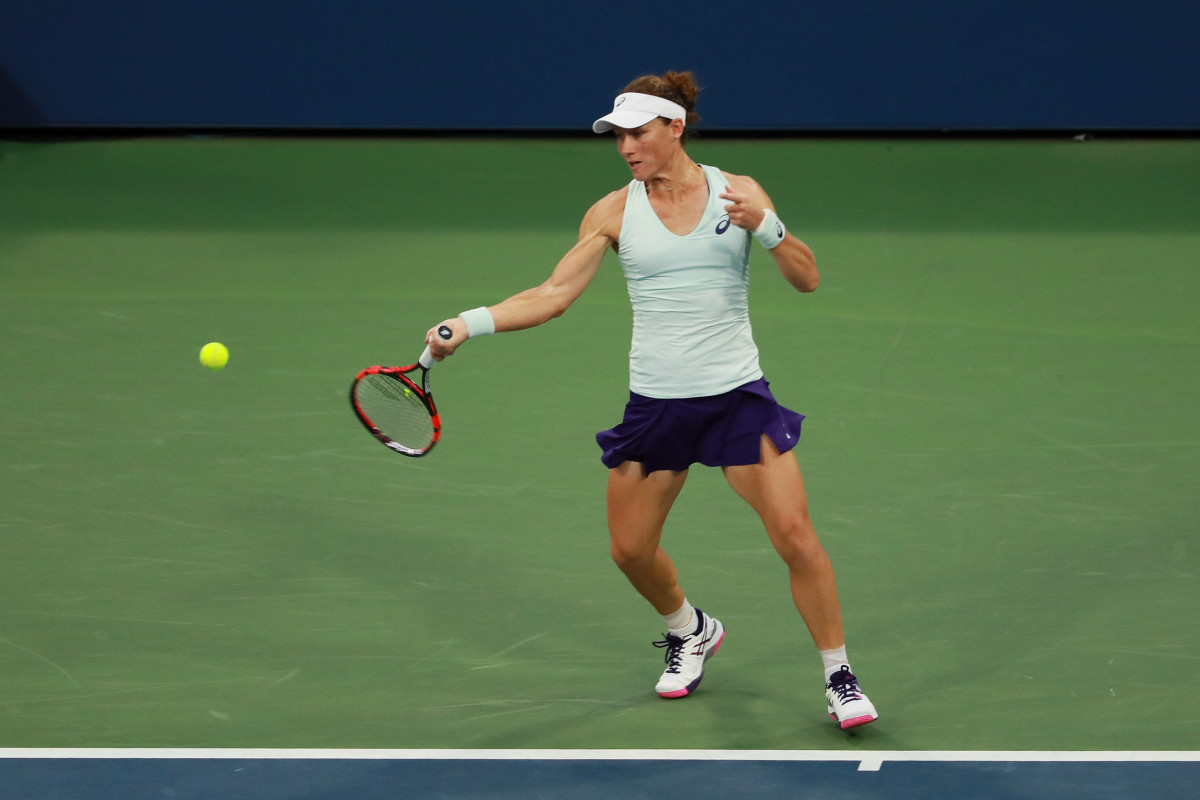
Monica Niculescu
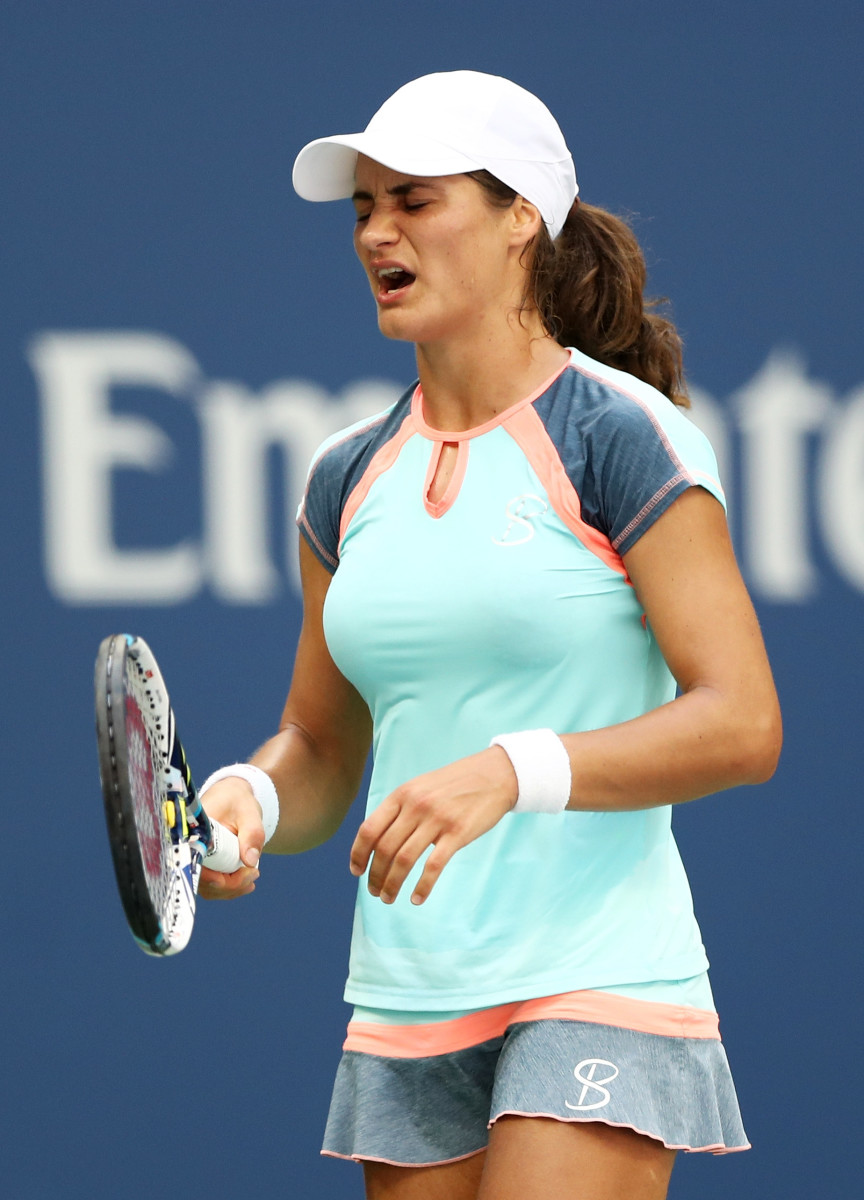
Dominika Cibulkova
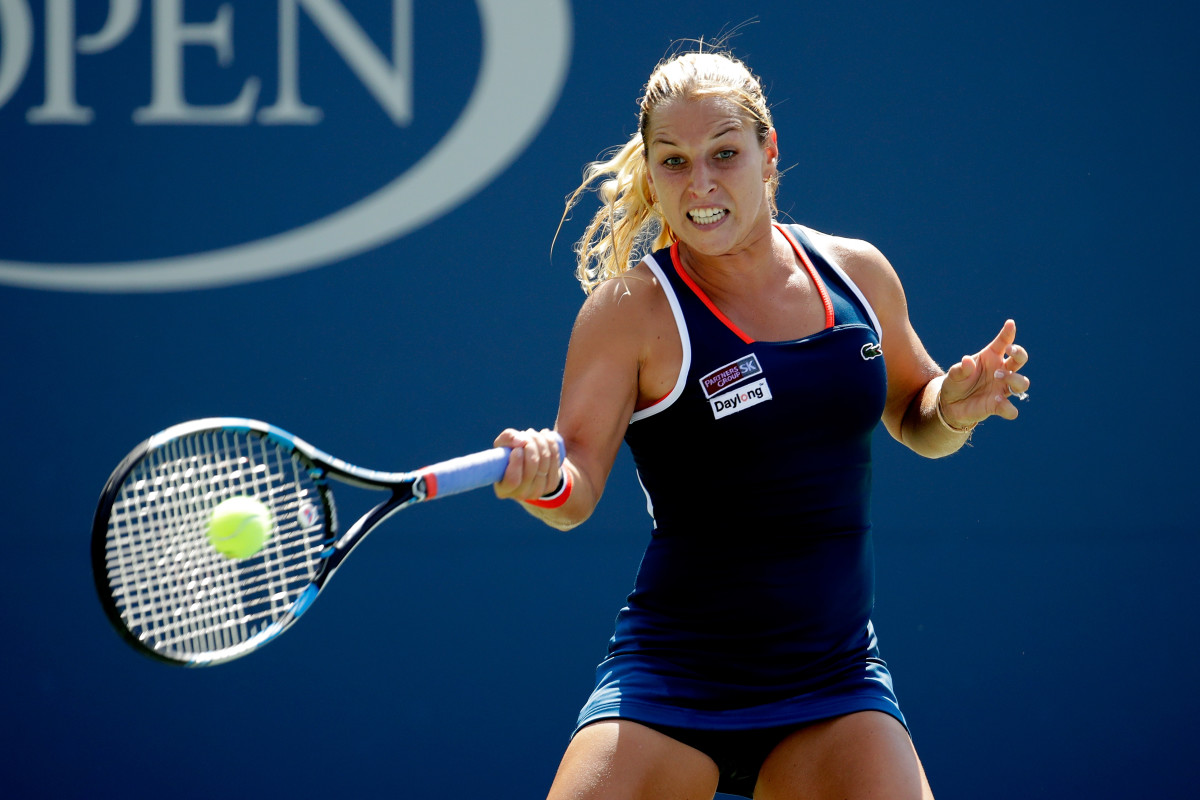
Roberta Vinci
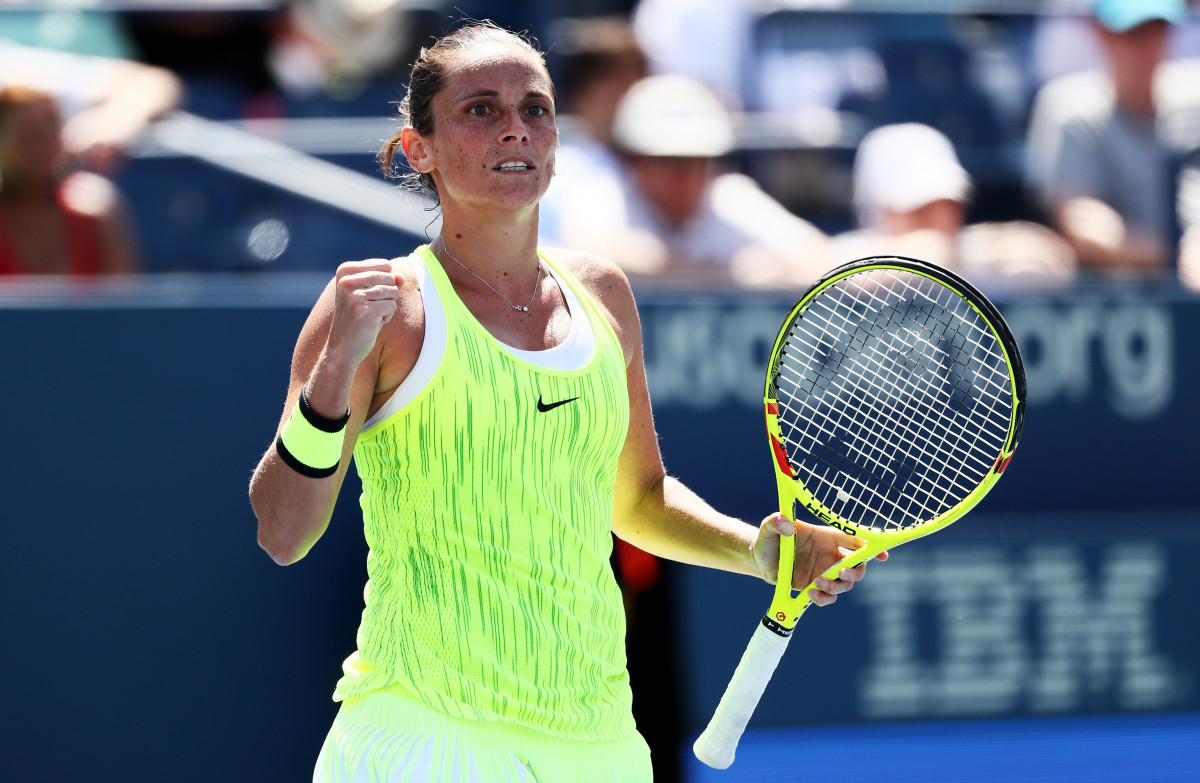
Kevin Anderson
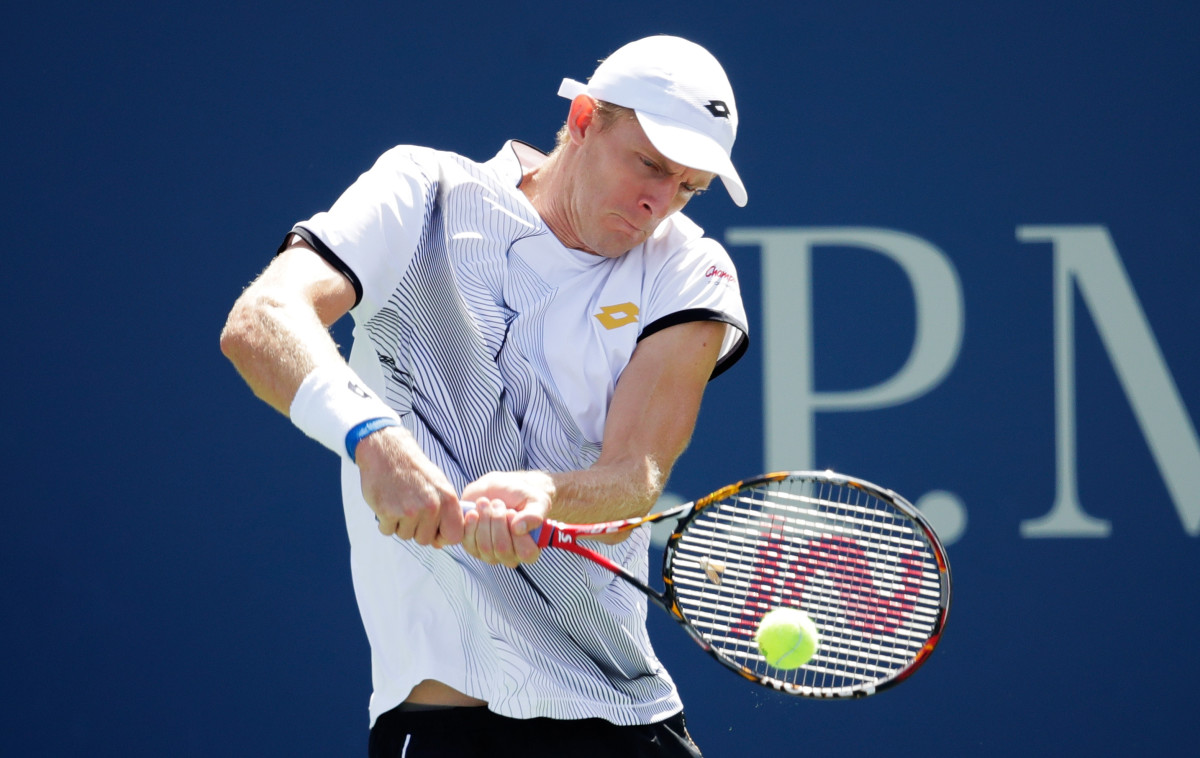
Lesia Tsurenko
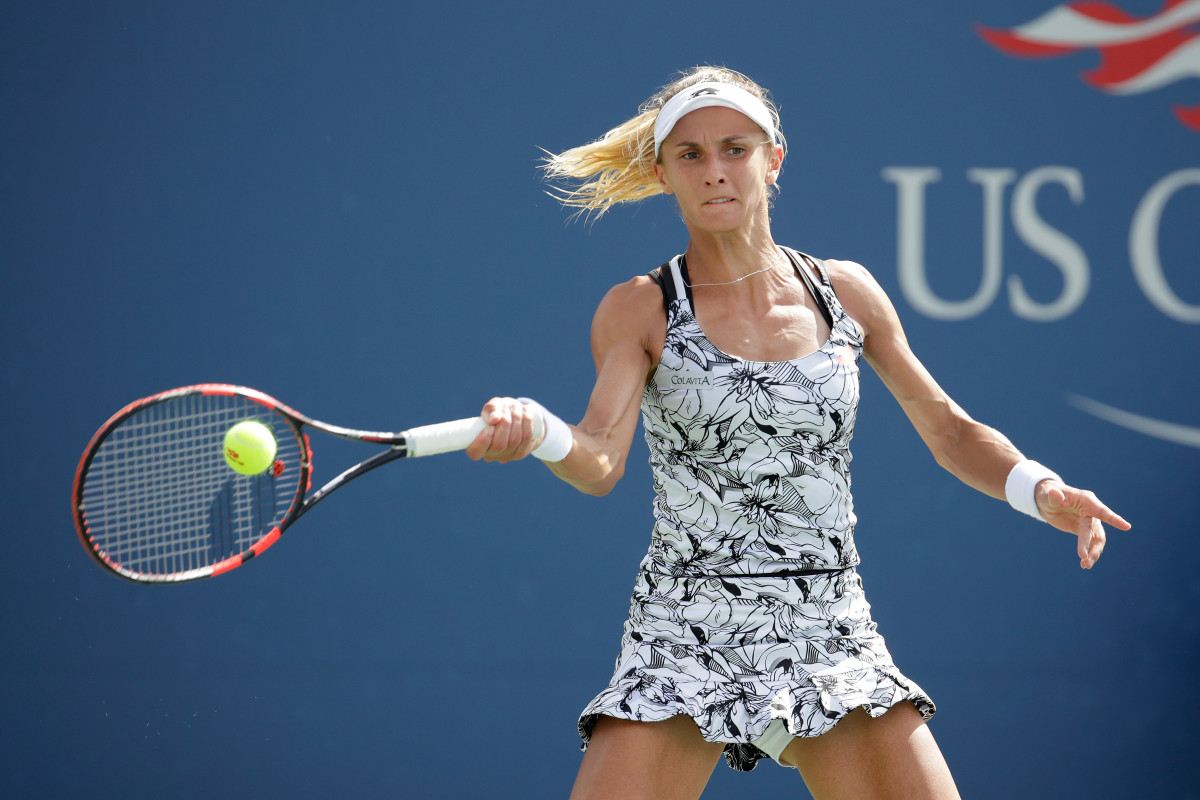
Jack Sock
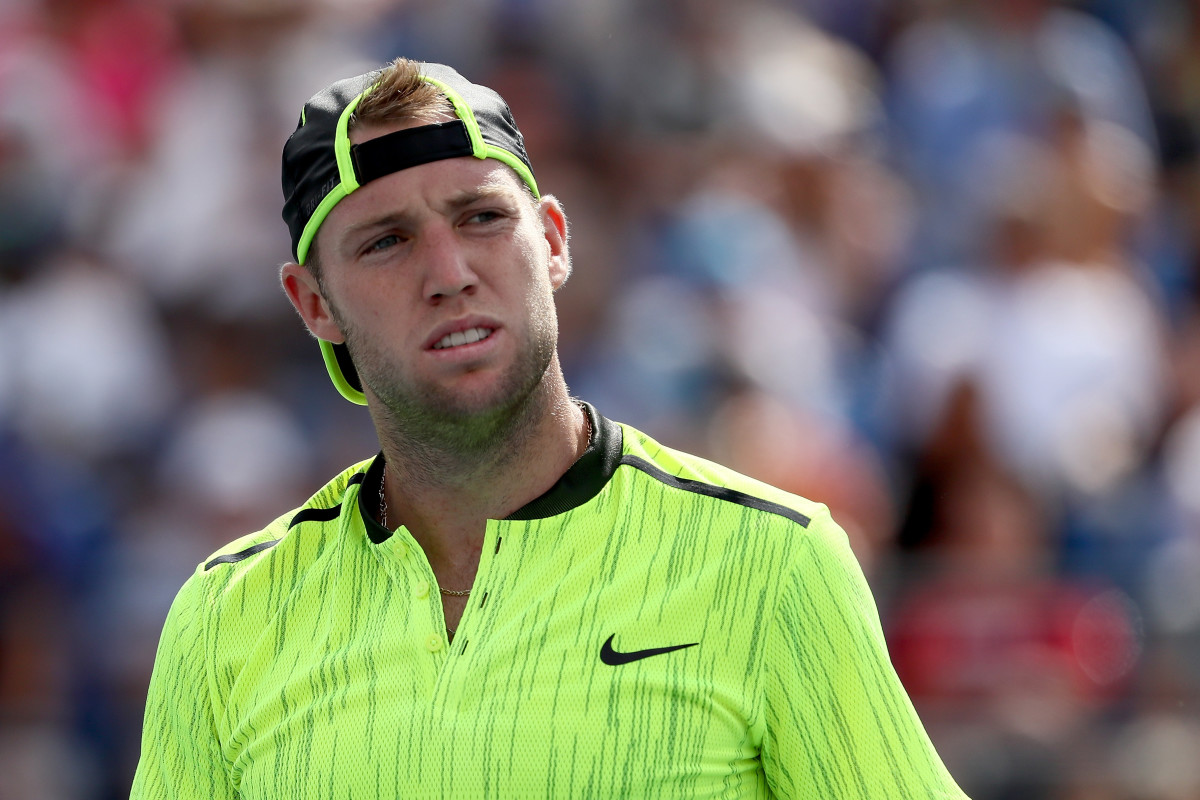
Naomi Osaka
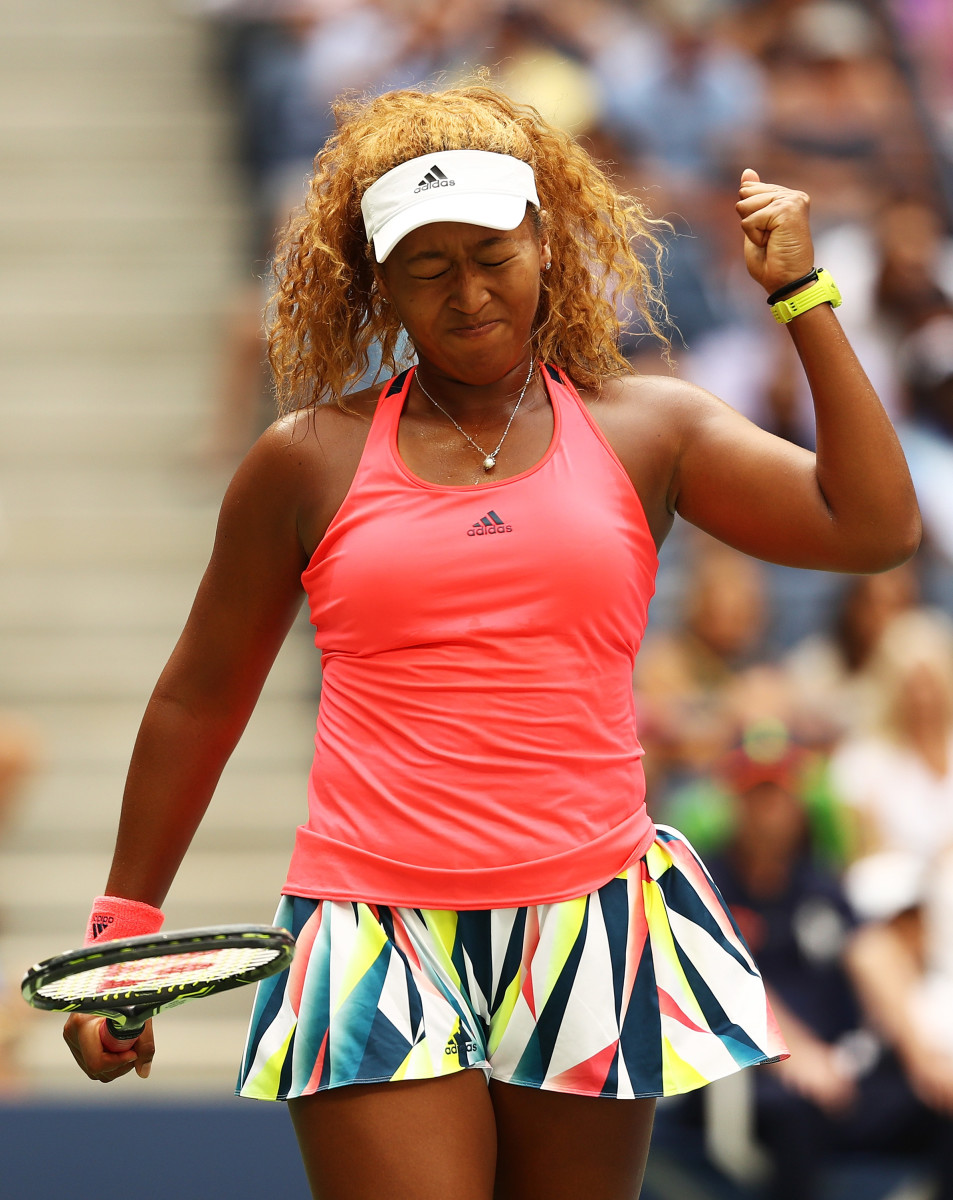
Naomi Osaka
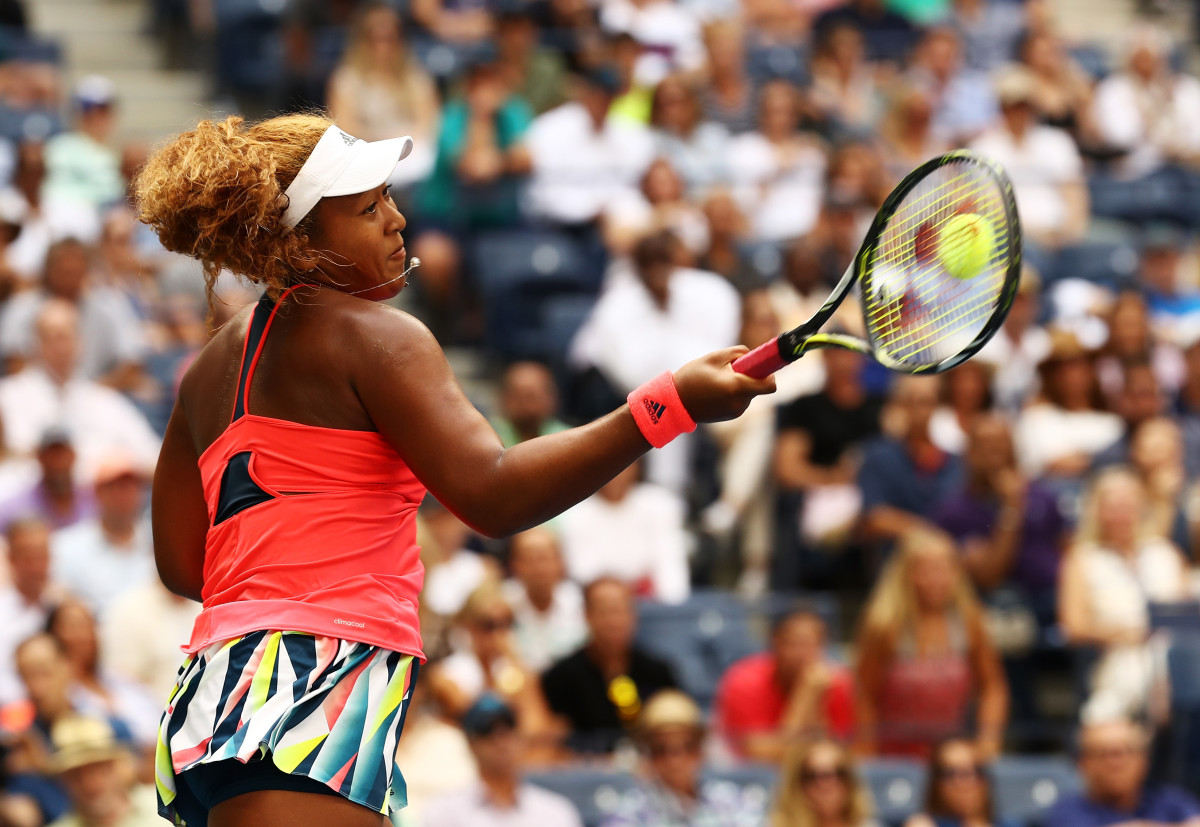
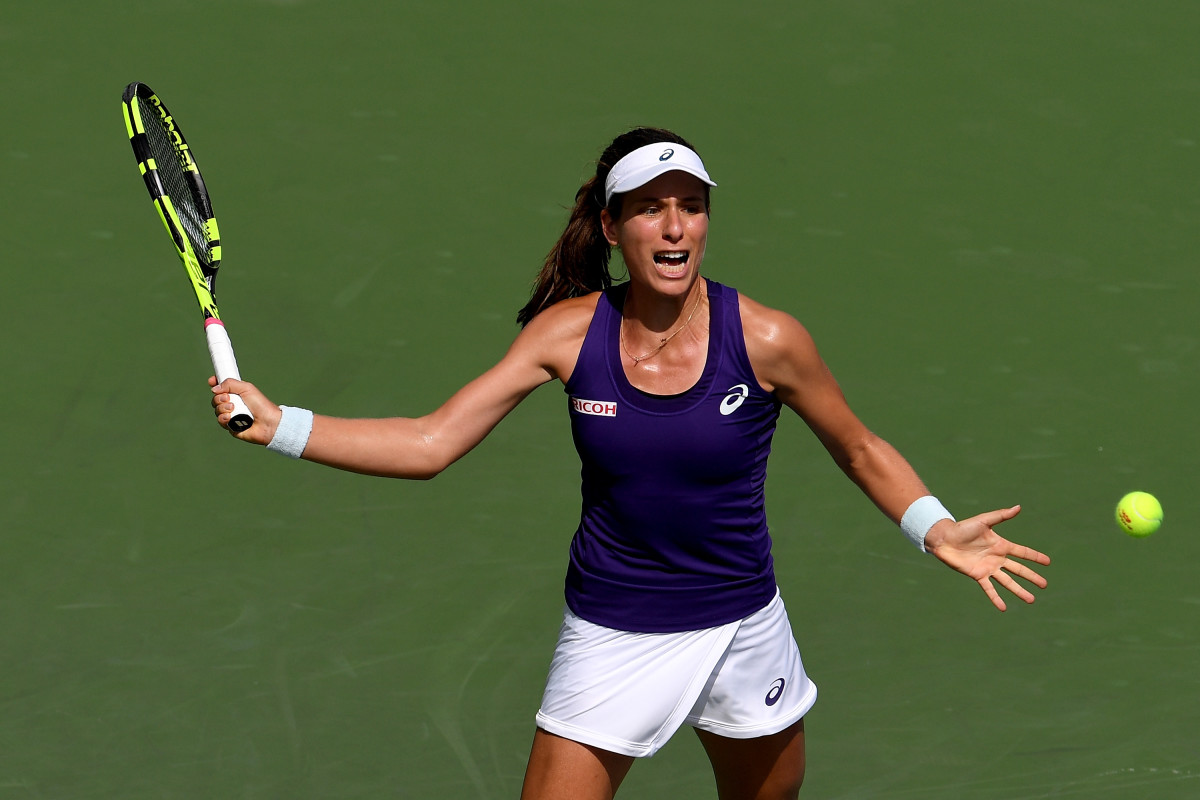
Marcos Baghdatis
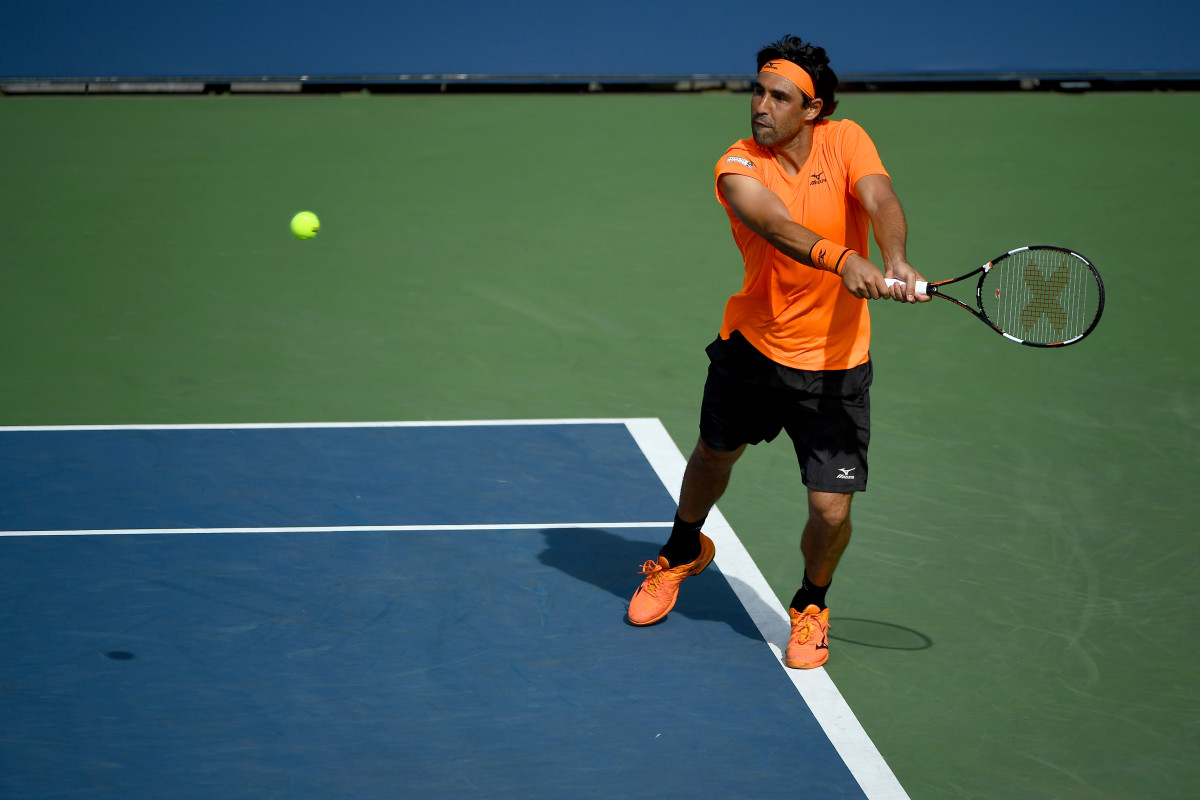
Ryan Harrison
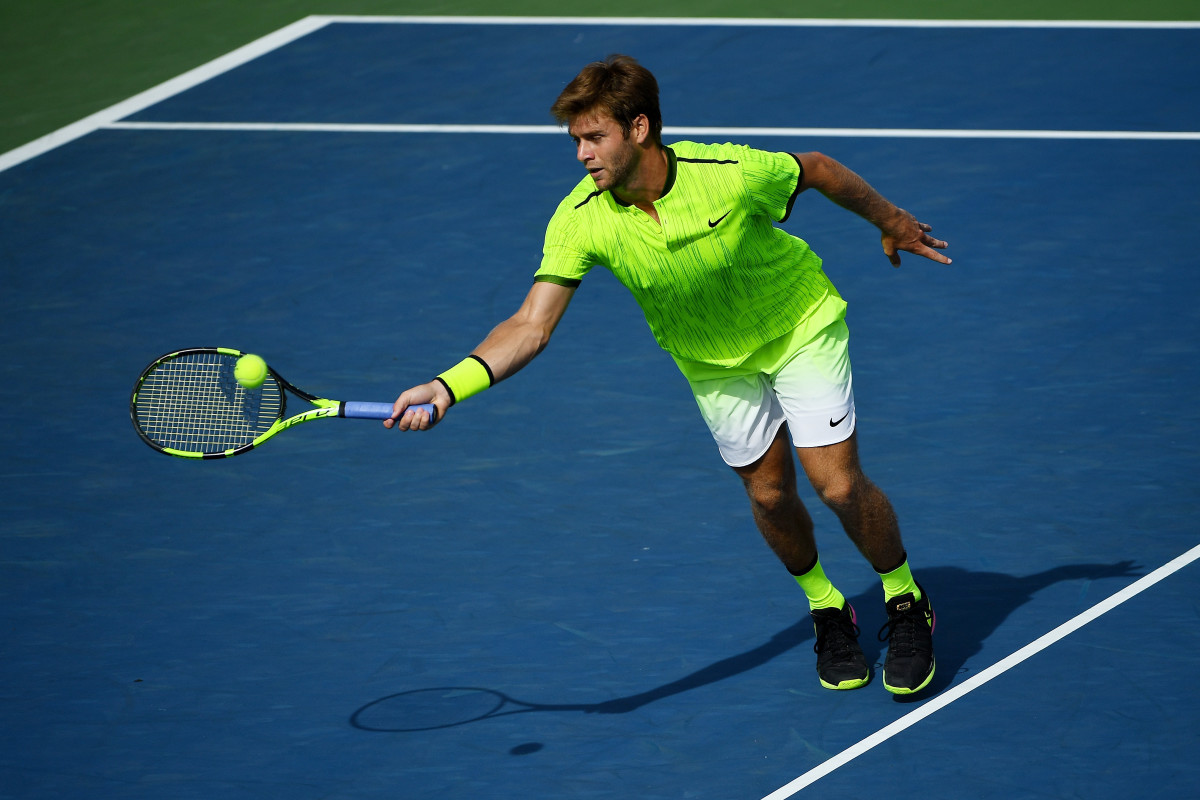
Petra Kvitova
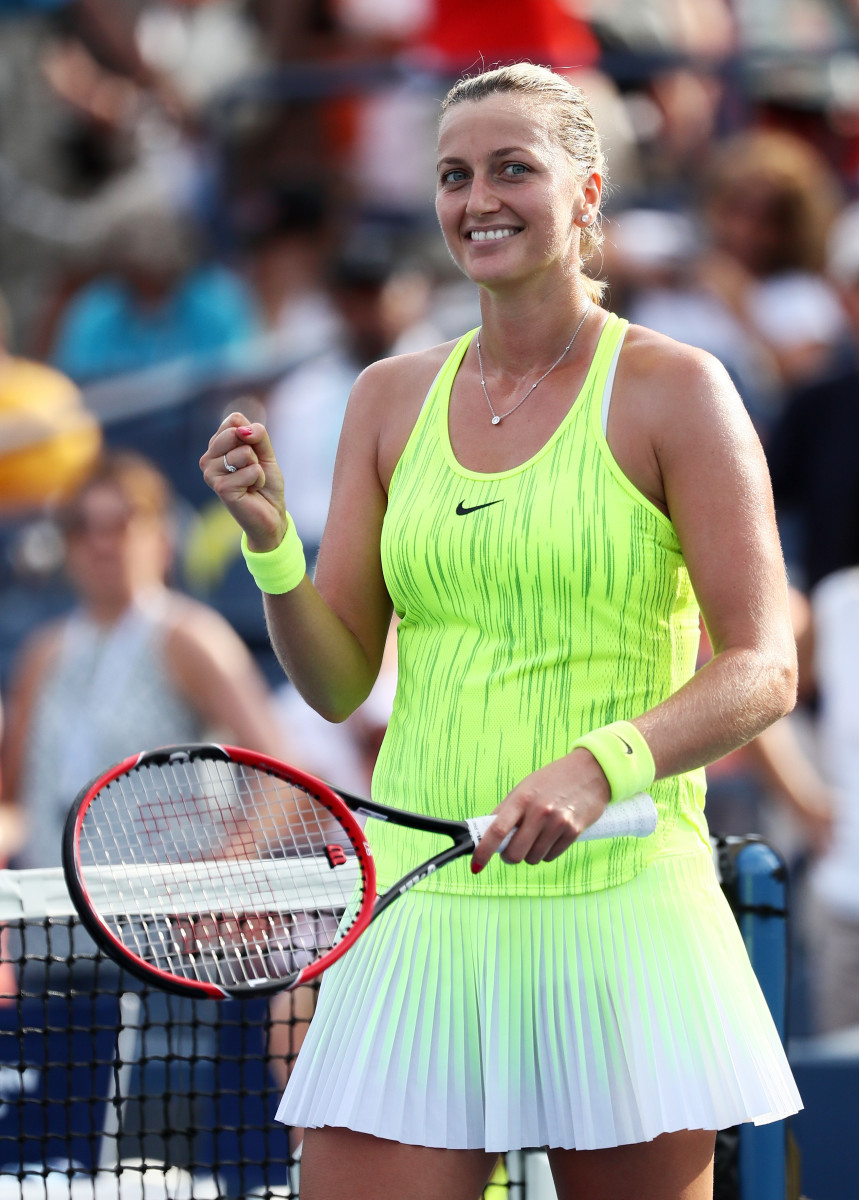
Elina Svitolina
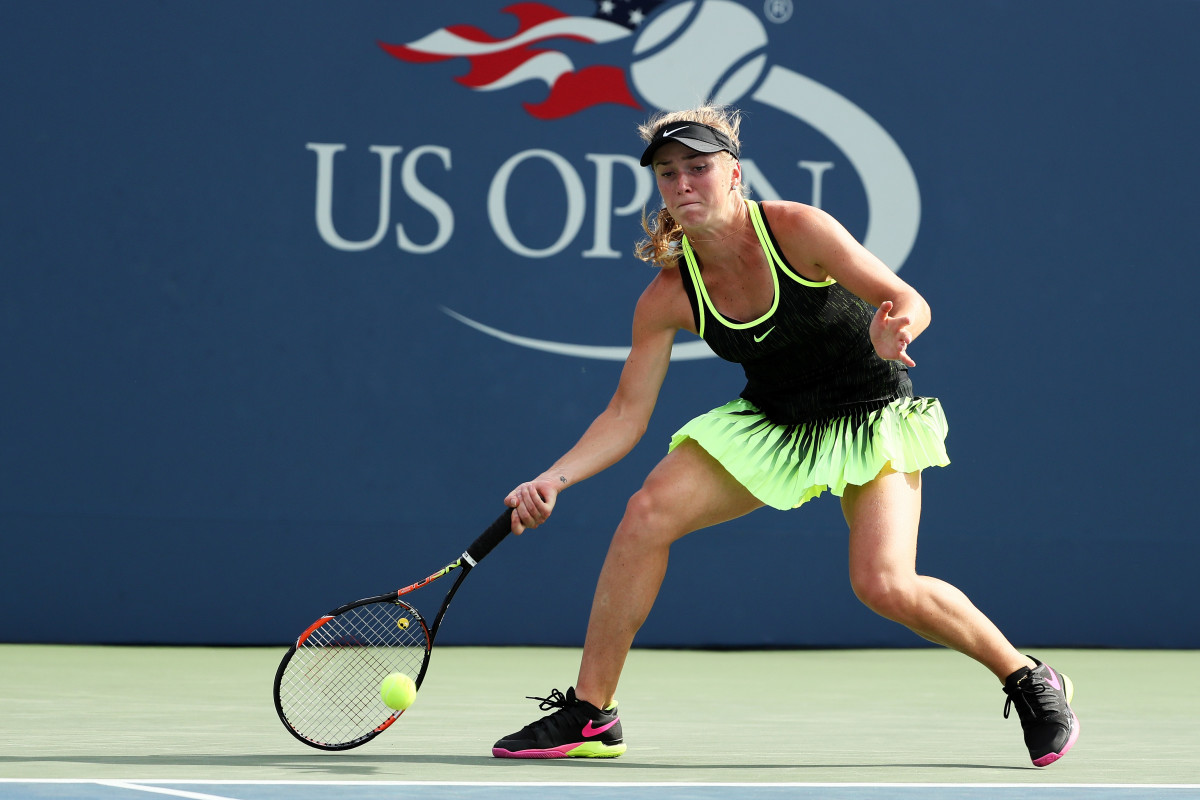
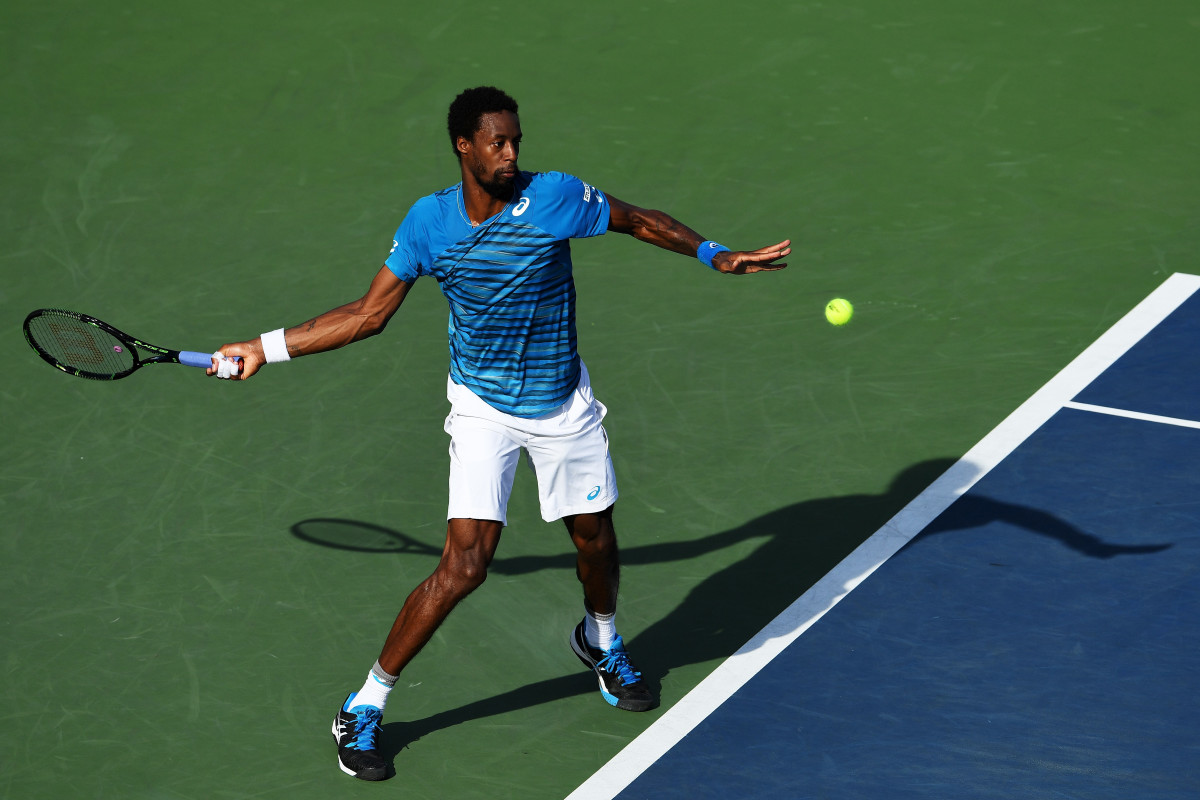
Lucas Pouille
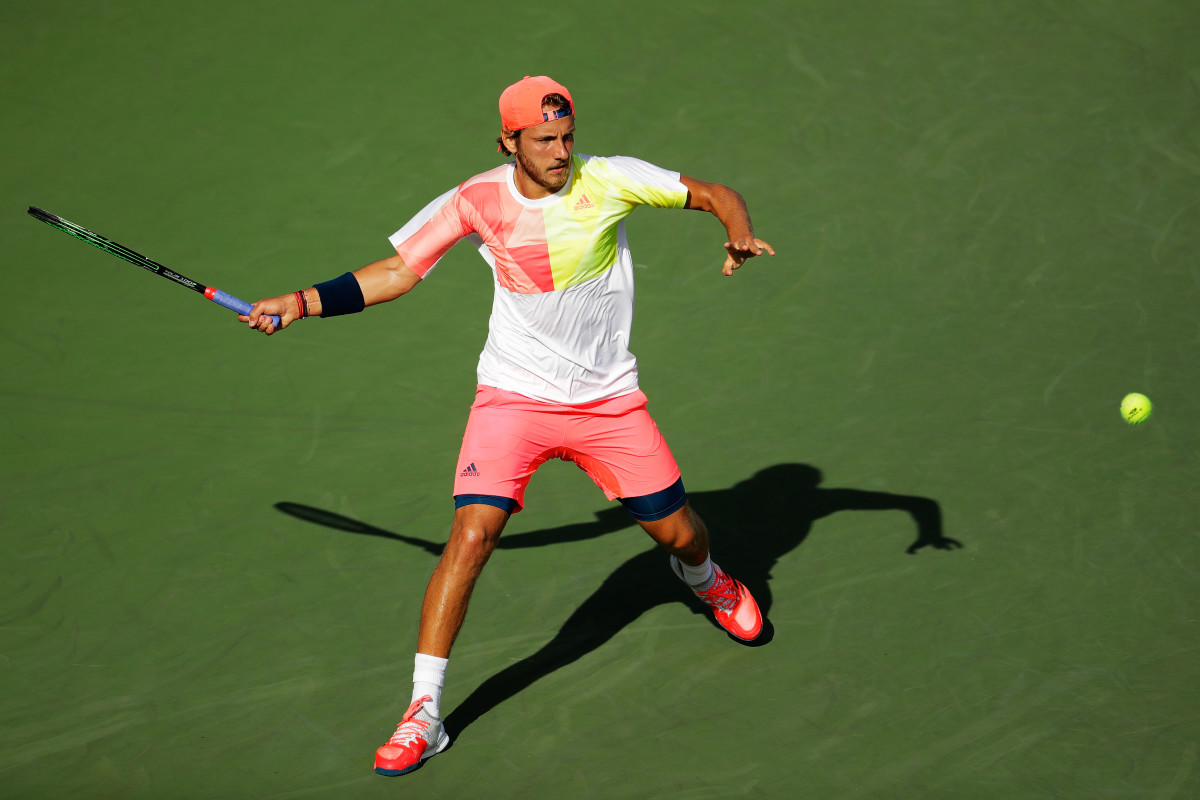
Kyle Edmund
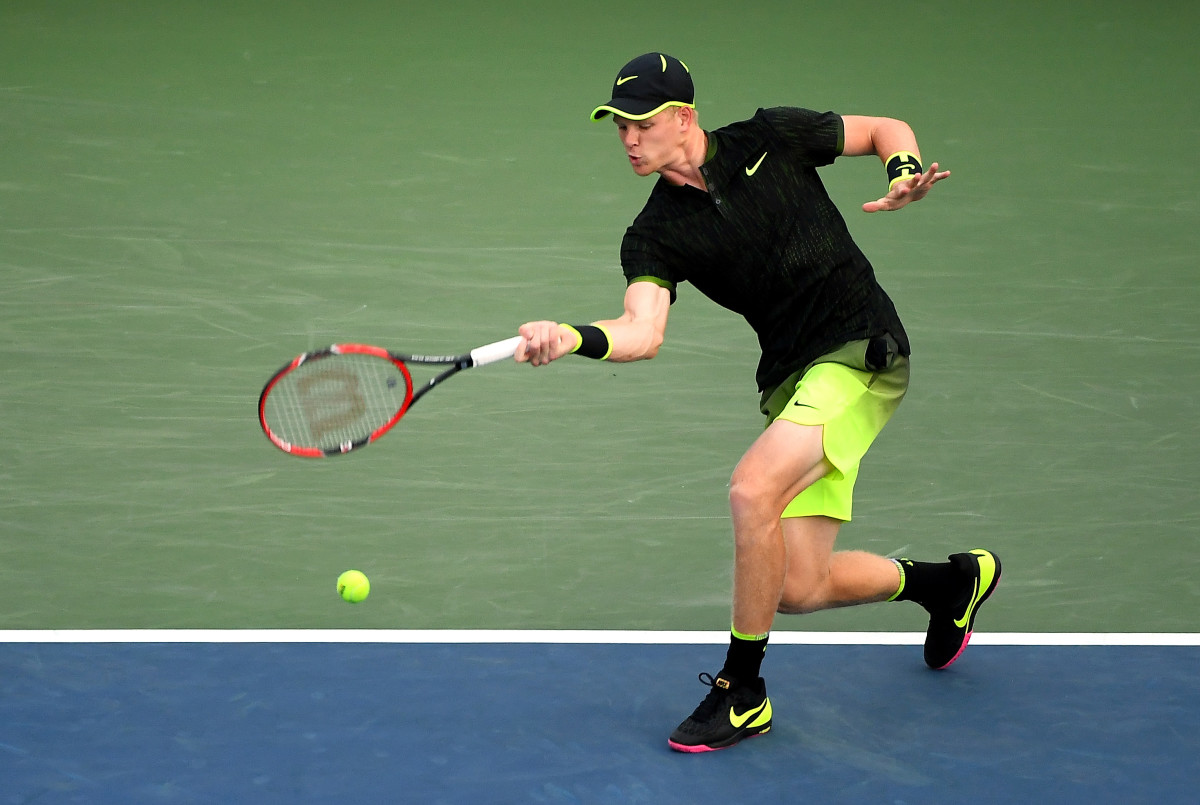
John Isner
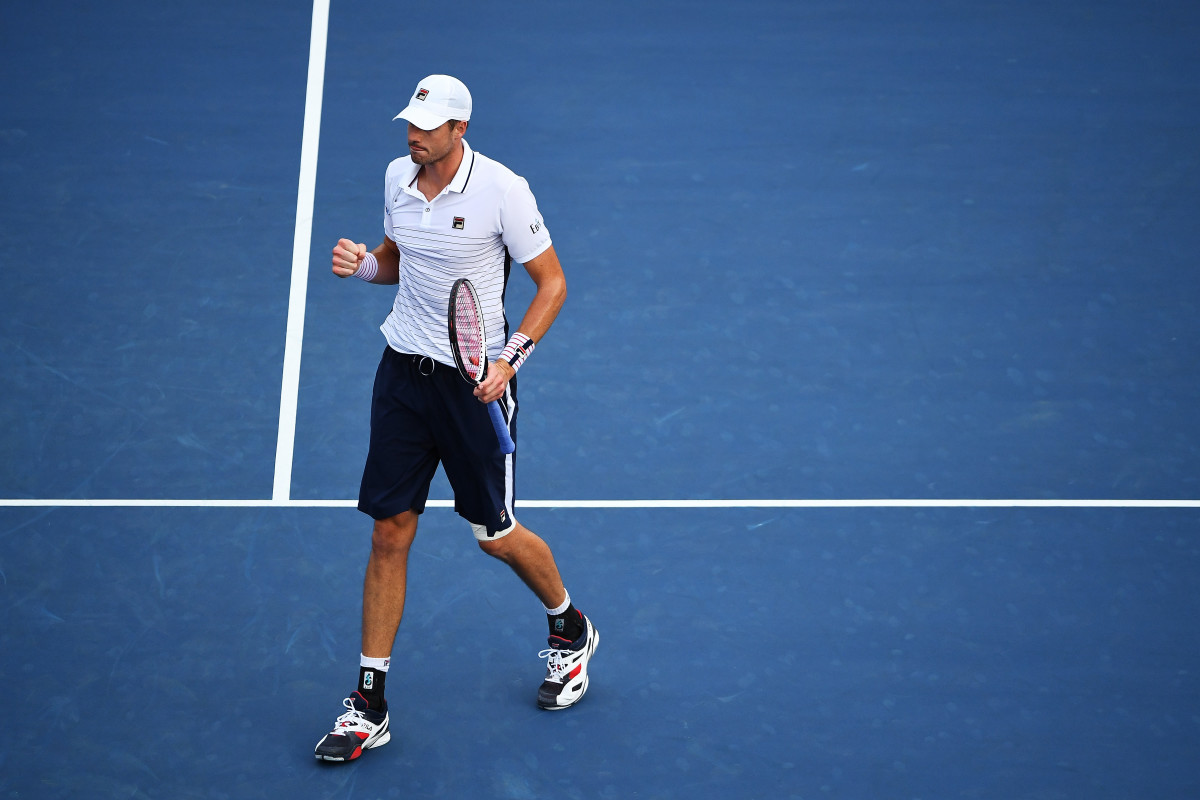
Nicole Gibbs
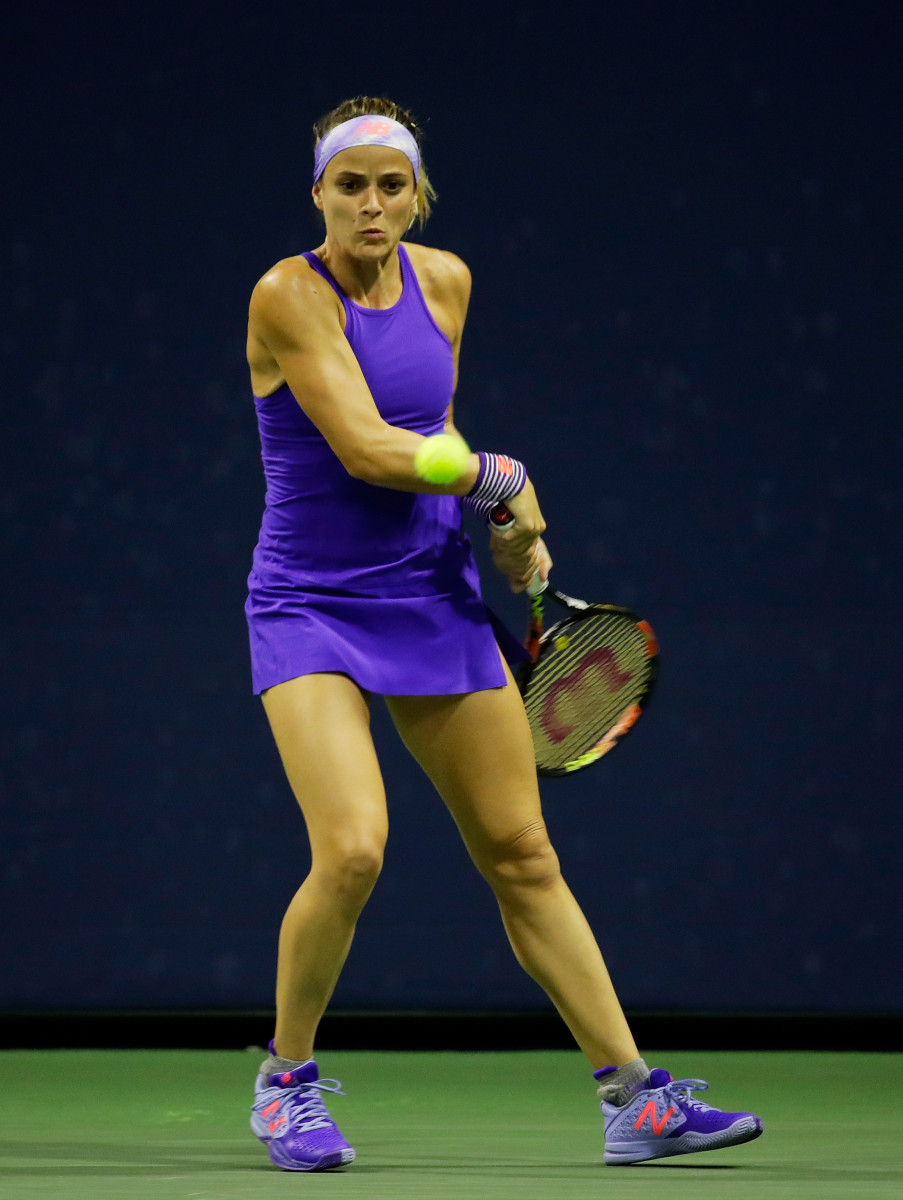
Laura Siegemund
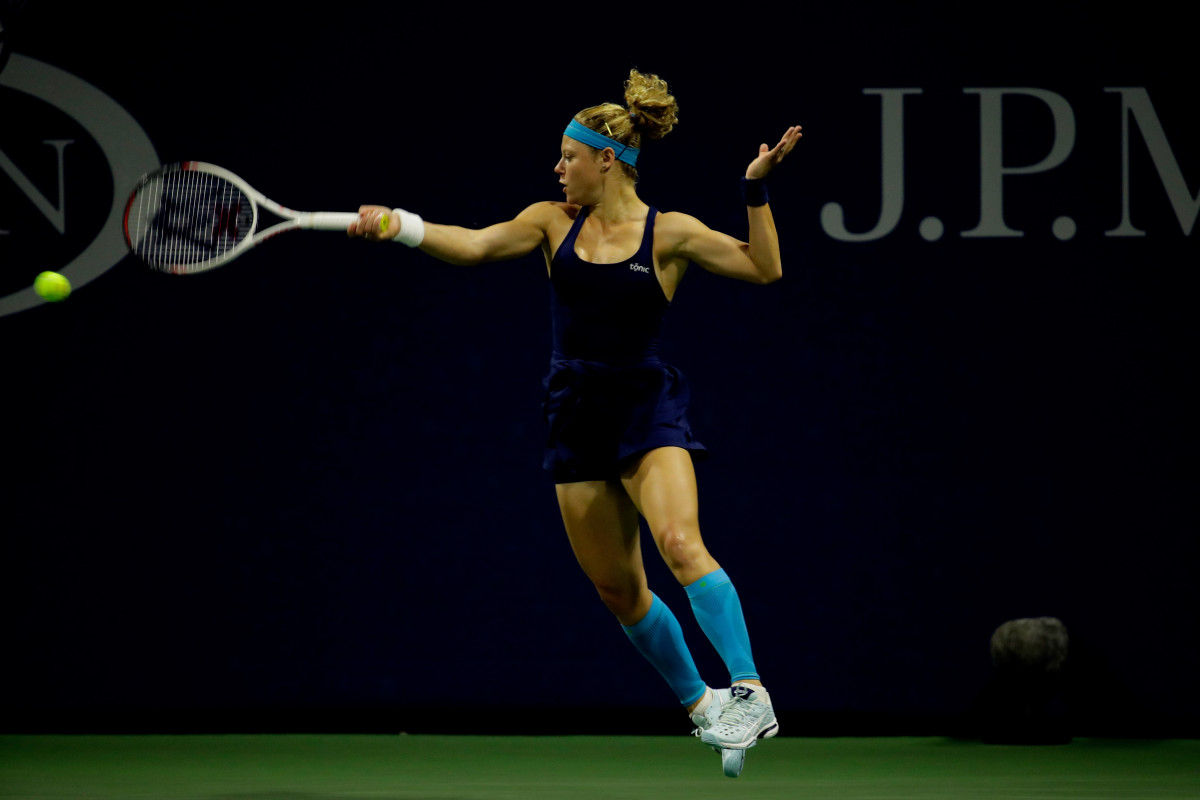
Daniel Evans
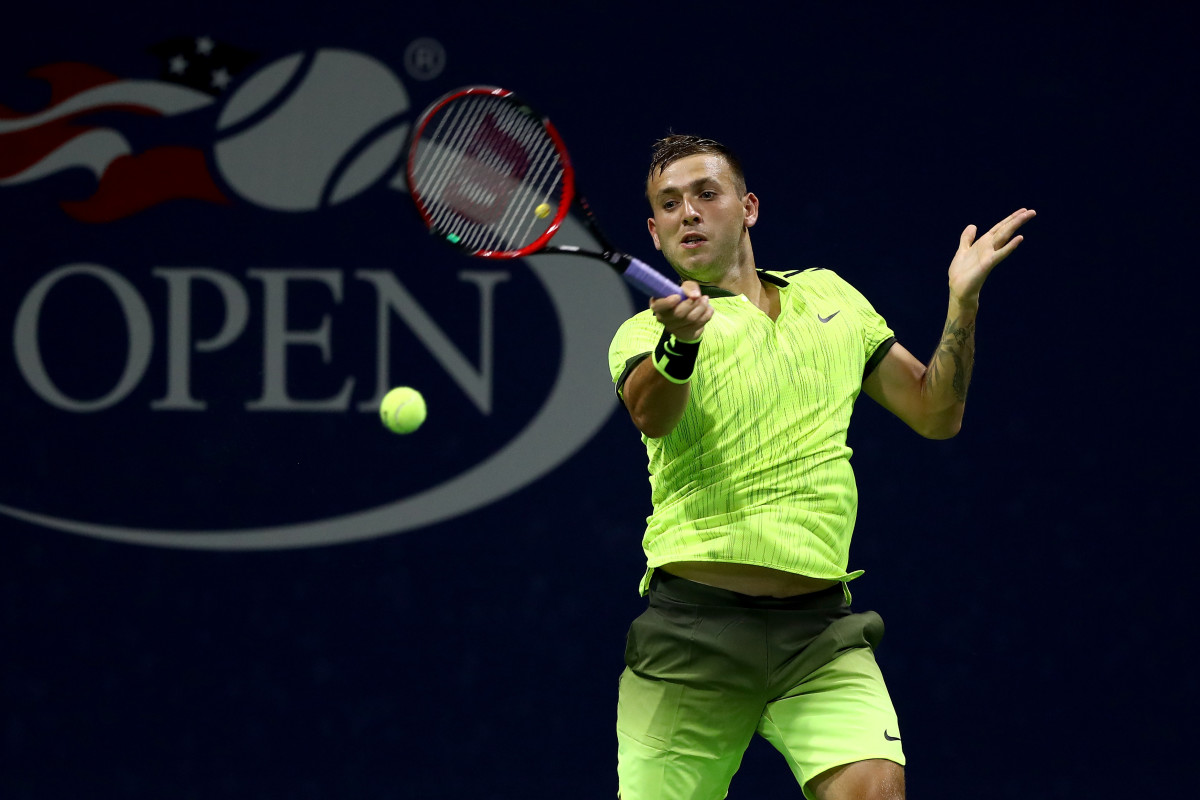
Alexander Zverev
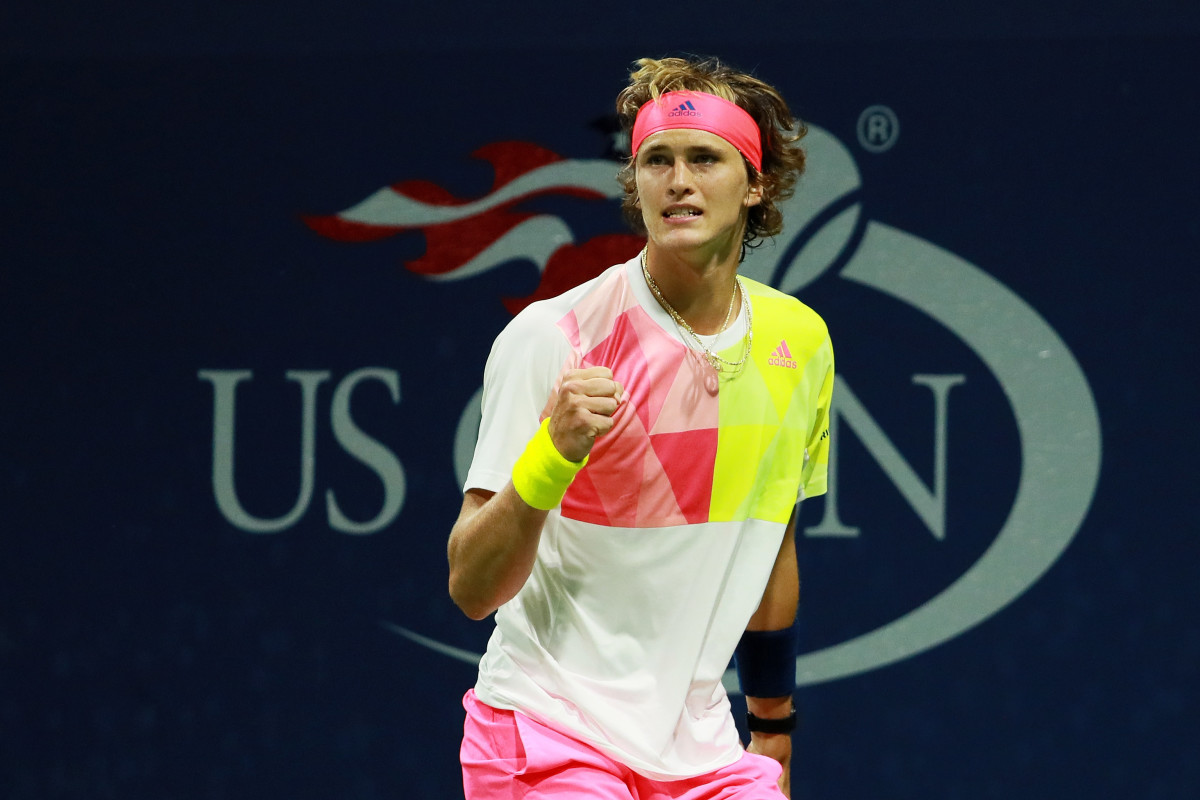
Stan Wawrinka
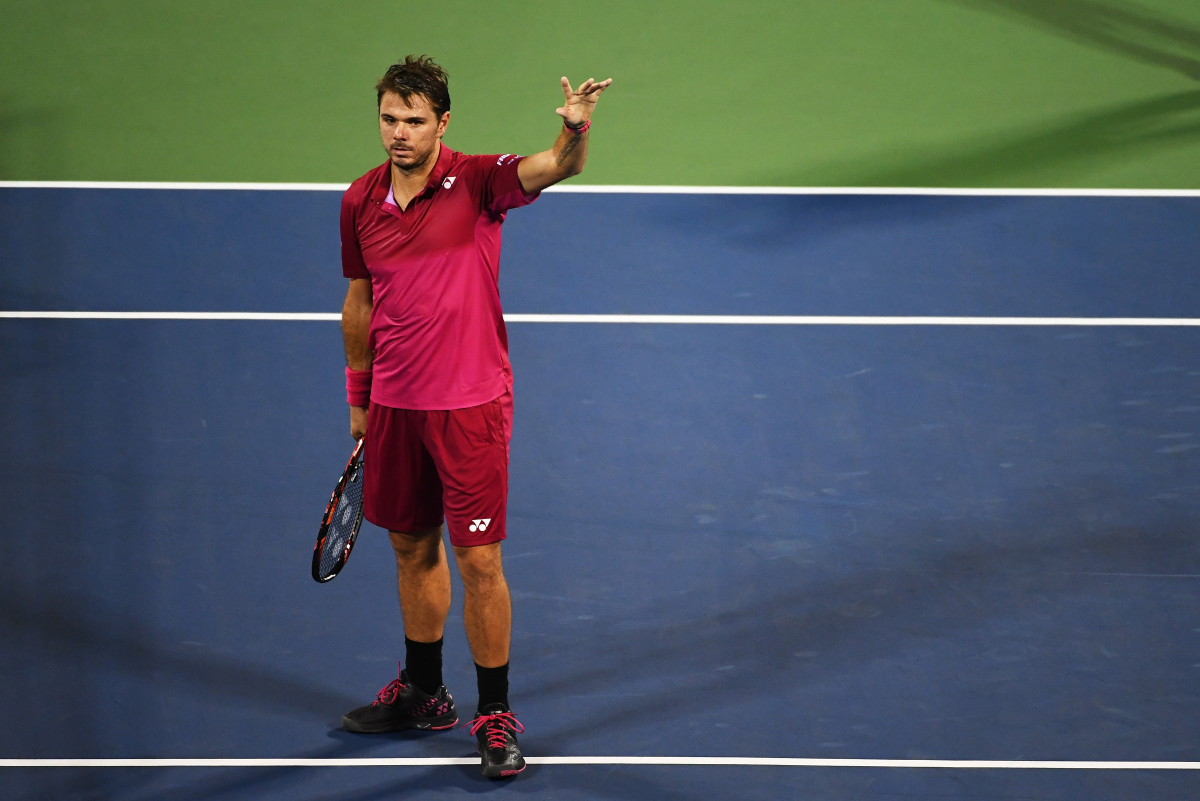
Ivo Karlovic
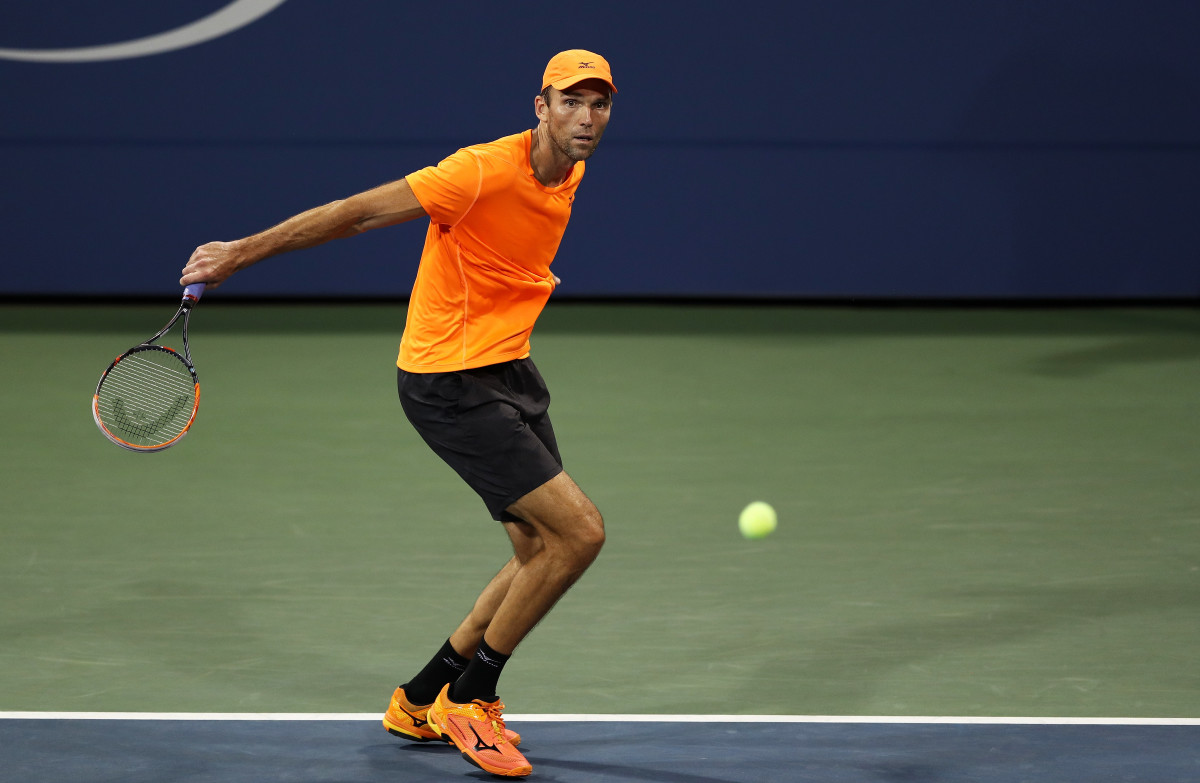
Grigor Dimitrov
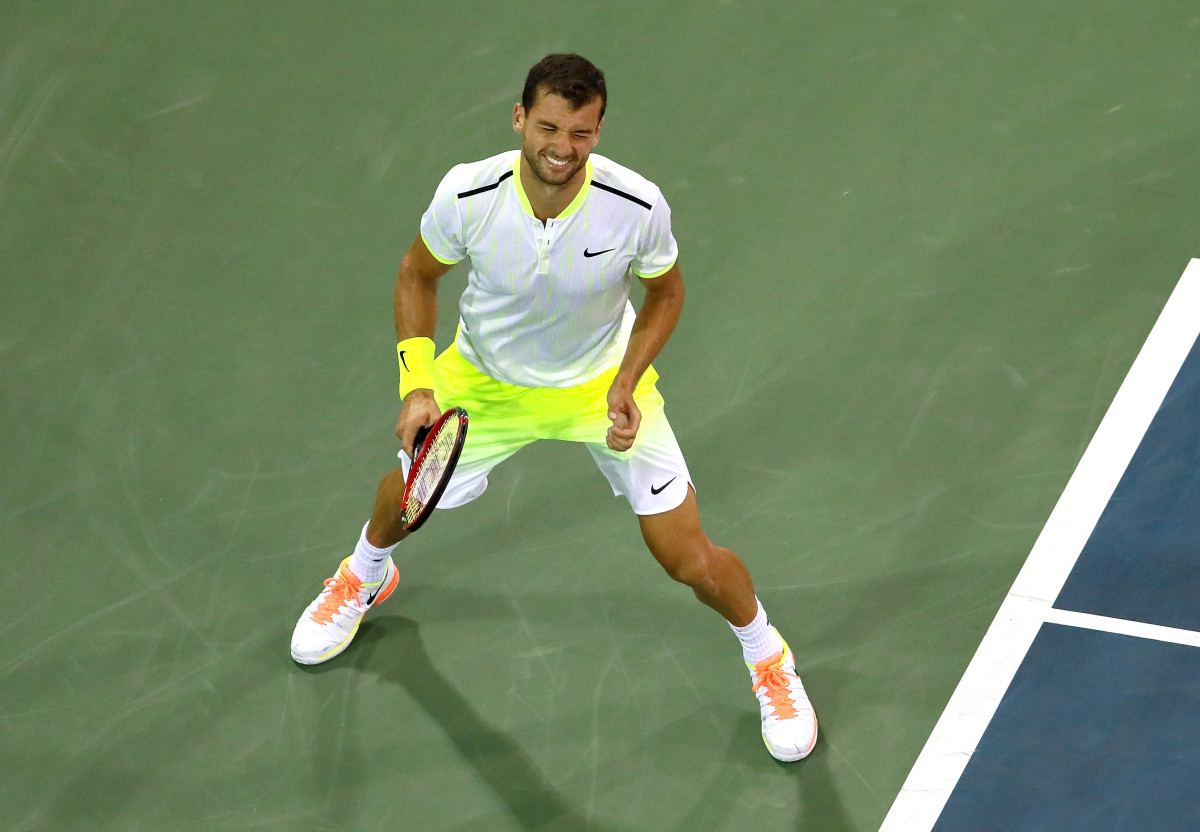
Donald Young
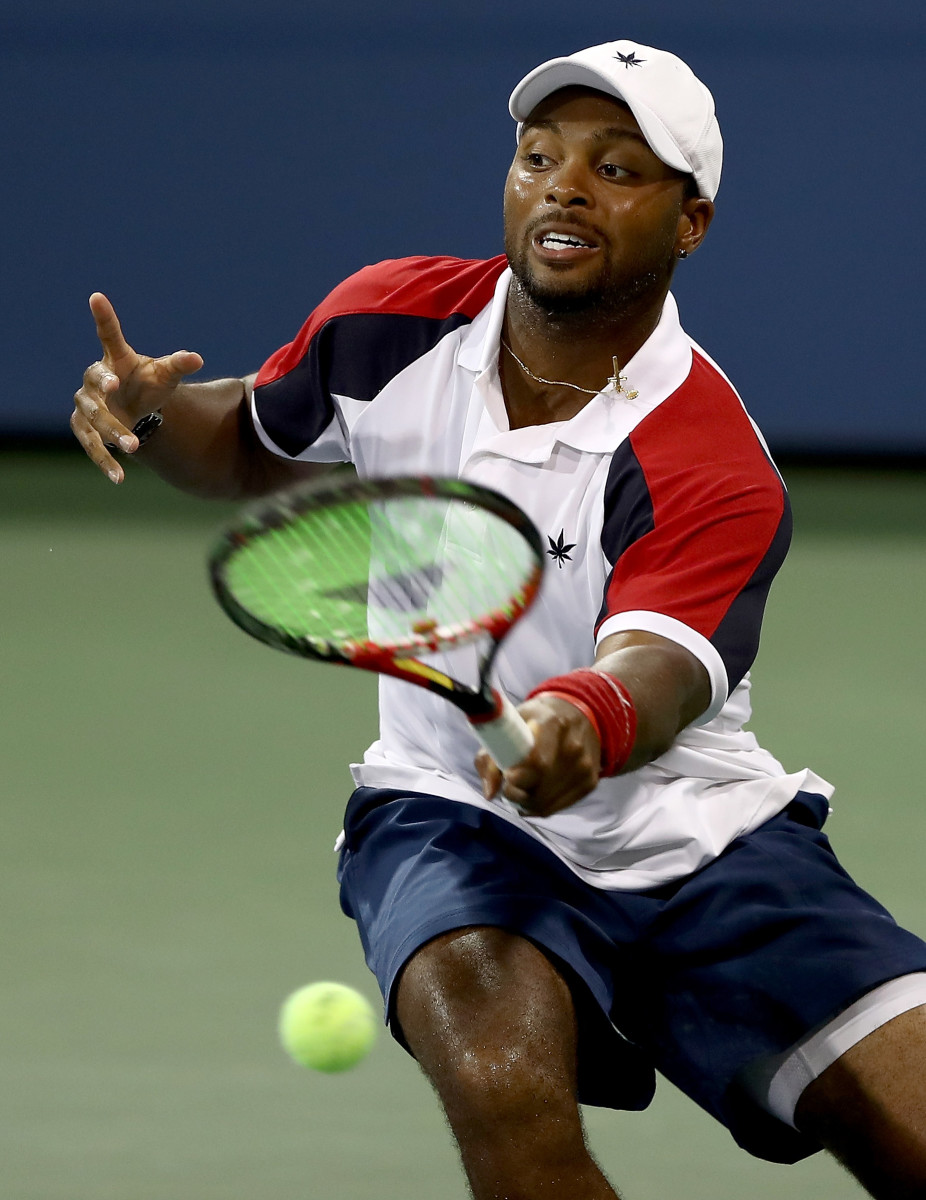
Serena Williams
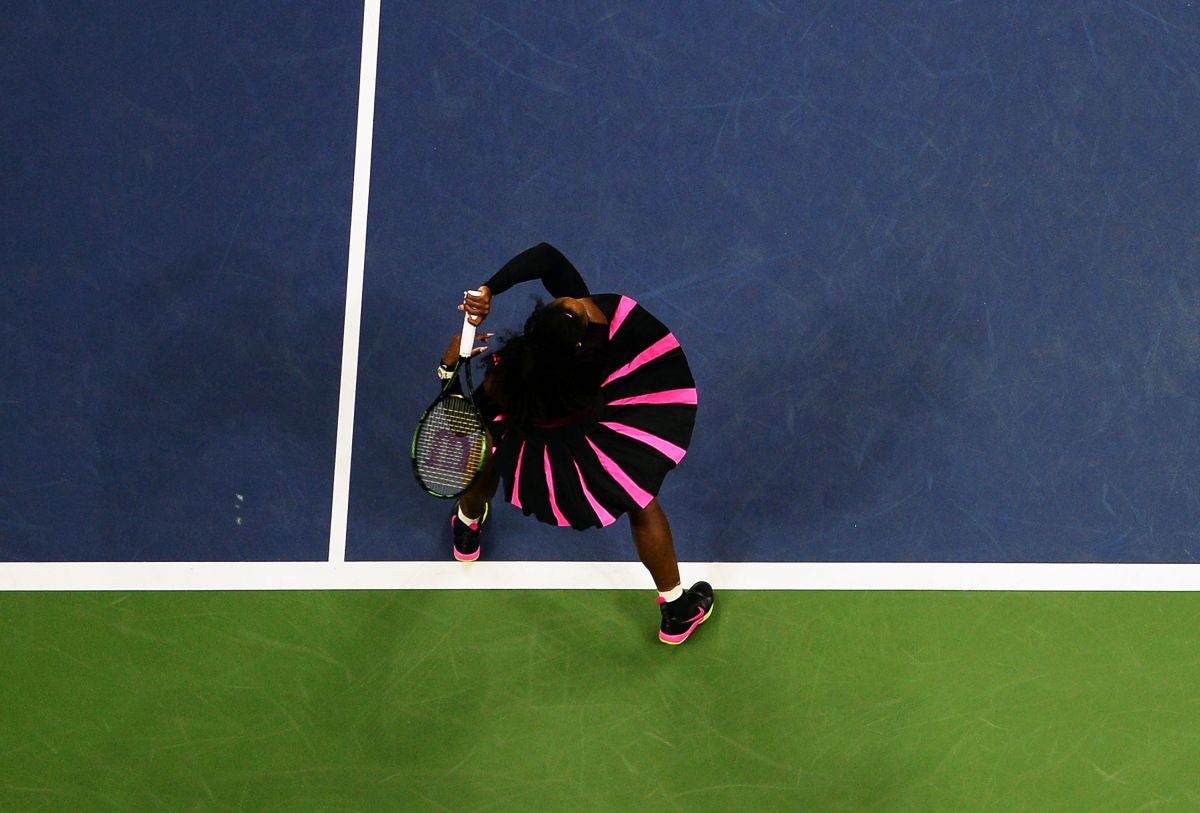
Caroline Wozniacki
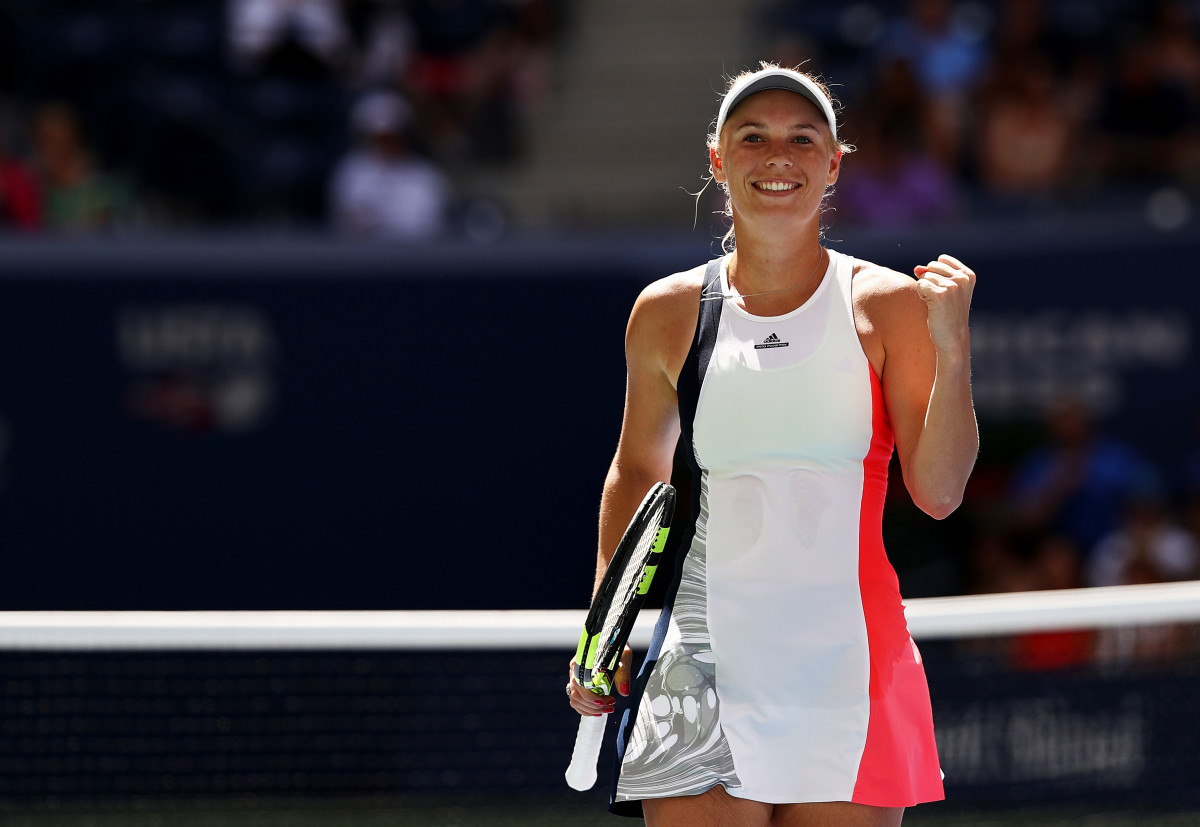
Anastasija Sevastova
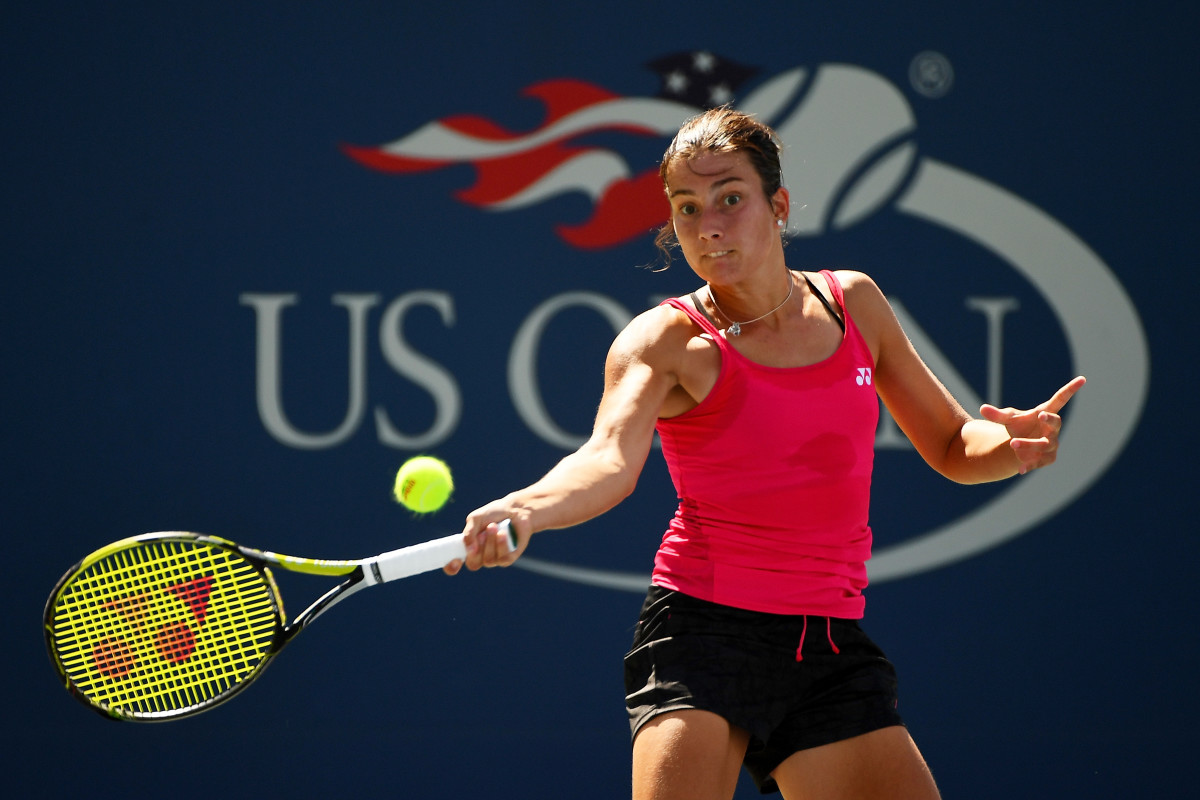
Kateryna Bondarenko
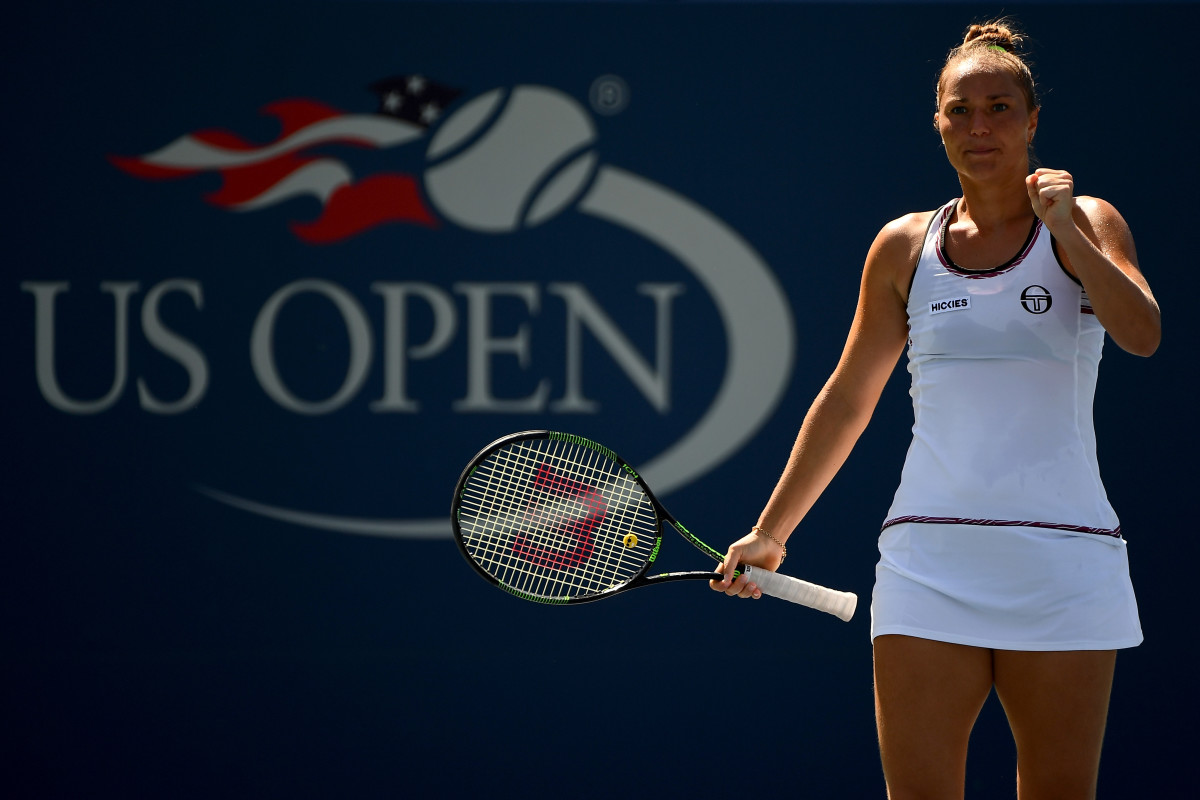
Jo-Wilfried Tsonga
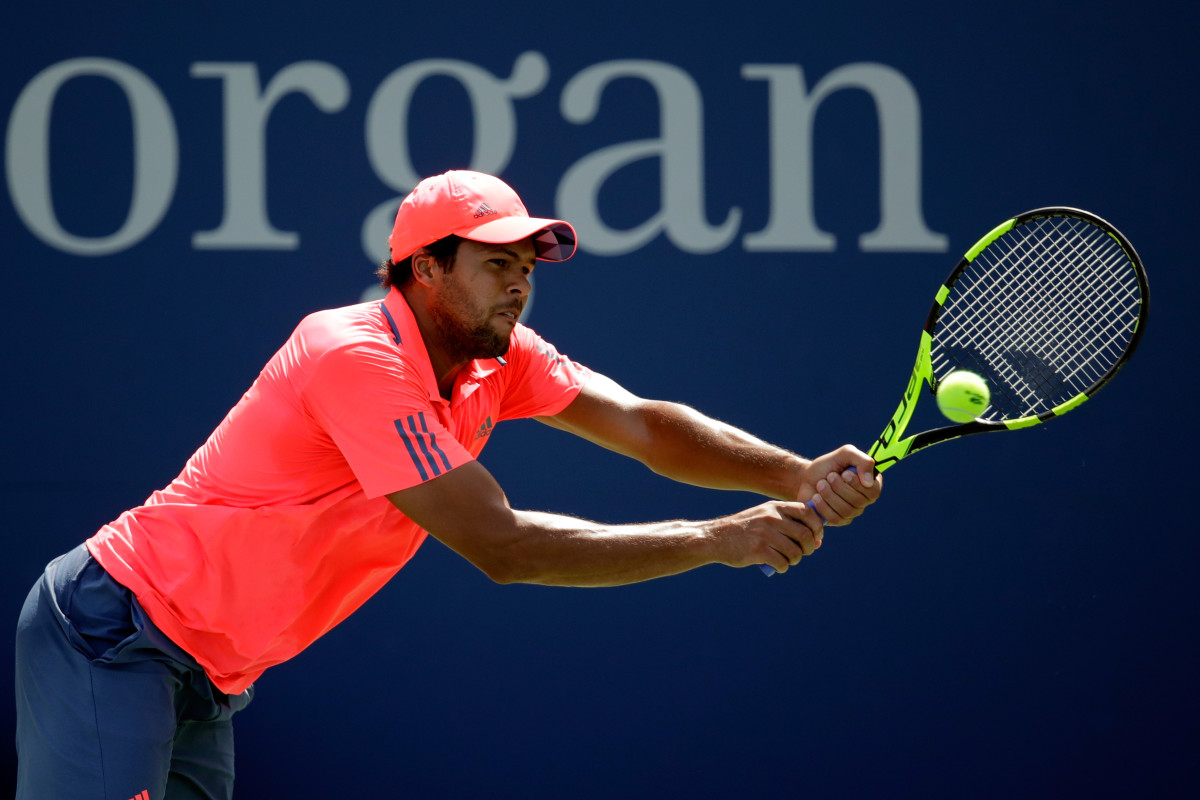
John Isner
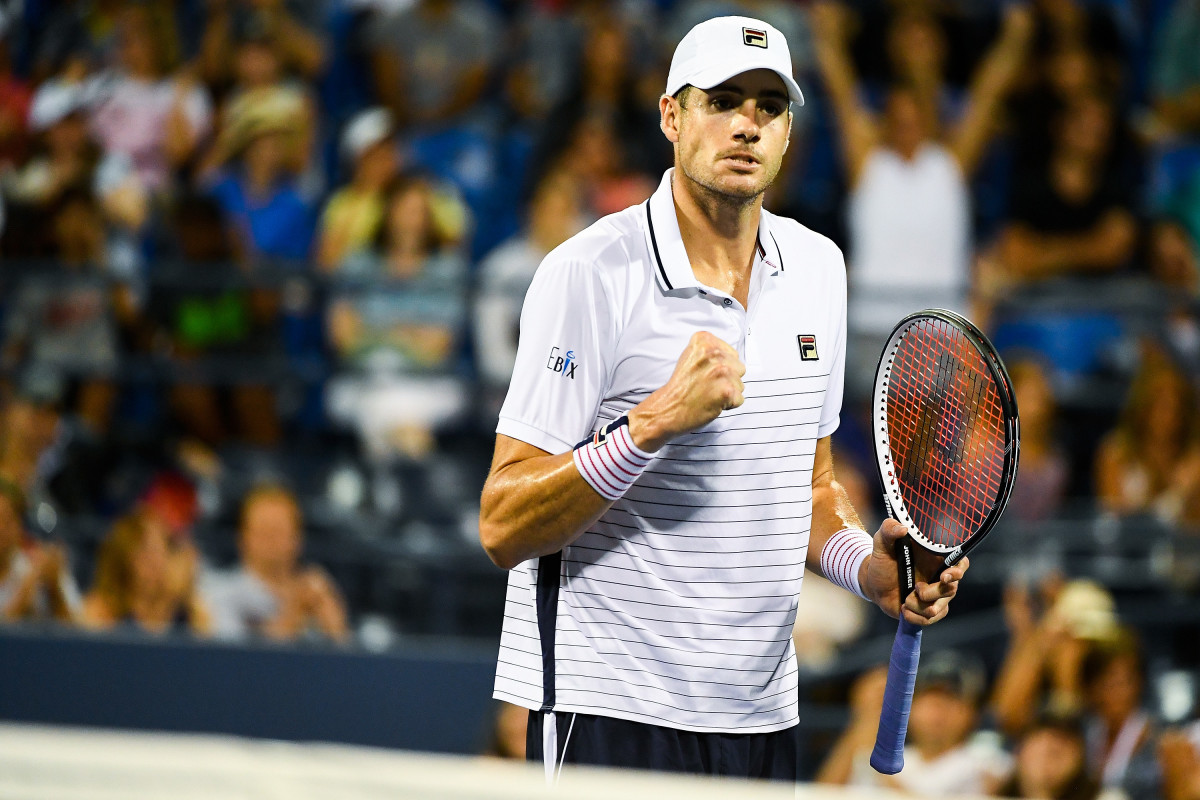
Rafael Nadal
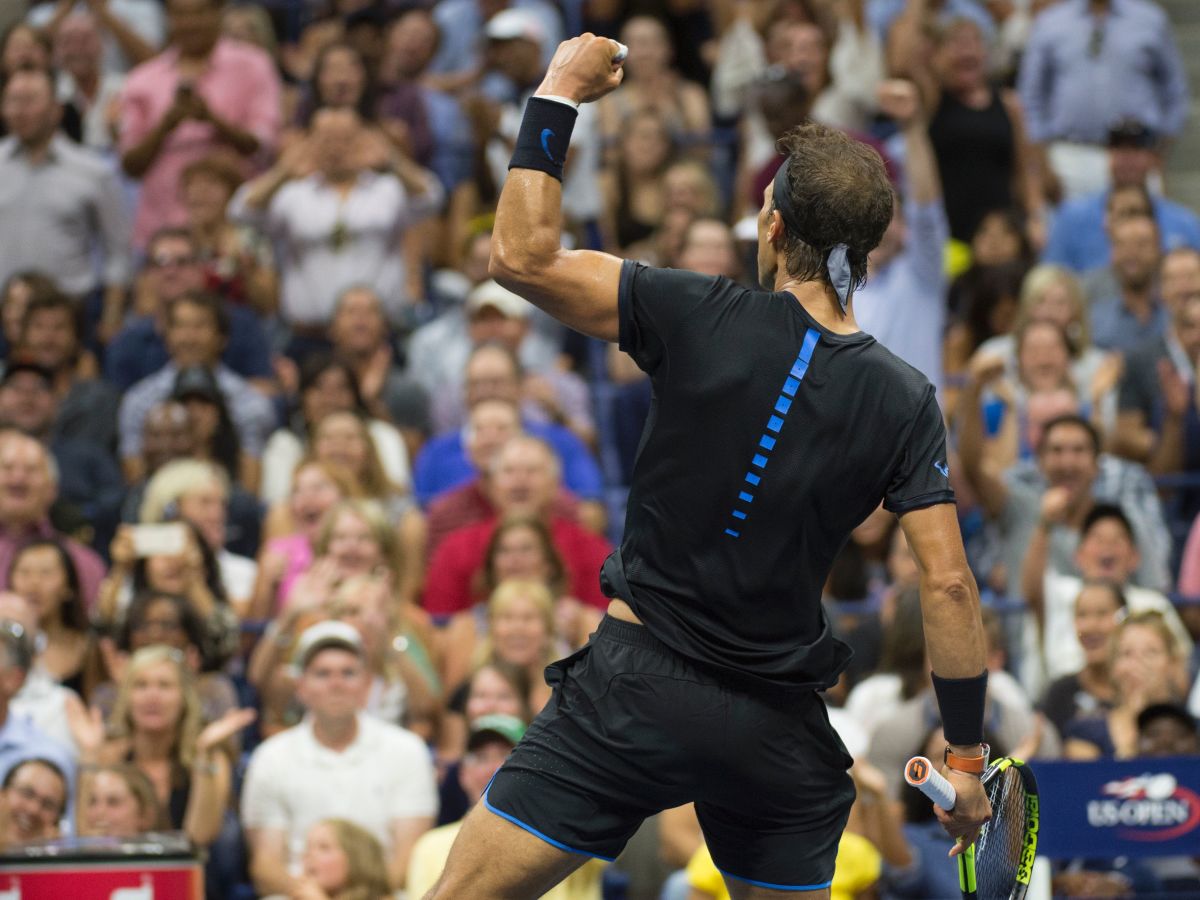
Rafael Nadal
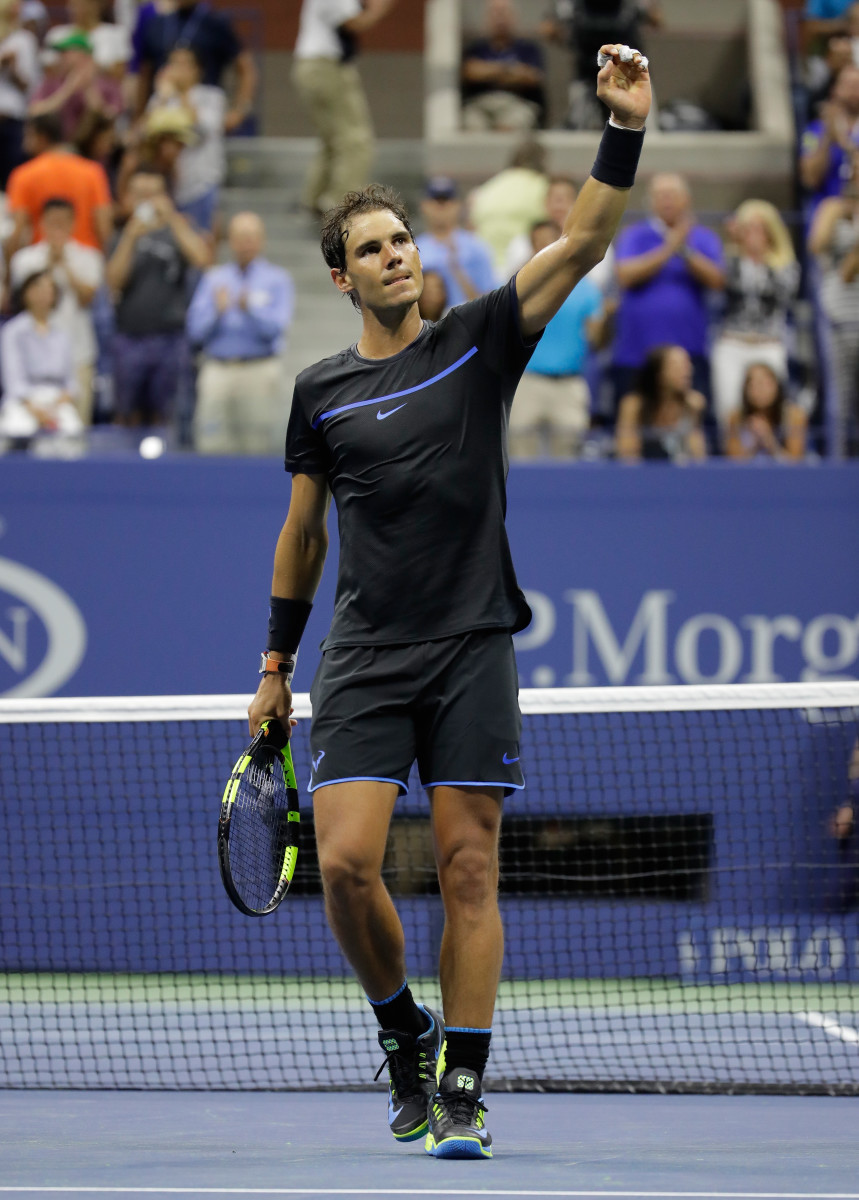
Angelique Kerber
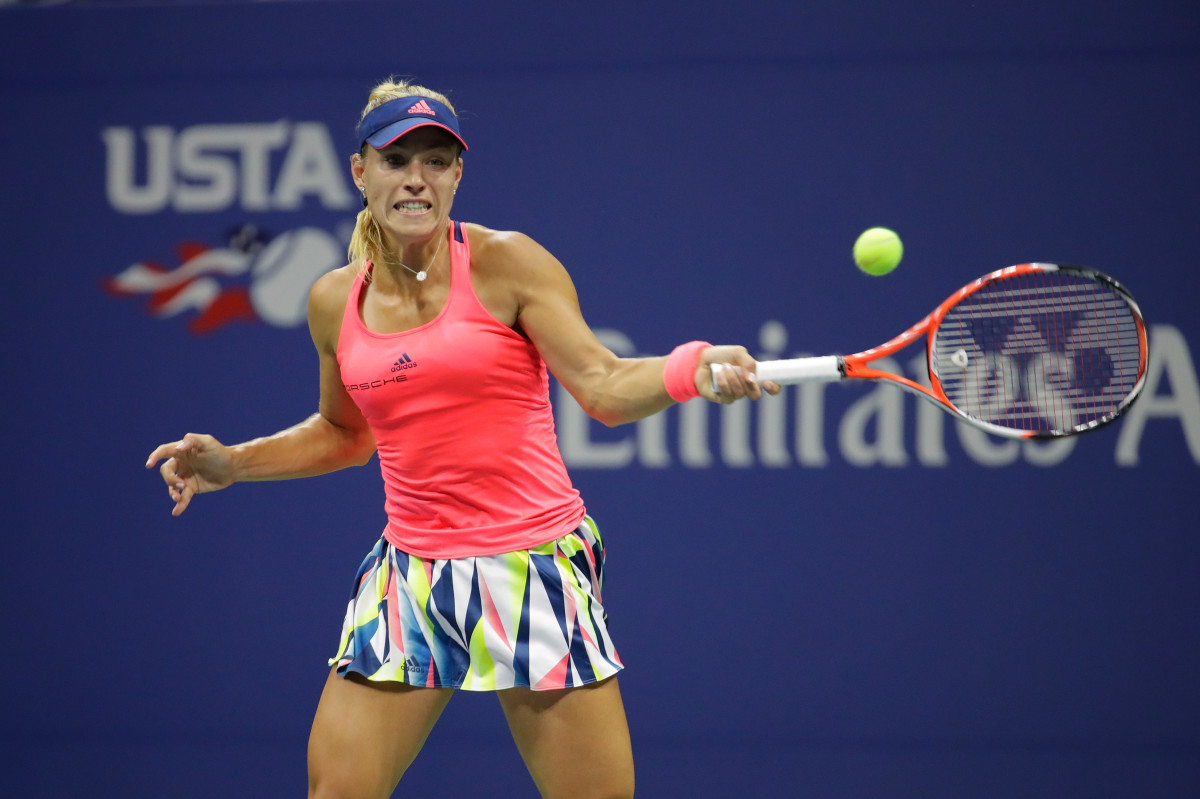
Angelique Kerber
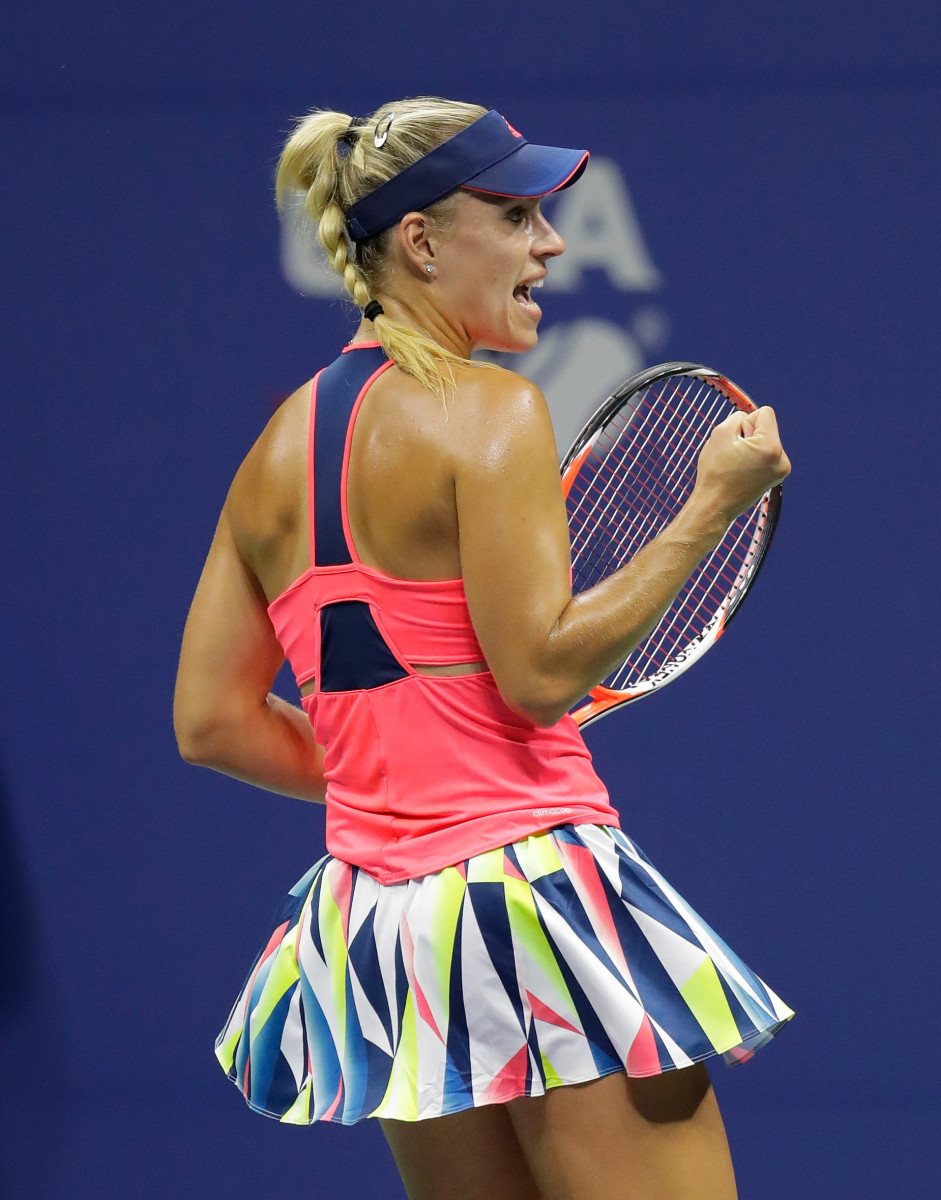
Carla Suarez Navarro
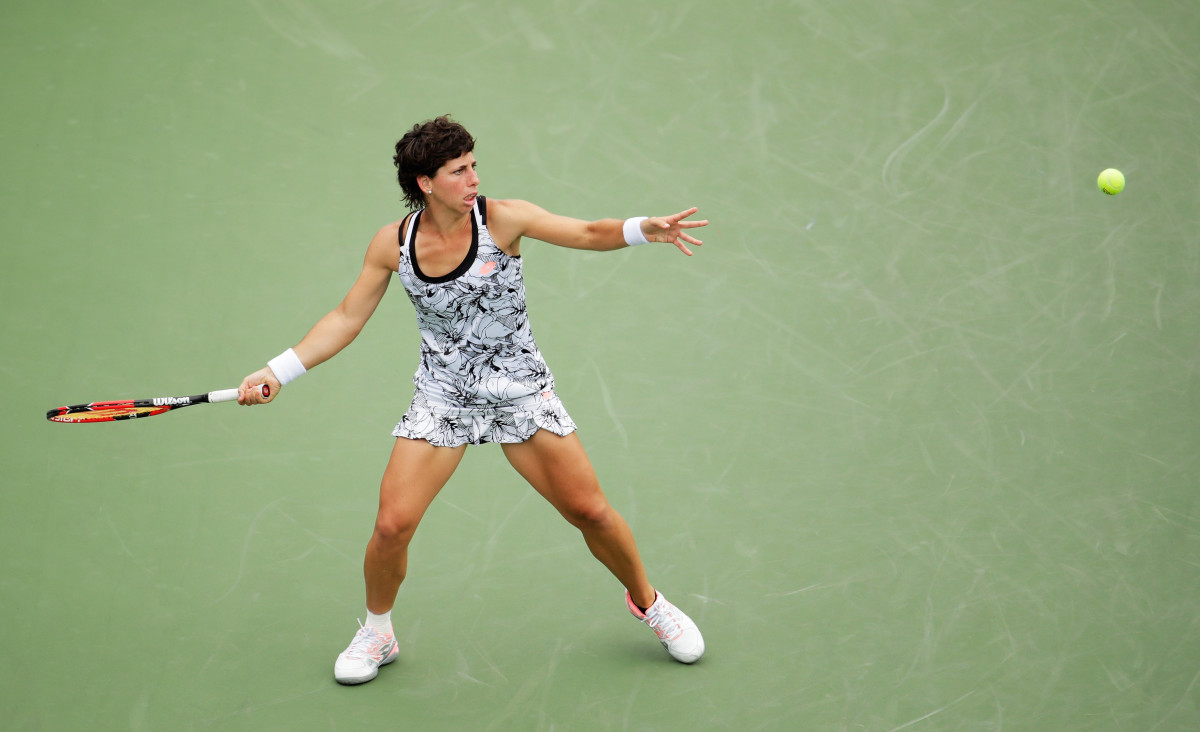
Caroline Garcia
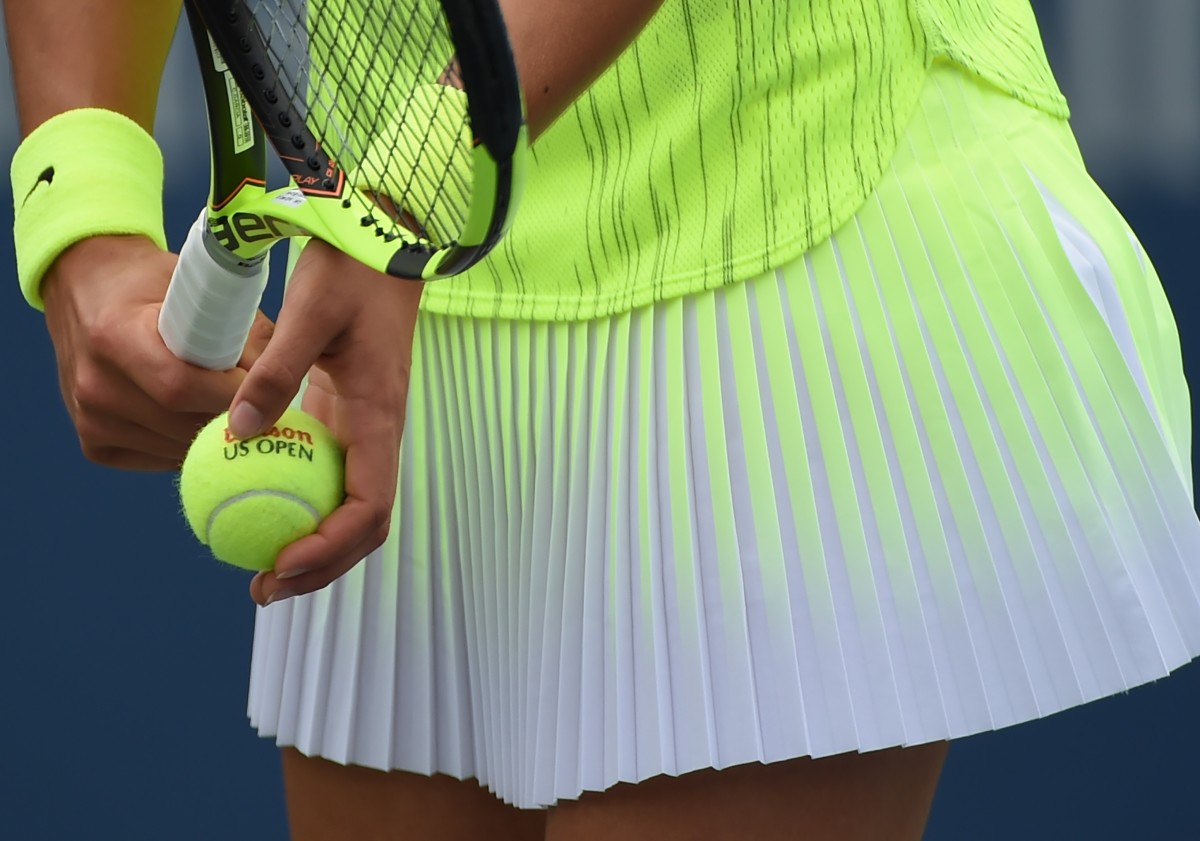
Pablo Carreno Busta
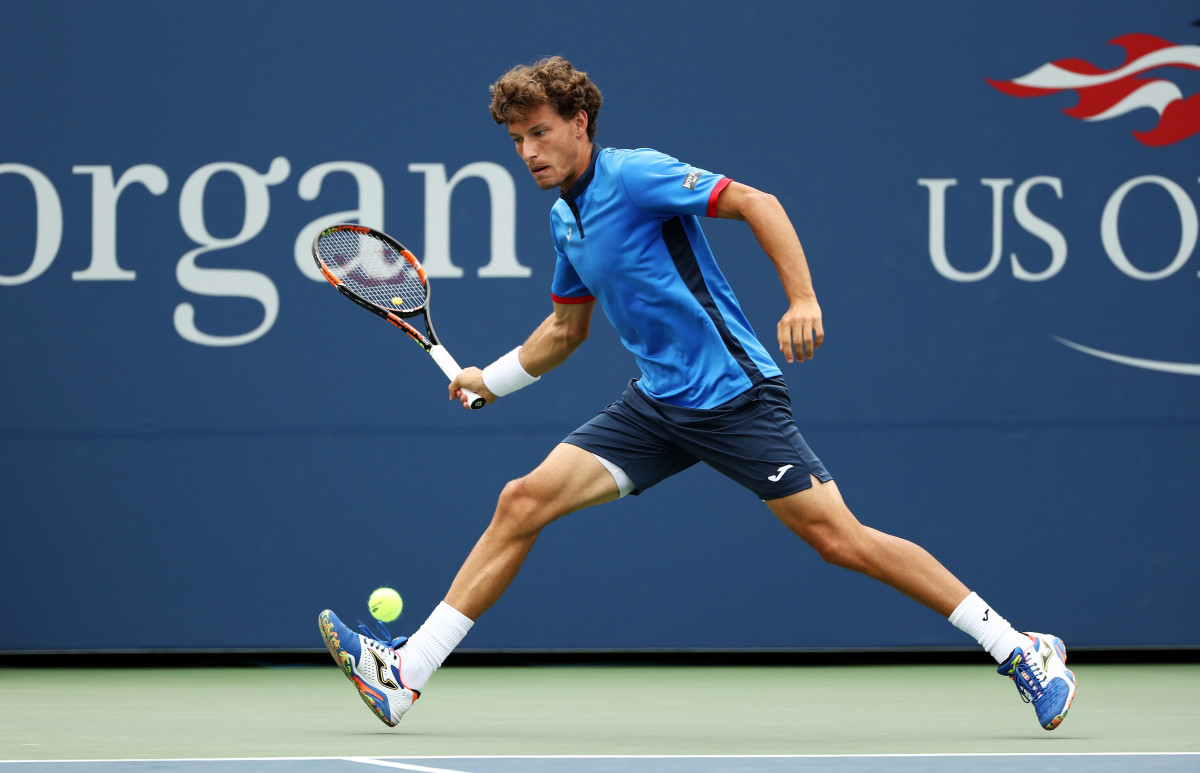
Agnieszka Radwanska
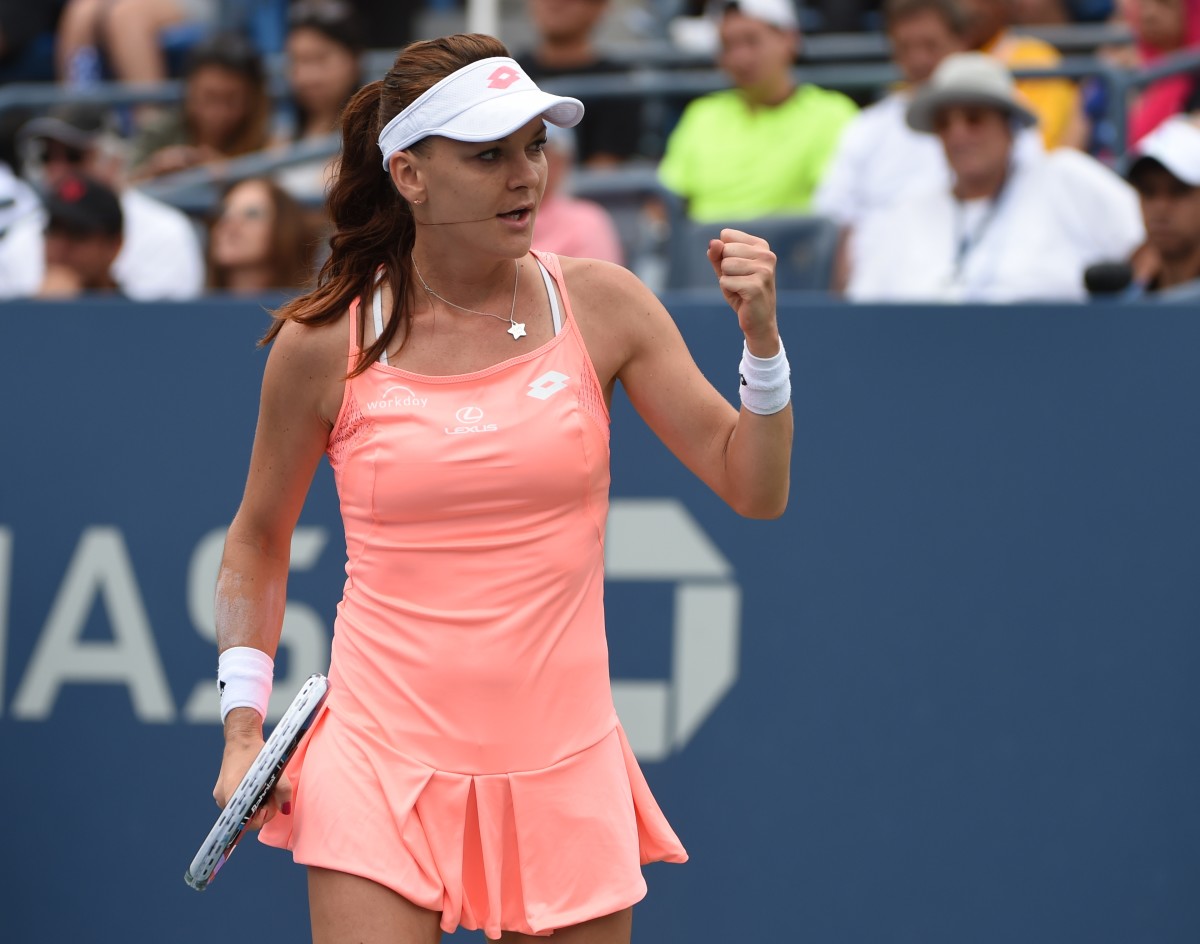
Yaroslava Shvedova
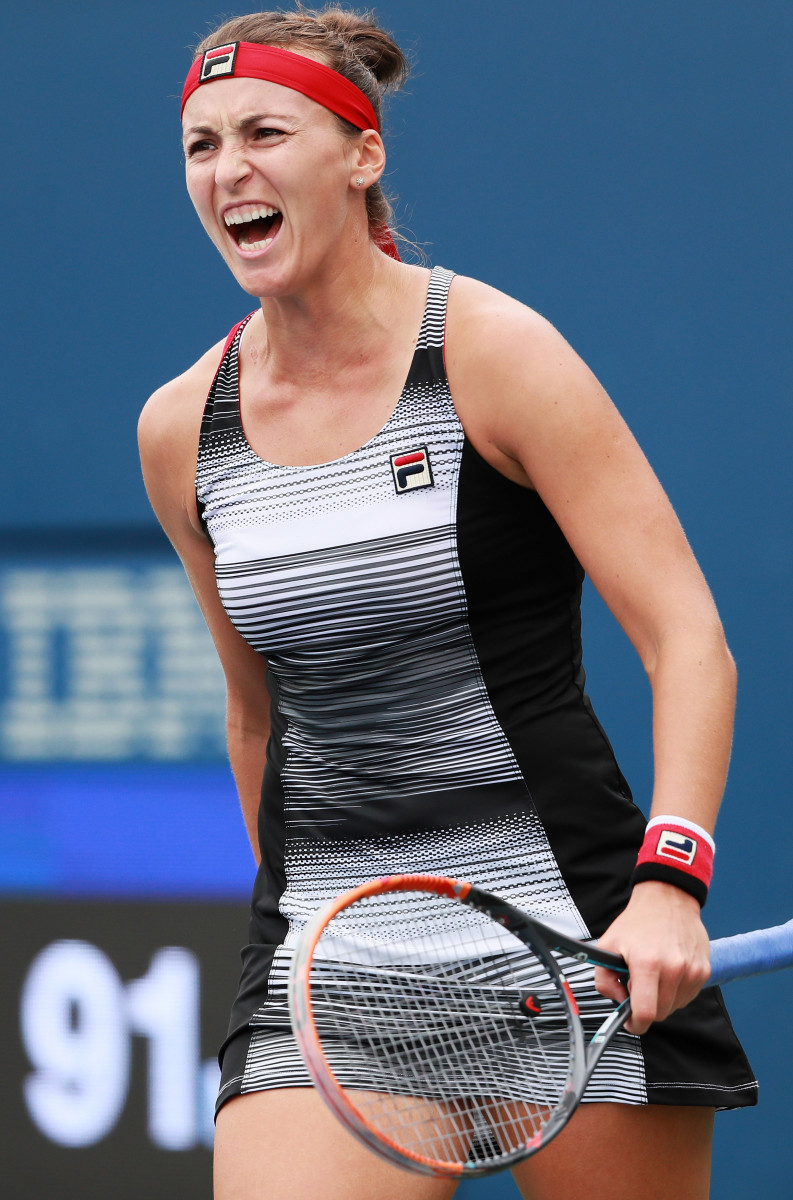
Serena Williams
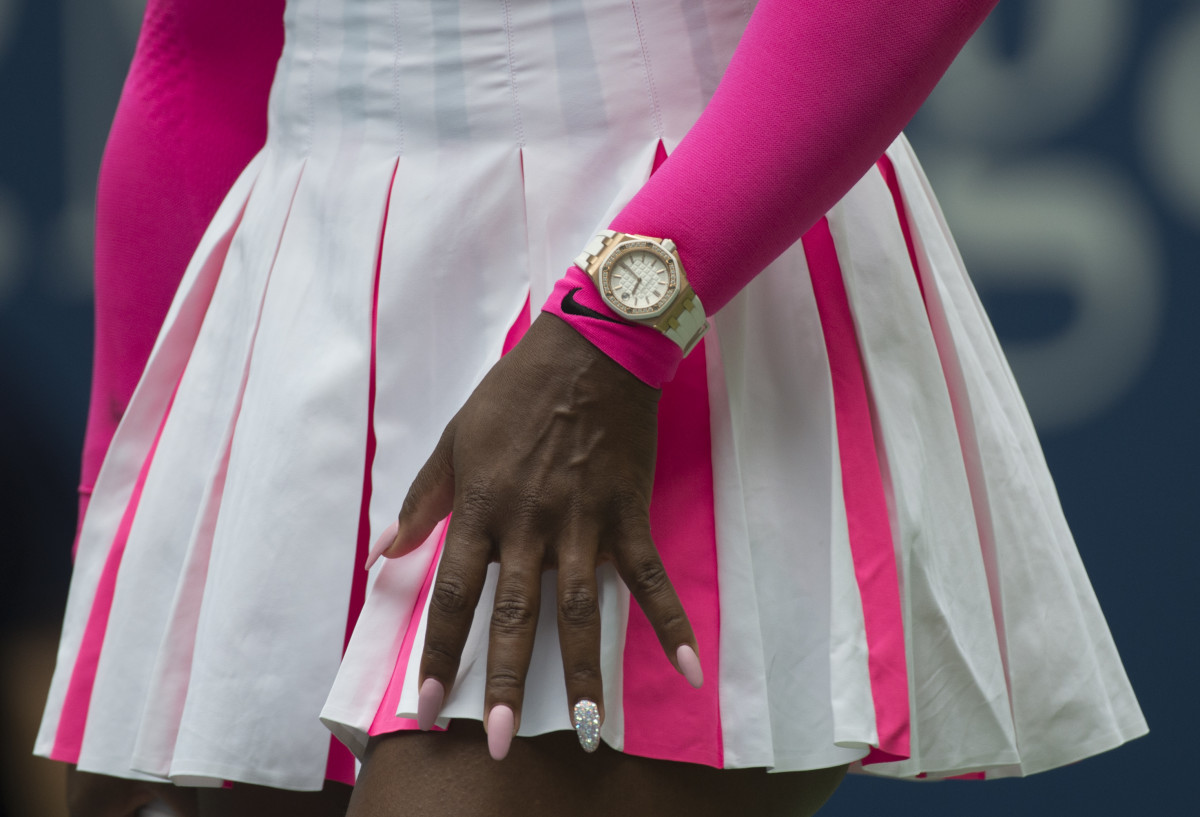
Serena Williams
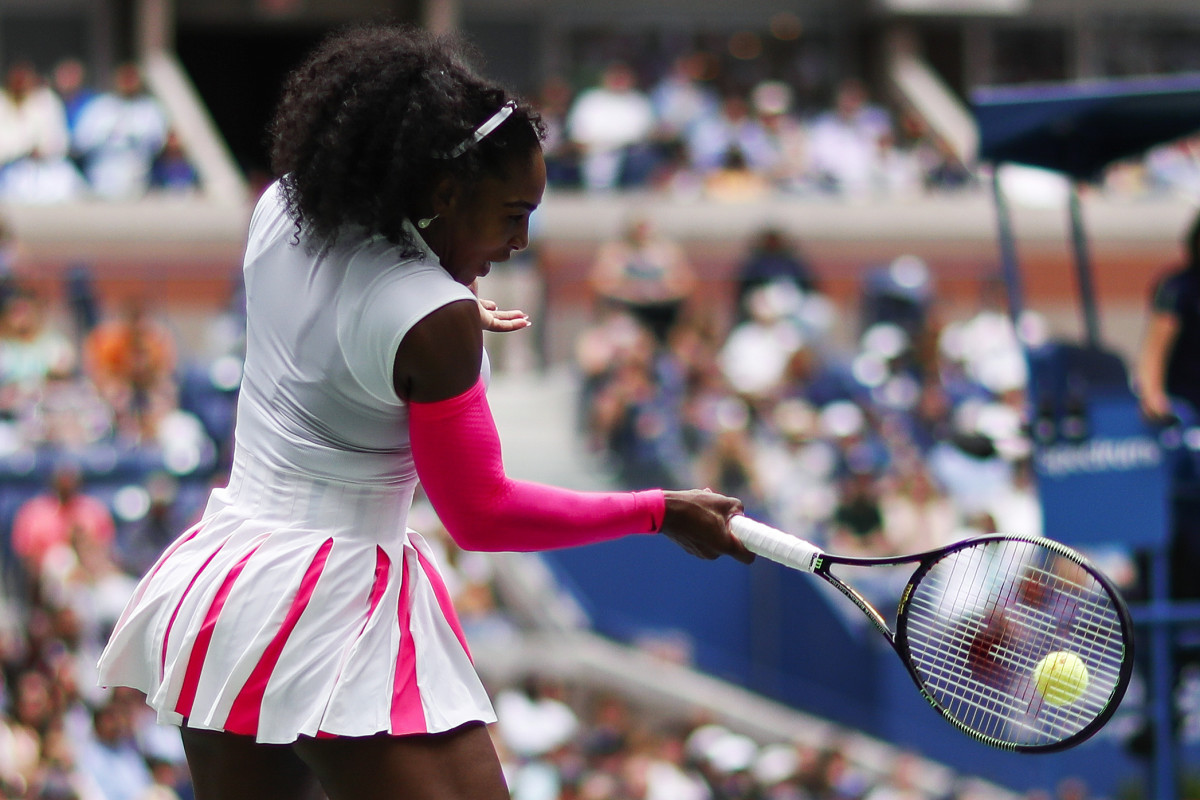
Serena Williams
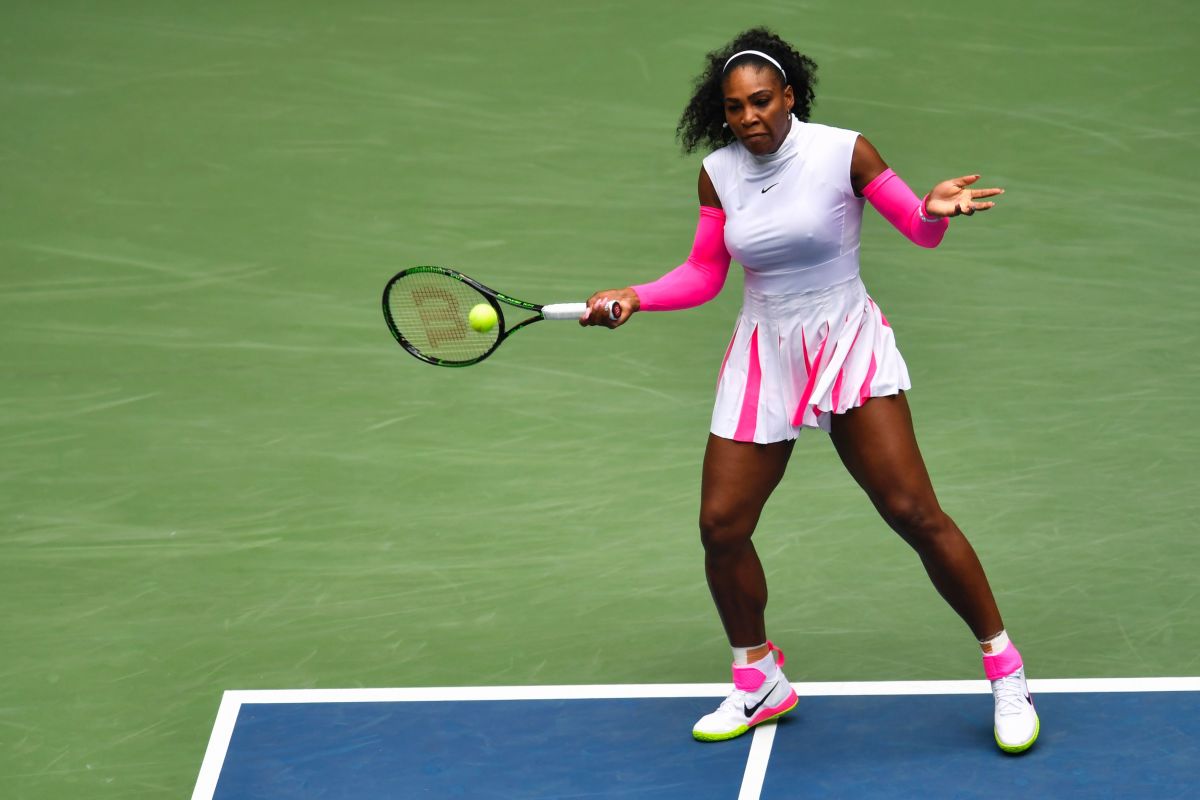
Ana Konjuh
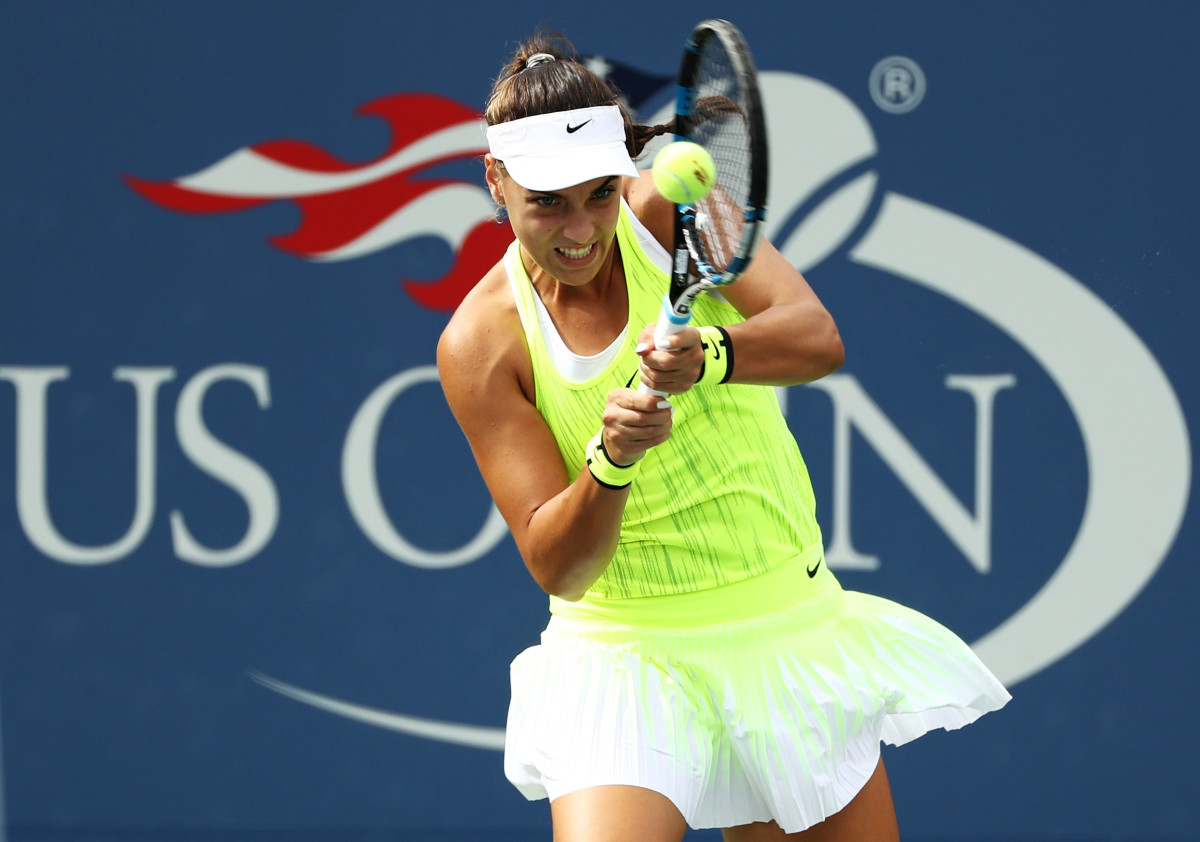
Serena Williams
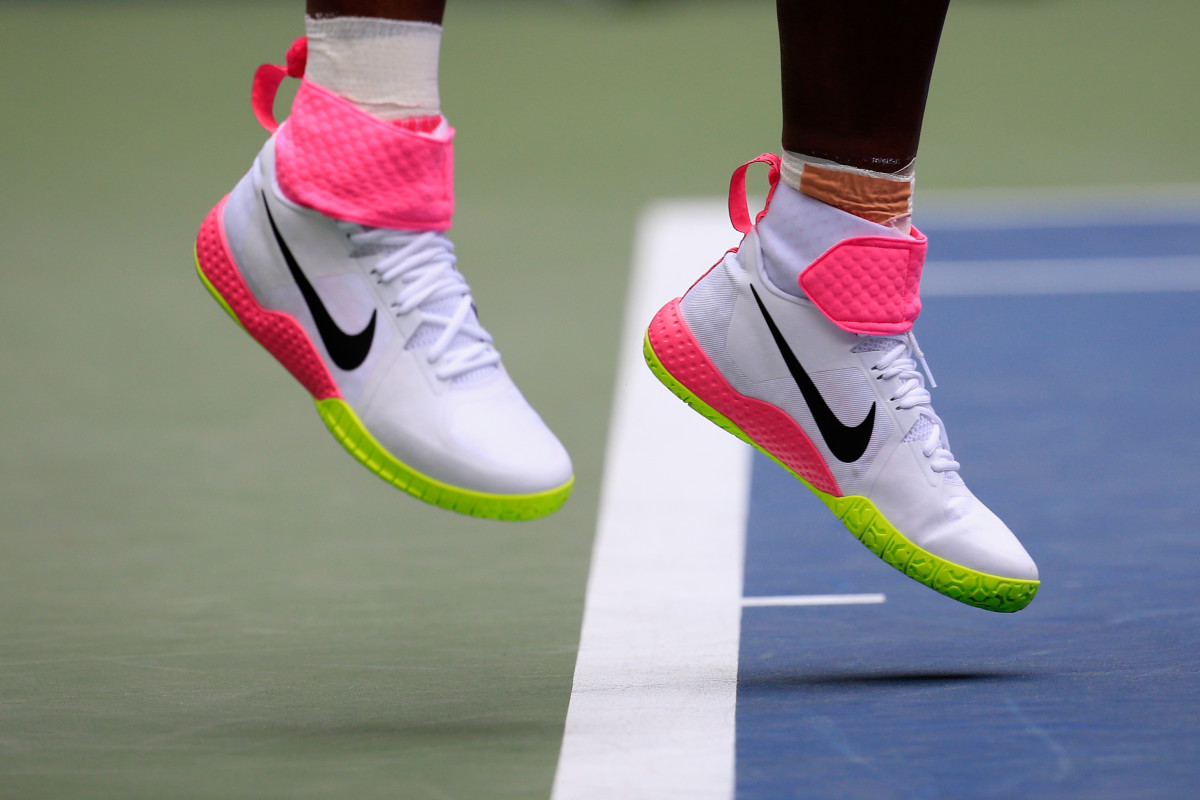
Joao Sousa
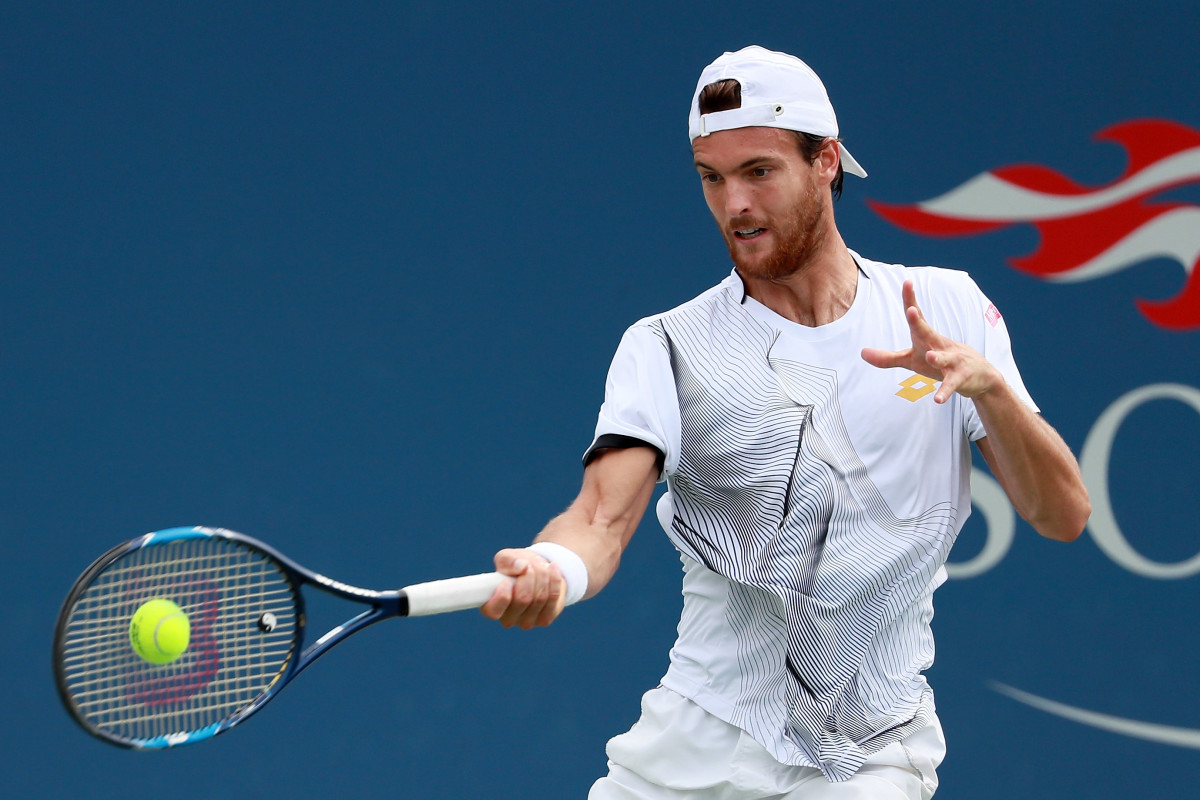
David Ferrer
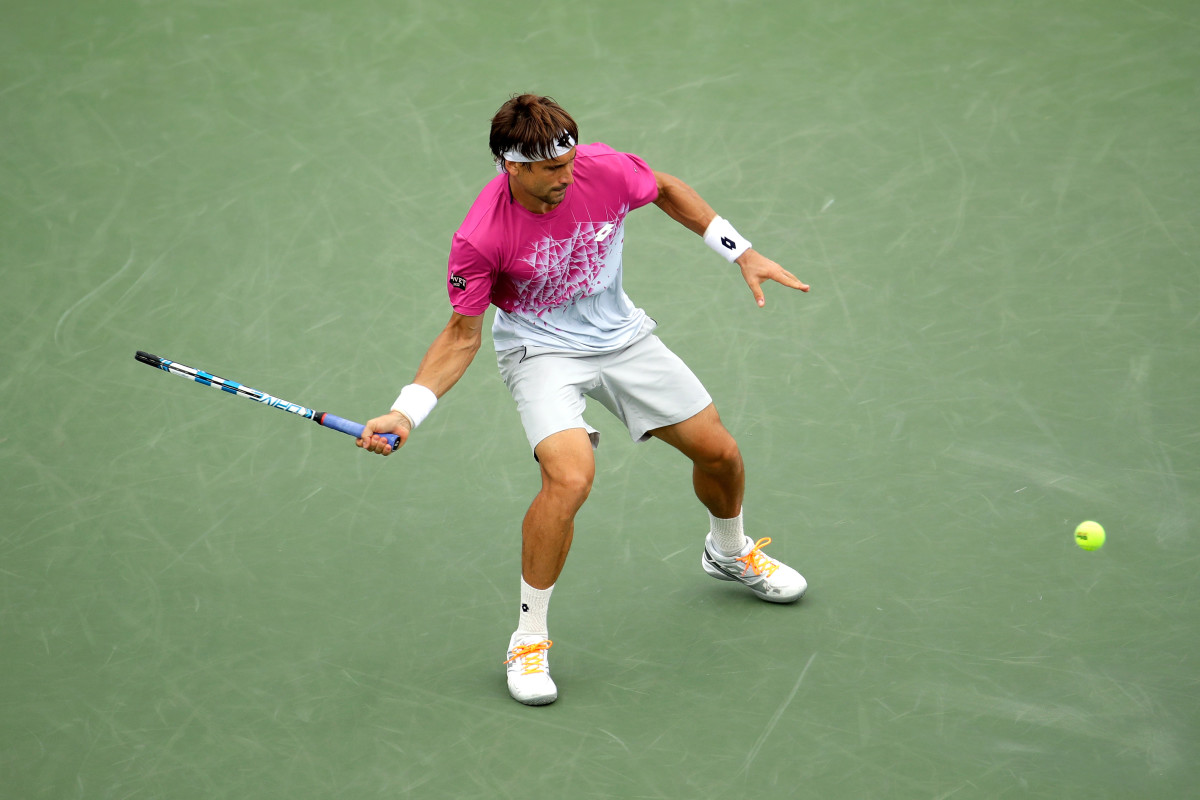
Juan Martin del Potro
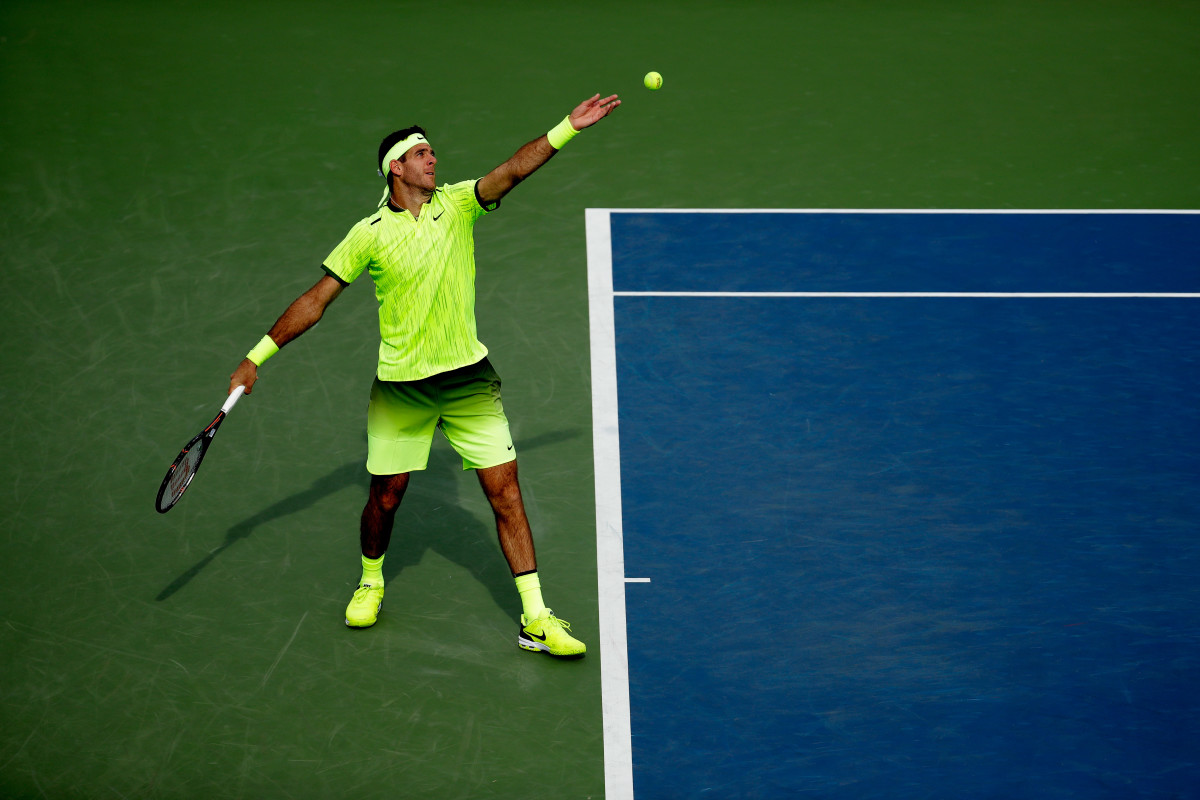
Paolo Lorenzi
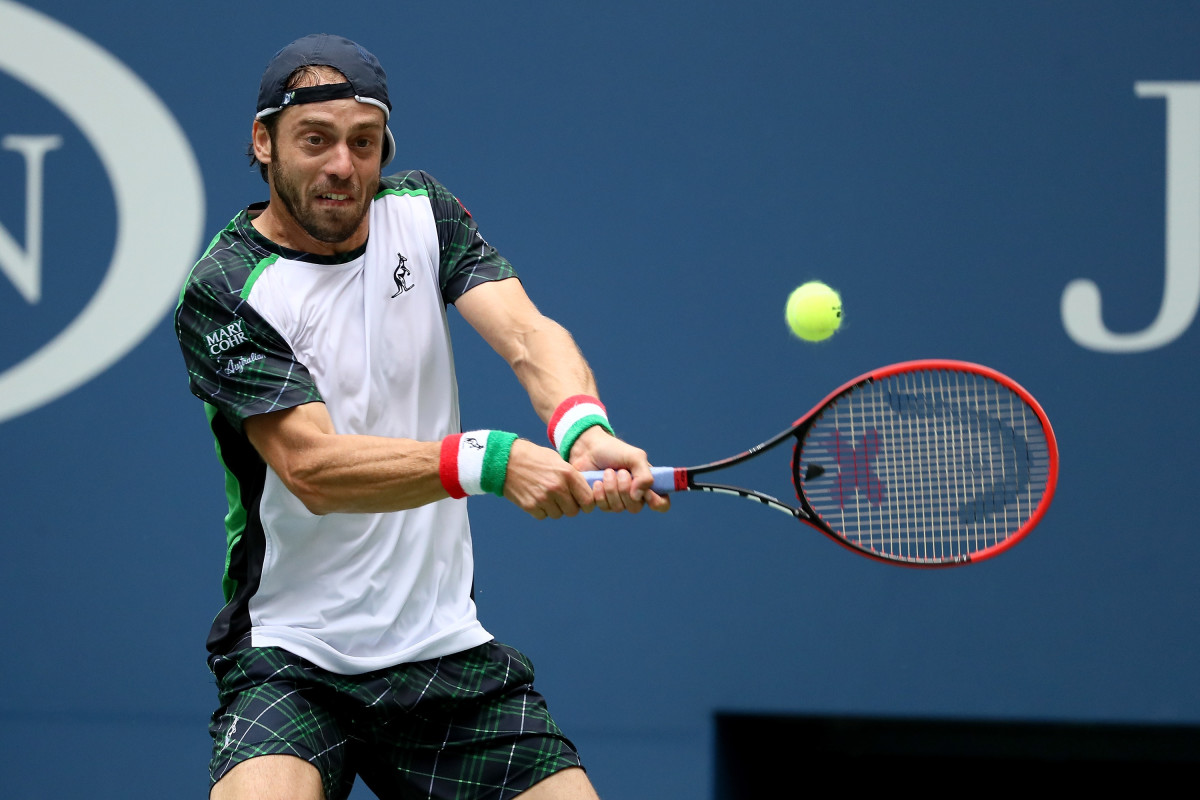
Anastasia Pavlyuchenkova
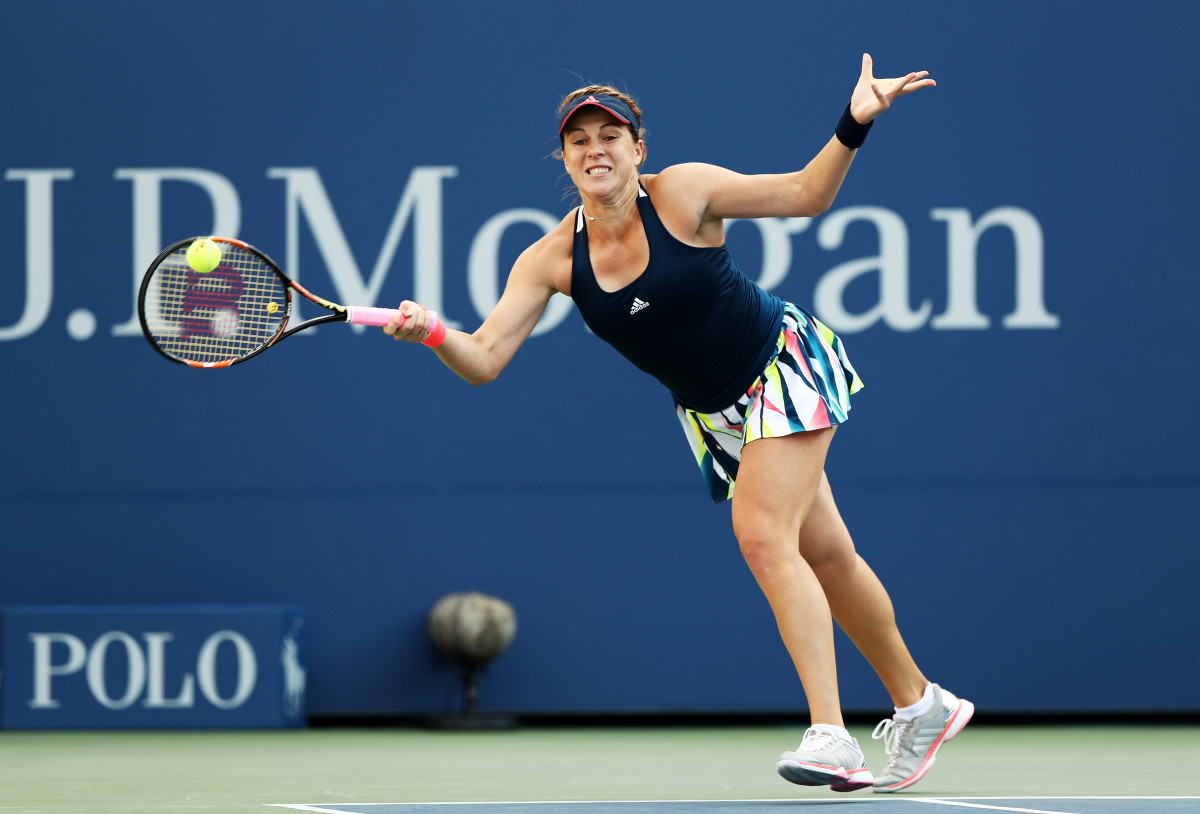
• With two of the culprits out of the sport this fall, maybe it’s time to revisit meaningful legislation on grunting, which was, mercifully, not much of an issue at this event. (My stance: it doesn’t bother me much, but I recognize how many fans it alienates.)
• On the heels of a Wimbledon quarterfinal run, Lucas Pouille beat Rafael Nadal in perhaps the match of the tournament. We can save a longer summation of Nadal for another time. (Concerns: his serve, another early Slam loss, the fact that he won fewer than half the long rallies. The positives: he’s in a much better spot than he was 45 days ago, he won his first three matches in straight sets, he’s still Rafael Nadal.) But how about Pouille, attacking net 60+ times, caning the ball off both sides, and recovering from a break down in the fifth set to beat the Mighty Rafa. That was a titanic effort that signals lots more success.
• Assorted other players who impressed: Pablo Carreno Busta, Daniel Evans (who had match point against Stan Wawrinka) and 18-year-old Ana Konjuh. And here’s a shoutout to Roberta Vinci, who was defending a boatload of points from her 2015 Serena takedown, and made the round of eight.
For second straight year, Serena falters in U.S. Open semifinals, this time to Pliskova
• Back to Nadal for a second….we talk about the social and moral authority of the Big Four and their impact on the larger tennis culture, and here’s an example. Nadal loses, devastatingly, in the fourth round, capping a year of disappointing Slams. He falls 7-6 in the fifth to a 22-year-old, missing a gimme forehand that would have given him match point. And on his way off the court, he waves to the crowd and then stops to sign autographs. Are you kidding? If you’re a fledgling pro and you see a 14-Slam titan behaving this way, you are internalizing the message. I can be great and still give of myself, even under the most difficult circumstances.
• Nice to see Grigor Dimitrov string together a strong week of tennis as he attempts to re-enter the top 10 after a dispiriting fall. The hype machine has pivoted to Kyrgios and Zverev and the young Americans. At age 25, Dimitrov isn’t over the meridian of his prime. But neither is he still a prospect. All the progress came to an abrupt and ugly halt against Murray—the player he beat at Wimbledon two years ago—when he offered scant resistance and lost 6-1, 6-2, 6-2.
• After broaching the taboo topic of female players and monthly cycles last week, we heard from a few of you including former WTA champions with stories and confirmations. Full candor: I’m thoroughly, fiercely uncomfortable discussing this. And the same time, it seems silly and disingenuous and even dishonest to ignore a natural event that has very clearly determined the outcome of important matches and impacted countless others. (Including, allegedly, at least two second-week matches at the U.S. Open. In one case, we heard that a player allegedly asked her opponent if she could leave the court to tend to matters. The opponent, grasping the situation, graciously consented but the chair umpire declined the request.) Not sure where this leaves us, but maybe just something to consider….
Mattek-Sands, Safarova win U.S. Open; third major doubles title
• Nick Kyrgios, may have graced the cover of the pre-tournament New York Times magazine, but I’m not sure how much we learned about him this event. Or this year, for that matter. Until the delta between the talent and the conviction/commitment narrows, it will be hard for him to be a top 10 player, much less win majors. If not, in an Anna Kournikova kind of way, he can still be a star, a credible player whose image and popularity outstrips his achievements. And that’s fine. Kournikova wasn’t fraudulent; she was a player in that 11-20 range—the same terrain which Kyrgios currently occupies.
Perhaps Kyrgios invites a think piece on culture, ethnicity, generational confrontation, challenging an establishment. But is it more complicated than this: he is a kid—his arrested development was laid bare in the first paragraph of that Times article—still deciding whether he wants to dedicate himself fully to a pursuit.
• Know this: Kygrios may be shrouded in question marks—which could be painful given those corners and arcs and angles—but agents like his upside. He and his family took multiple pitch meetings—including one by a former player—with mid seven-figure guarantees in the offing.
Petra Kvitova fires coach Frantisek Cermak
• I am getting this second-hand, as the primary source had left town. But I’m told Gilles Simon—who only weighs 152 lbs. to begin with!—lost seven pounds in his five-set loss to Paolo Lorenzi.
• Dominic Thiem is a lovely player. That backhand alone could stop traffic and induce whistles at a construction site. He can serve in the high 130s. But the next thumbnail sketch should reveal that “scheduling decisions” may be the shakiest part of his game. When Thiem was victorious in the first round, it marked his 50th win of the year. Which is tremendous. Except that he won his 47th at Wimbledon. Clearly fatigued, he skipped the Olympics but still went just 2-3 in the summer events. Why, then, would he enter the doubles as well as singles in the U.S. Open? He paid for this on—appropriately—Labor Day when his workload caught up to him and he was forced to retire against del Potro.
• Skip this one if you’re—not unreasonably—sick of this quarterly rant. But best-of-five format is today’s equivalent of the leather football helmet or the 50-round bare-knuckled fight. The game is physical to an unprecedented extreme. Injuries are a constant blight. Unchecked string technology begs for over-hitting. Attention spans are diminishing. Television and media seeks time certainty. Why, oh why, are we making these guys play work for four and five hours? At best it’s nonsensical and tone-deaf; at worst, it’s sadistic.
If you need the heft to distinguish majors from other events—and to reward players who are supremely fit—go best-of-five in week two. Or play best-of-five with no-ad scoring. But for every “epic” there are a dozen slogs that over-sate the tennis fan and lead to injuries. Many of you suggest (quite reasonably) that it’s not best-of-five. It’s strings or non-standard balls or hard courts or an unreasonably long calendar or overtraining. That may be, but shouldn’t we begin trying to address and remediate this problem?
British invasion: Murray, Konta, Edmund and Evans lead charge for U.K. at U.S. Open
• So I was debating the severity of injuries with a skeptical friend who asked, “Where’s the data? Show me the data we can talk.” I would contend that the anecdotes are enough. Is there one storyline in tennis that doesn’t involve injuries? (Literally go down the list: Serena’s shoulder, Djokovic’s wrist, del Potro’s wrist, Murray’s back, Nadal’s wrist…). Djokovic was injured coming in, but he’s the one who didn’t have to complete three of his matches. On Tuesday, Wozniacki won 6-, 6-2 against an injured opponent, while Tsonga couldn’t finish against Djokovic.
But to my friend’s point, where’s the data that tennis is indeed less healthy than it once was? A few of us went down this road in 2014 and found that the data was dirty. “Retirements” is a problematic metric, because injured players often enter a major with no expectations of winning but because today’s first round prize money is irresistible in a way that wasn’t the case a generation ago. “Time missed” is tough because a) careers are longer now and b) medicine has improved. I’m happy to contribute both data and gifts: who can come up with up empirical evidence confirming or refuting that notion that injuries are more common now than X years ago?
• Theory: John Isner is a huge sports fan. Which provides him a pastime and a source of emotional investment and a mood elevator when his teams do well. (After losing in the third round to Kyle Edmund, Isner was asked what he’d do now. His response: “Need to go back to drawing board, watch some football.”) But this also cuts against his ability to delude himself. He knows the rules of engagement and almost views his results the way a sports fan would. The same way he discerns which teams are underachieving or having a hard time closing games or need to improve their defense, he knows the truths about his own game.
First-round U.S. Open match will be investigated for irregular betting
• A few years ago, the IPTL was announced and tennis raised an eyebrow. This was essentially World Team Tennis in Asia with higher purses. (And if the players actually got paid the money they were promised, so much the better.) But the matches were held in December and if players wanted to chase money in the off-season, so be it. The announcement of the Laver Cup is being taken more seriously. Some organizations—starting with Tennis Australia, which has separate side deals with certain players and is handling media rights and publicity—are more receptive than others. During the tournament, the USTA announced its partnership with the Laver Cup, and with it a commitment to hold the second Laver Cup in 2018 in the U.S. at a site to be determined. But the overarching sense is that this concept could really imperil Davis Cup, which, thanks to the intransigence of the ITF, diminishes in prestige with each passing year. The Laver Cup may or may not flourish. But credit Federer and his team with seeing an opportunity and trying to capitalize.
• CiCi Bellis is the latest player to animate the discussion over whether players should go to college or turn pro. To me it’s a no-brainer. With the physicality of the sport, but also with careers expanding into a player’s mid-30s, there’s no rush to start touring as an 18-year-old. And even the most hyped prospects won't make enough in endorsements and marketing guarantees to justify this as a business decision. Go to college (likely a top one) and you can always turn pro midway through and then have the security later. Some schools demand two years of attendance in order for the slot to be guaranteed. Others demand only one. (See: Noah Rubin and Wake Forest.) But, especially these days, what’s the harm of spending nine or 18 months on a campus—playing on the tennis team; it’s not like you’re shelving your rackets—for the security of knowing that if tennis doesn’t work out, you have a place to go? Lord knows the landscape is filled with players who benefitted from college tennis. (Stevie Johnson, John Isner and Nicole Gibbs but also lesser players like John Peers.) Lord knows it’s also filled with players who turned pro, didn’t make it and found themselves in no-mans-land, as it were.
Bellis, by the way, has great potential and credit her for winning three (!) main draw matches before turning 18. But her 6-1, 6-1 loss to Angelique Kerber suggests that there’s work to be done. Again, no knock on a teenager. But why not lock in a Stanford slot, play on the team for a year or two, learn some code with Erlich Bachman and then turn pro at 19?
Though reluctant at first, CoCo Vandeweghe is becoming a formidable doubles player
• Bit of a scary moment when a fan breached the wall on Court 13 to take a photo with Kateryna Bondarenko. For the record, Bondarenko obliged and hardly seemed rattled. But it's a reminder of the tension between giving fans an up-close-and-in-person experience and protecting the players. Obviously tennis has a particularly fraught history with this issue. According to the USTA, the fan was also given a 10-year trespassing order that will prevent him from returning to the site.
• Rafael Nadal does not have a monopoly on quirks. Three favorites 1) Taylor Townsend begins her pre-match warm-up at the net, which conveys quite a statement. 2) Laura Siegemund brought two rackets on court and kept the second one behind the baseline. 3) Andy Murray’s ritual dressing down of his “support section” (which probably needs to be renamed in this case) gets us every time.
• I always enjoy speaking with Craig O’Shannessy of Brain Game Tennis, who does some next level statistical work. He claims that the most common length of points is rallies lasting 0-4 shots. No surprise, right? But get this: At Wimbledon, 71% of rallies in men’s matches fell into this category. At the Australian and the U.S. Open? 69%. At the French Open? 67%. That’s some serious evidence of homogenizing surfaces.
Among the women, the results are similar: 67% for Wimbledon, 63% for the Aussie Open, 66% at the U.S. Open and 64% for the French. In other words, women’s rallies actually lasted longer on clay than on the hard courts in Melbourne.
Sock storms into U.S. Open fourth round with newfound moves—and confidence
• We talk a lot about what happens to a sponsorship when athletes behave badly. (See: Lochte, Ryan for a recent example.) But what happens when a sponsor’s bad behavior potential reflects poorly on the athlete or a league? This came up a few years ago when John Isner wore a patch for Anatabloc, the dietary supplement company at the heat of a Virginia governor scandal. The title sponsor of World TeamTennis is…. Mylan, the embattled pharmaceutical company accused of predatory pricing and the EpiPen uproar. Here’s a statement from CEO/Commissioner Ilana Kloss: "Mylan has been a great partner with World TeamTennis, helping us to give thousands of young players access to the sport of tennis through youth clinics, PlayDays and Mylan WTT matches. They have also been an integral partner in raising awareness and millions of dollars for HIV/AIDS programs through our charity event WTT Smash Hits."
• If Larry Ellison can outfit all of the Indian Wells courts with Hawk-Eye technology, which is used not just for line calls but for data collection as well, the U.S. Open ought to be able to do the same. As it stands, it’s still simply bizarre that players in the same event are competing on such different terms. Imagine if the Warriors and Cleveland got three referees per game, but the Bucks and Jazz only got two.
• Trivia: what active player uses all gut strings, truly the last hold-out? Answer: Tommy Haas, age 38.
• I preface this by saying that in my limited interactions with her, Jo Konta seems like the player perhaps least inclined to break any rules. But in her second match she suffered what she later referred to as a panic attack. It was a scary moment, watching her lay prone on the court and complain about an inability to take deep breaths. But that was not a physical injury and one wonders how she was able to pause for 22 minutes without a penalty. These situations are always tough to assess but it seems unfair to the opponent when issues stemming from nerves or conditioning shortcomings (i.e. cramps) go unpunished.
Viewfinder: Inside the 2016 U.S. Open

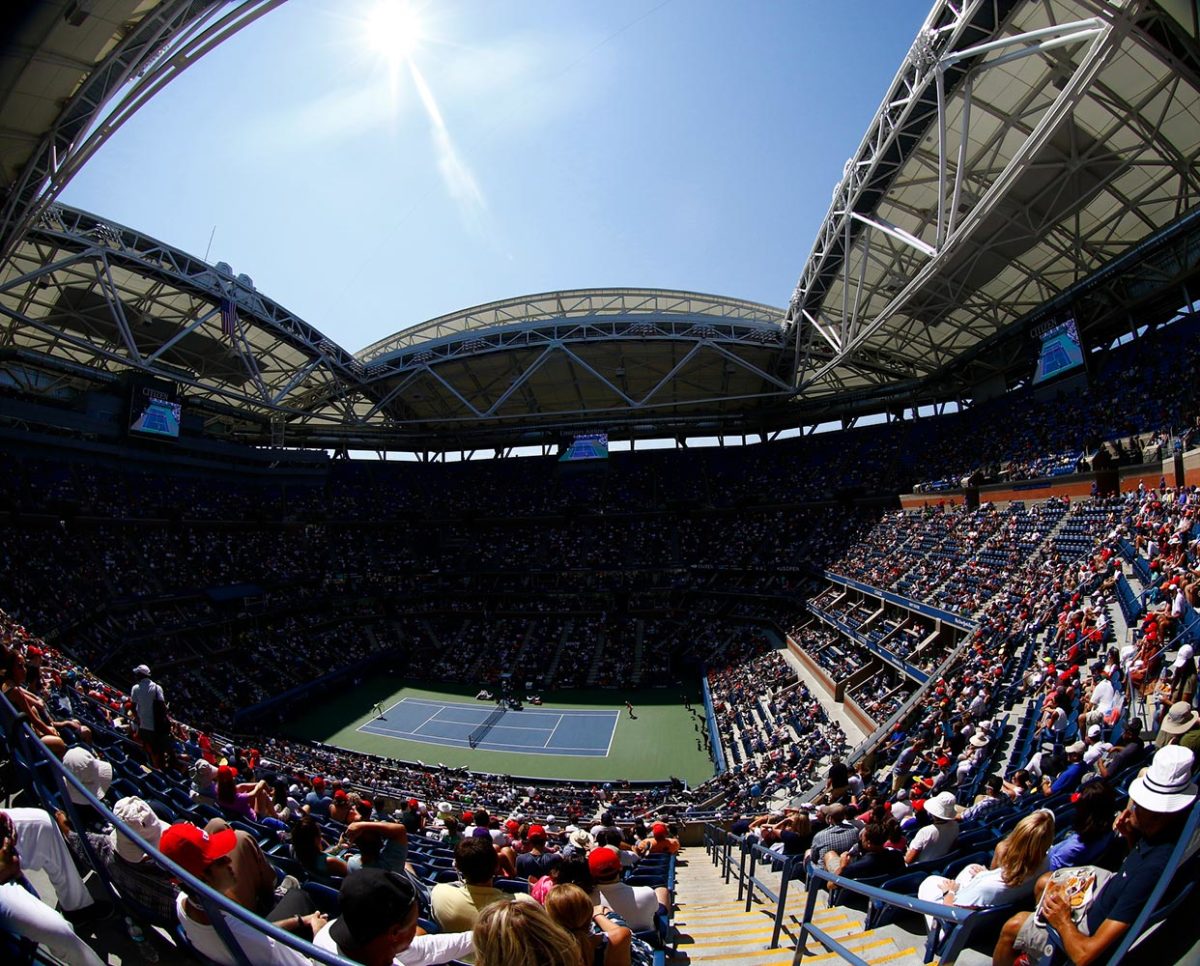
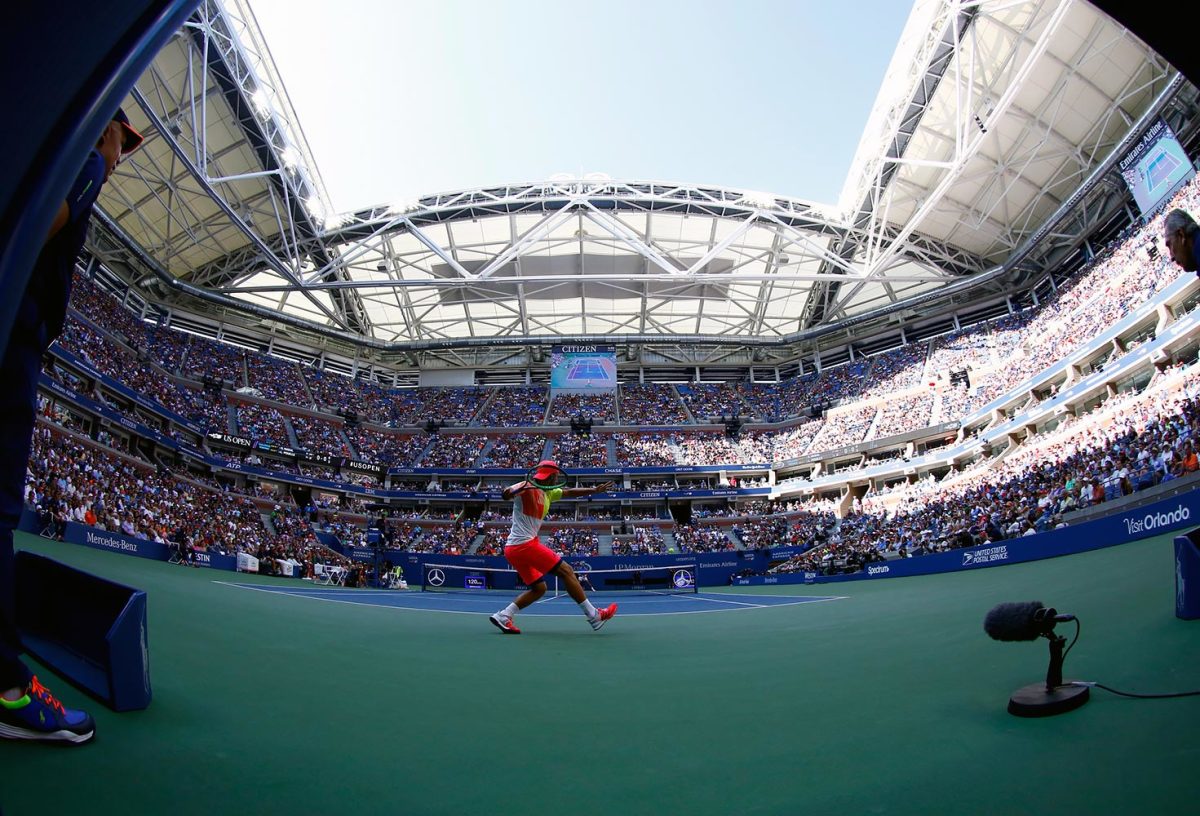
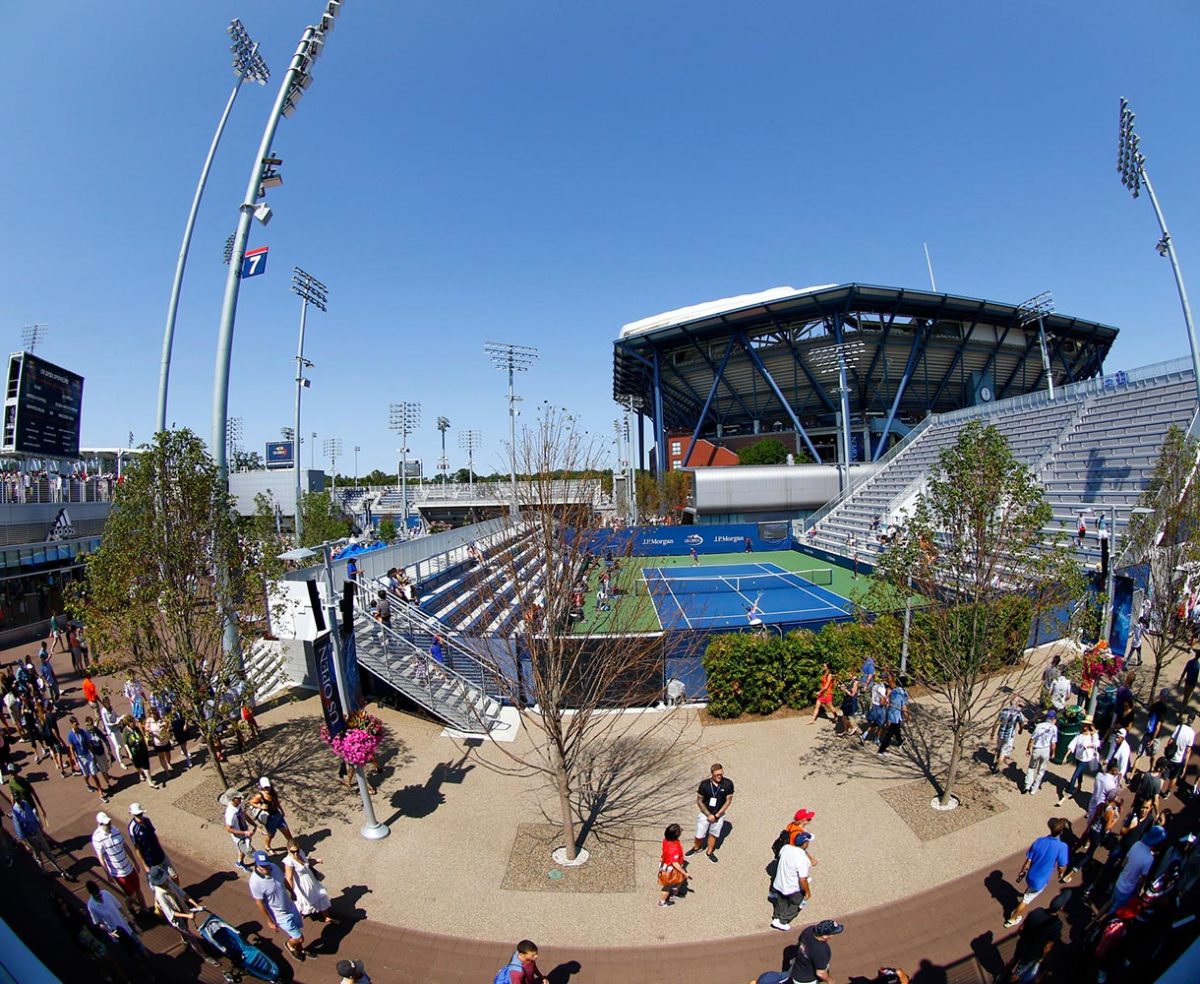
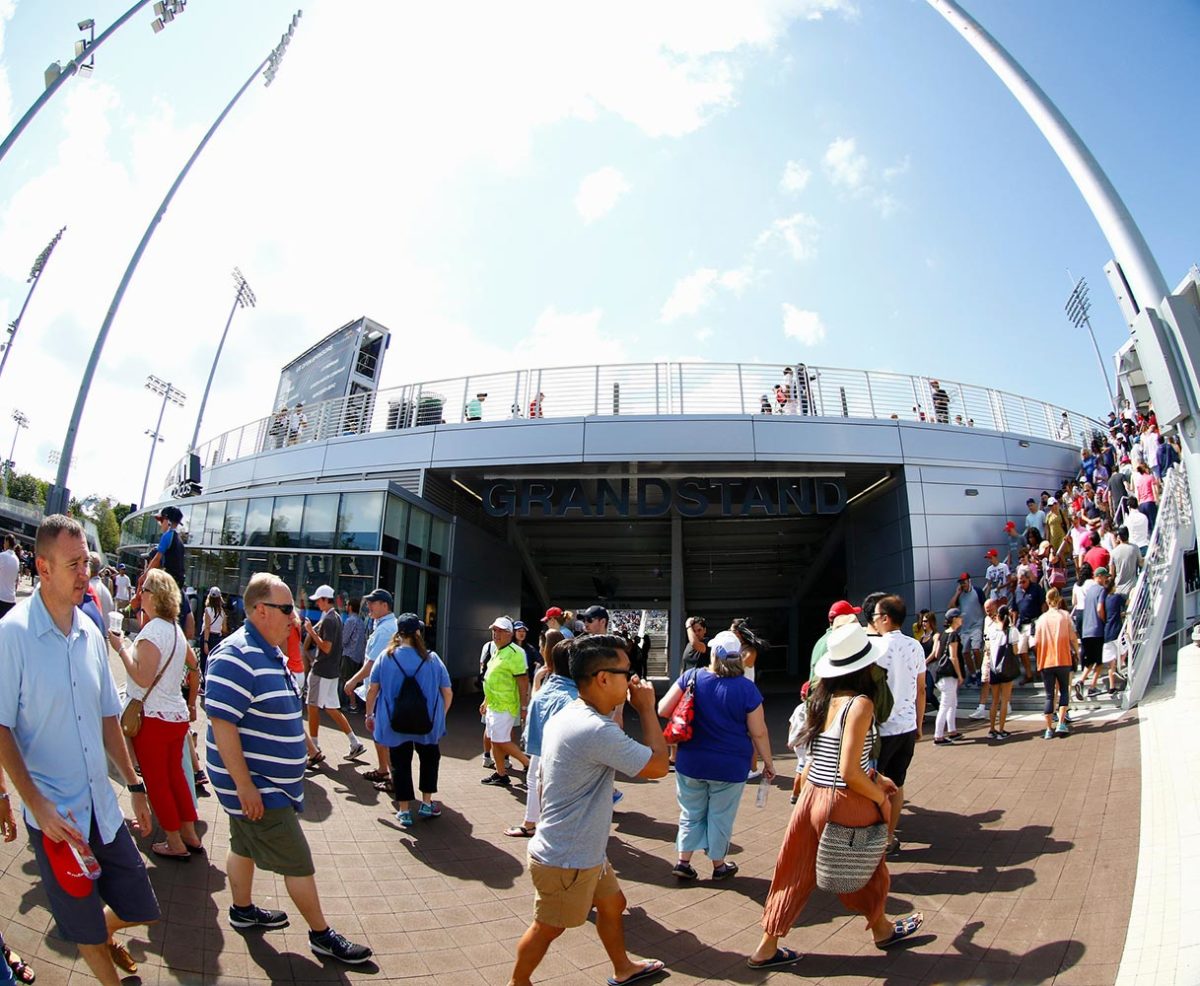
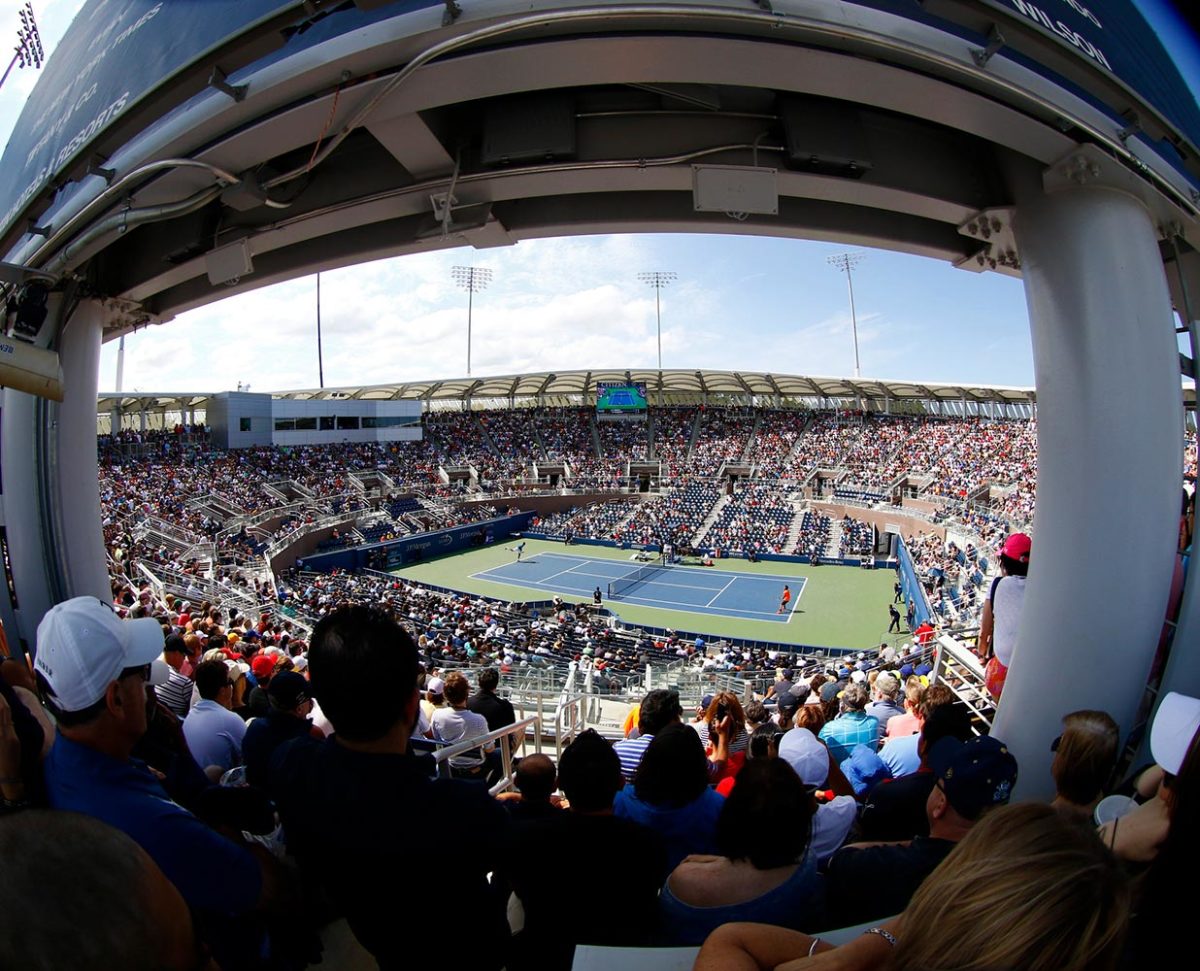
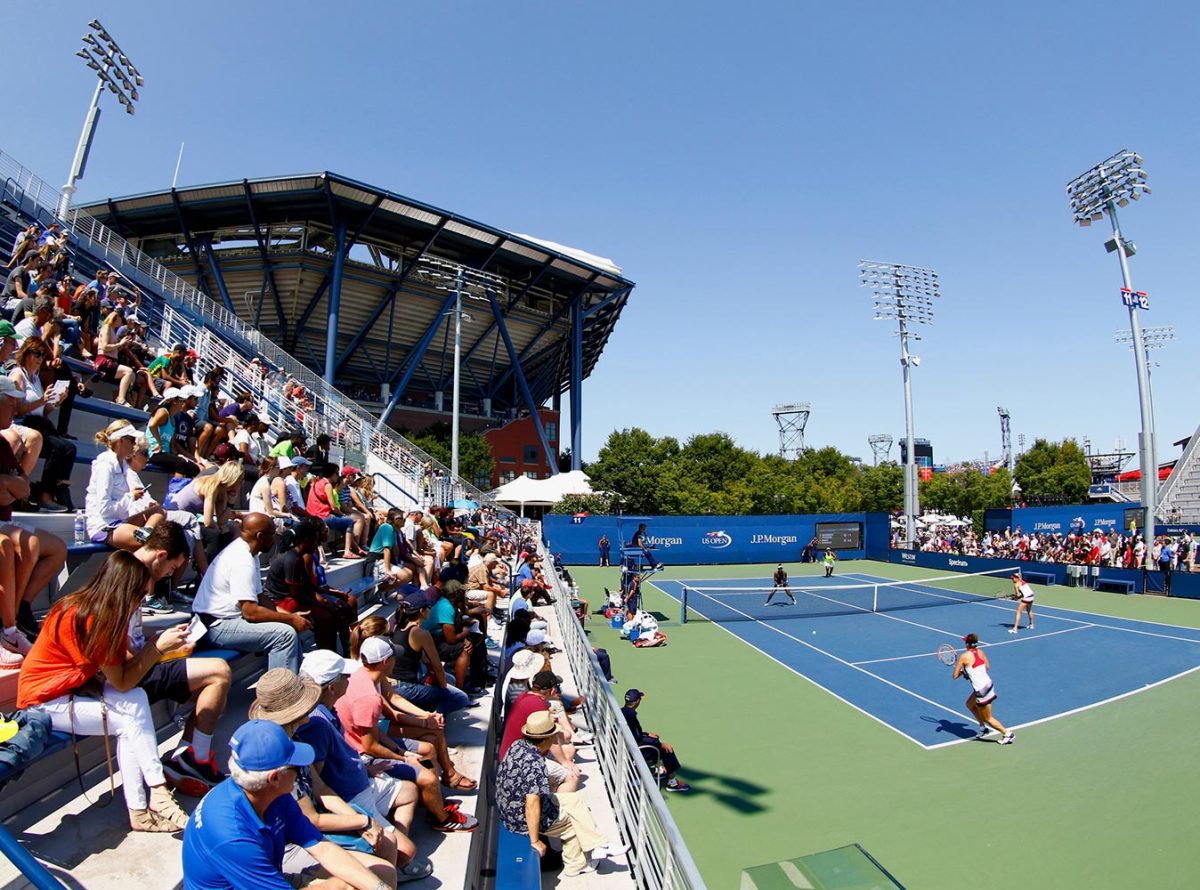
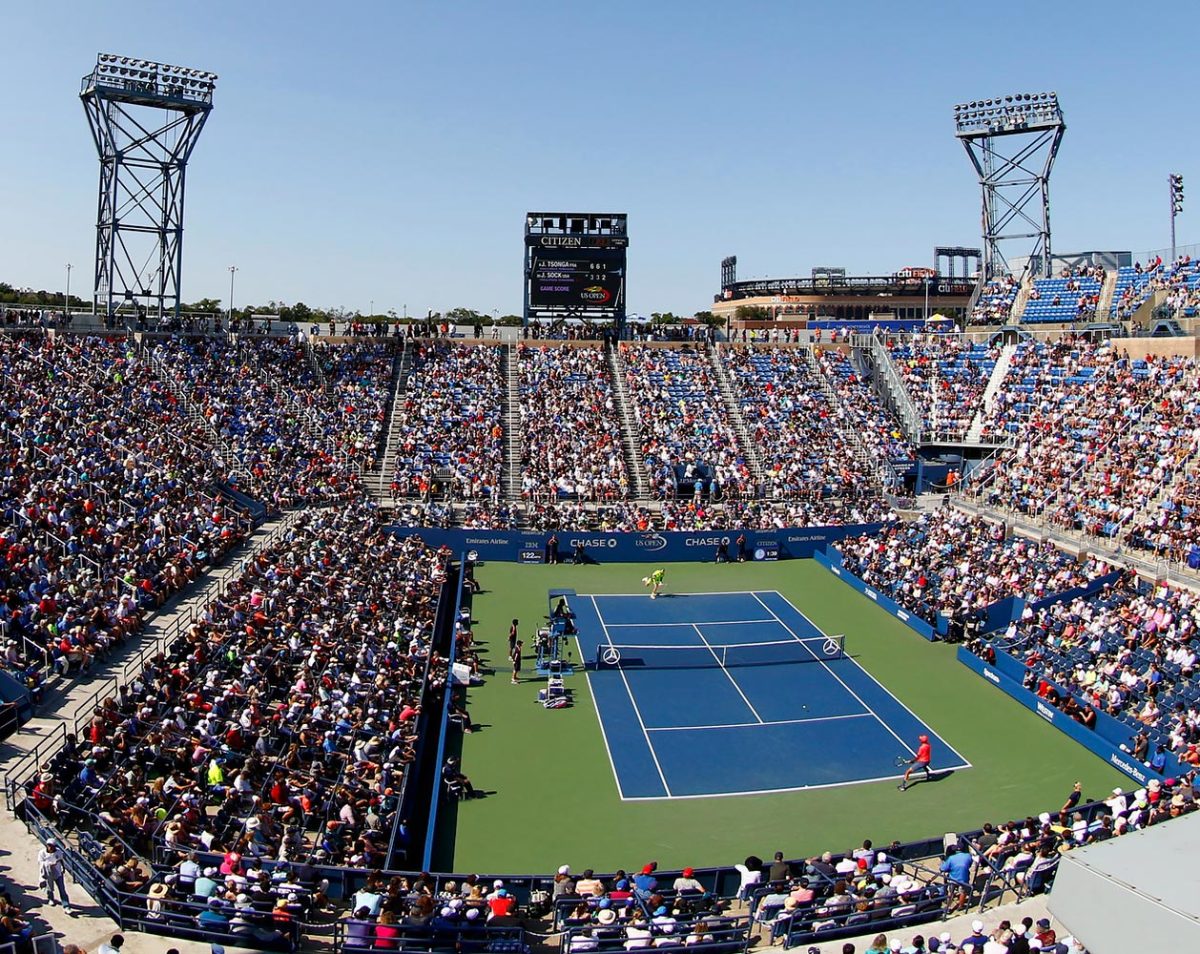
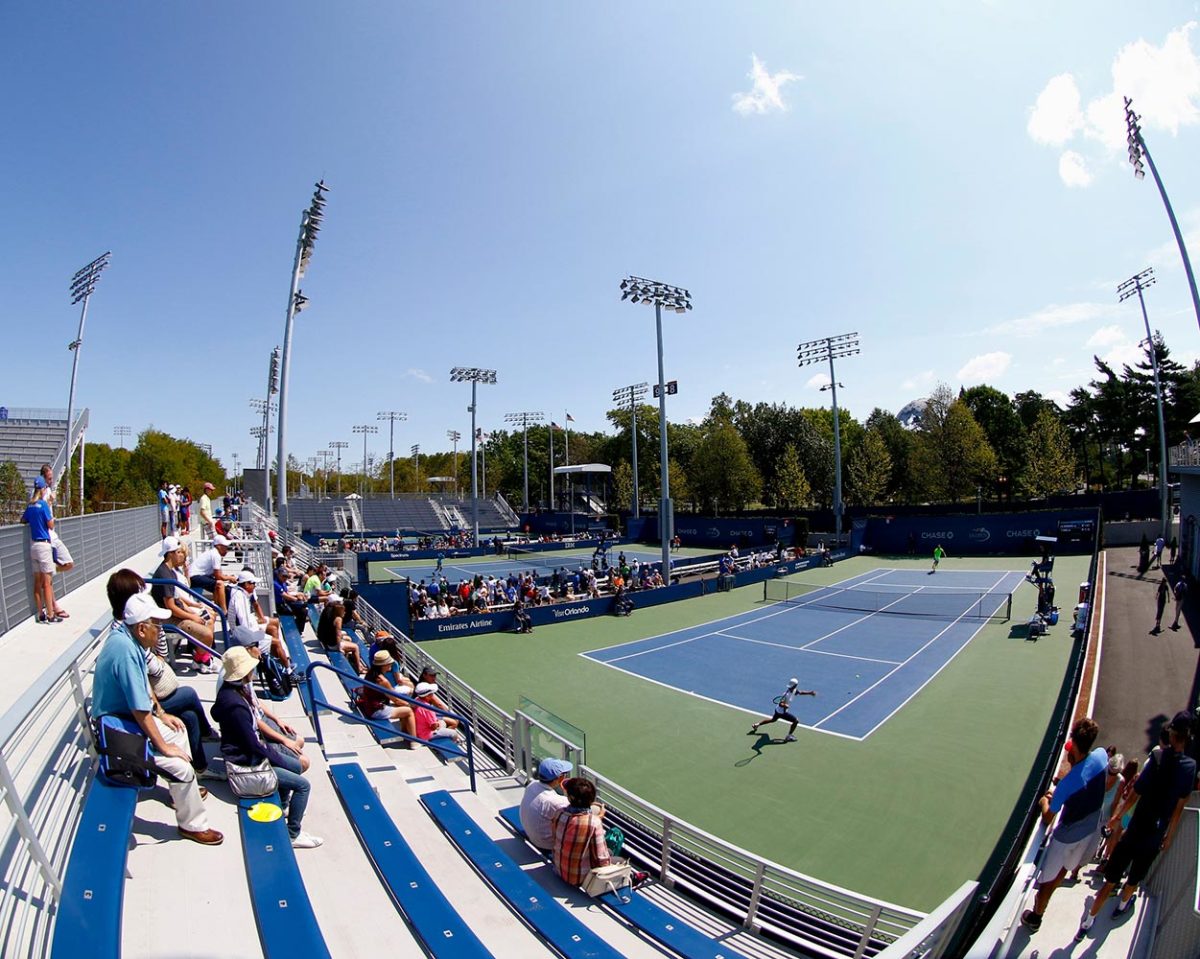
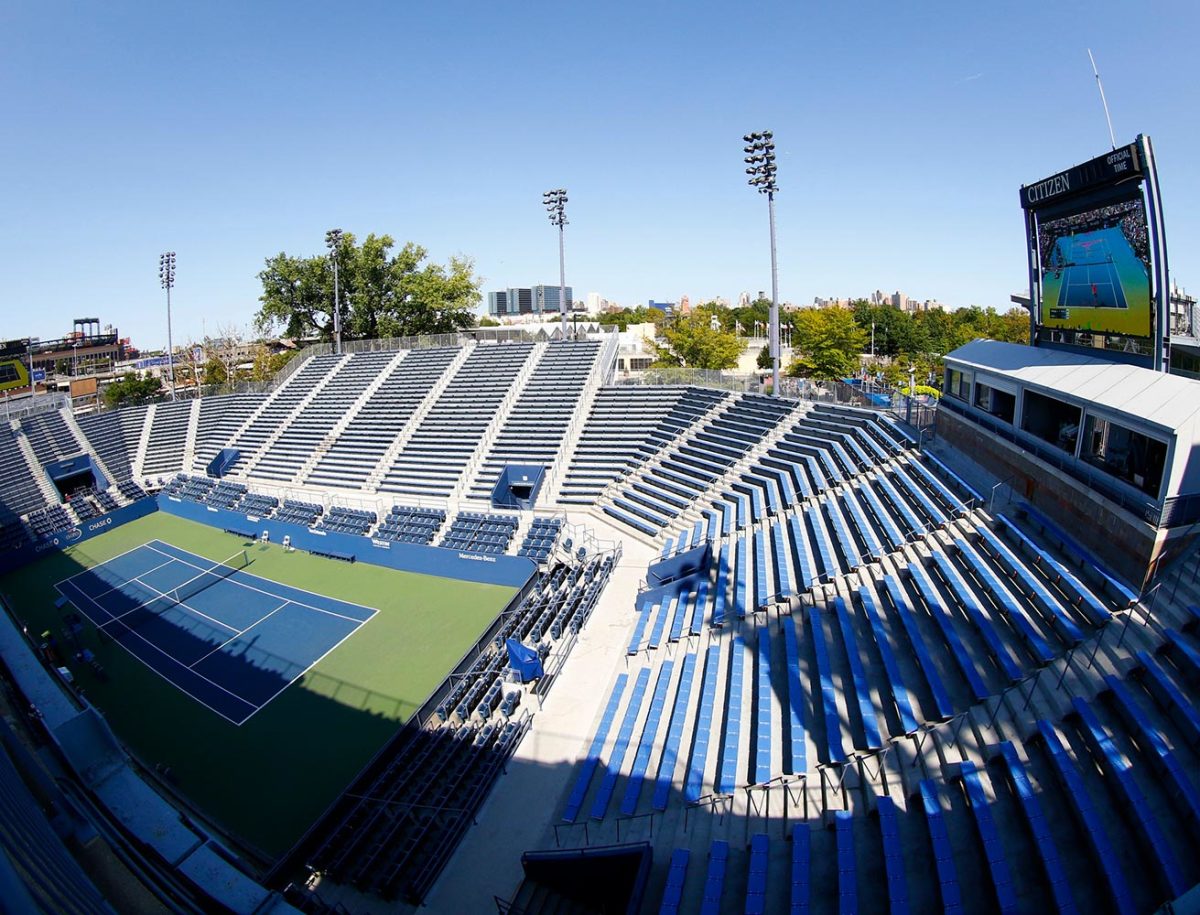
• I like the idea of having a “resident musical artist” for a two-week sporting event. I like the idea more, when aforementioned resident artist is not Phil Collins. I was trying to envision how this went down in the ESPN editing suites.
“Hey, exciting news, Carl! Phil Collins is, like, a guest artist. After every match we’re going to do these quickie video montages. So get this! We’ll have tennis highlights under a bed of music like In the Air Tonight. Another could be Another Day in Paradise. Wait a few days before busting out Sussudio. Remember that one? Man, what a great tune to roller-skate to!”
“Stop messing with me, Lenny. What’s our assignment?”
“No, really, I just told you. Phil Collins man. And get this: we have the rights and clearances for pre- and post-Genesis!”
“How gullible do you think I am?”
“Listen man, boss’ orders. Against all odds. Sorry, couldn’t resist.”
“Sure you don’t mean Bud Collins?”
“No! Phil Collins.”
“You’re telling me that this sport—which is always talking about appealing to kids and shedding its stodgy image and expanding its pluralism–is scoring matches with the auditory pop ‘80s dreck sung by this guy who dumped his wife by fax, corrupted Peter Gabriel and launched a thousand hate sites? Someone in corporate thought this was a good idea?”
“That’s what I’m telling you, Carl. And, no, there wasn’t some misunderstanding, there wasn’t some kind of mistake…. See what I did there? You’re not laughing.”
• Why did Benjamin Becker lose to Kei Nishikori? Don’t ask his coach.
Bernard Tomic fined $10,000 for vulgar comments during U.S. Open
• Quote of the tournament Award goes to Jiri Vanek, coach of Karolina Pliskova. Here’s what he told the great Chris Clarey: “I said, ‘You just beat Serena; you are in the final!’ And she’s like, ‘Let me be me. Go away!’ And I said, ‘No, come on! Let’s go make some funny!’ And she was like, ‘No, no, no. Be quiet, and let me be.’ She’s happy with her phone. You know the young.”
• One of the dirty secrets about working these events: you don't always get to watch much of the tennis coverage. I didn’t, for instance, see the piece on Stevie Johnson that some of you—and some in the locker room—found shabby and disrespectful. (I can’t find a clip online either.) I didn’t hear the references to the architect as a reflexive “he.” I can say that: I like the addition of Jason Goodall. I like the McEnroe-McEnroe combo. (Especially since Patrick McEnroe can really swing freely now that he’s no longer with the USTA.) And you should check out Tom Rinaldi’s new book.
I will repeat: one of the quirks of TV is the absence of a scoreboard or many objective measures. Be assured that if you love Broadcaster X for her restraint, you have a counterpart muttering that she’s insufferably boring. If you hate Broadcaster Y for his abrasive opinions, someone else is extoling his unbridled candor. And if someone is good at task X but bad at task Y (“He’s a good interviewer but shouldn’t be calling matches”) resort to the TV fallback and blame the producer!
In the case of Tennis Channel—soon to be in 60 million homes, you’ll be happy to know—thanks for your feedback and know that it all gets read and considered. (Really, no brown shoes with a gray suit?) Author an article or a blog post and it’s on the writer, good or bad, Television is so much more collaborative. In the case of TC, the feature team led by Shelby Coleman deserves attention and praise. Overall, think of TC as the David Ferrer of networks. Perhaps not blessed with the raw materials or firepower of some counterparts; but a plucky talent maximizer that finds resourceful ways to achieve and overachieve.
• It’s no secret that media is a smidge volatile these days. This was in vivid relief when the announcement came that Chase and Grey Goose were sponsoring Andy Roddick’s Periscope. My first instinct: ESPN is paying an unholy amount of money for the broadcast rights to the U S. Open; and yet two U.S Open sponsors are financing a livestream of a competing broadcast? Looked at another way, ESPN still has the broadcast rights. Maybe Roddick is plumping TV viewership, even if it means turning off the sound on the ESPN commentary to enjoy his second screen experience. It all goes to the same riddle everyone is trying to solve right now. In some ways, the instability and uncertainty is unsettling in the extreme; in other ways it’s cool and exhilarating.
• If you enjoyed the SI and SI.com tennis coverage these past few weeks, your first debt of gratitude is to Jamie Lisanti.
• Notice how much the stadium resembles to logo of the company that has monied up millions for naming rights. Your choices are a) evil b) genius c) eerie coincidence:
Anyone else notice the similarities between the architecture and the logo of the naming rights sponsor? pic.twitter.com/SxiBQFAhAT
— Jon Wertheim (@jon_wertheim) September 6, 2016
